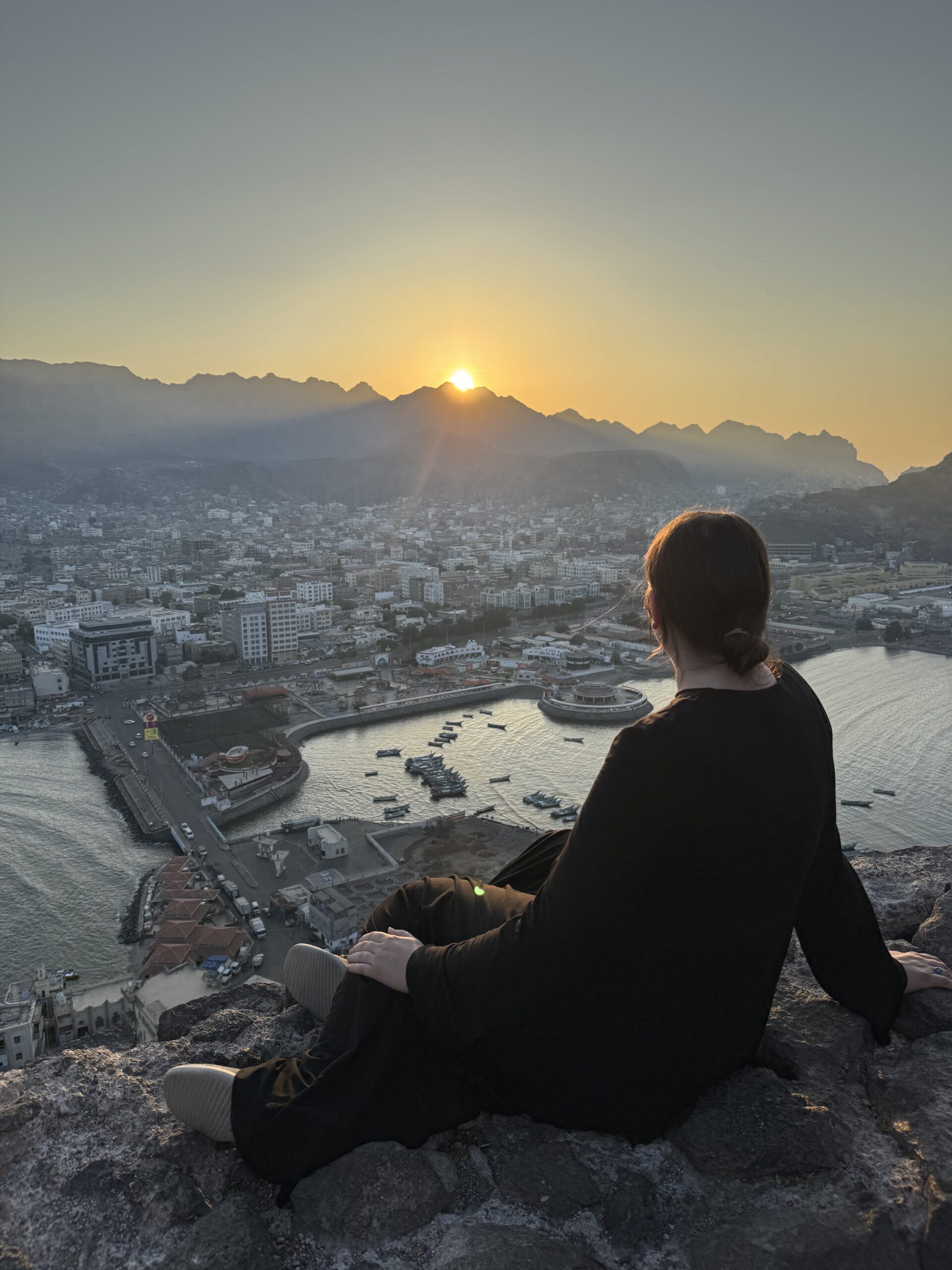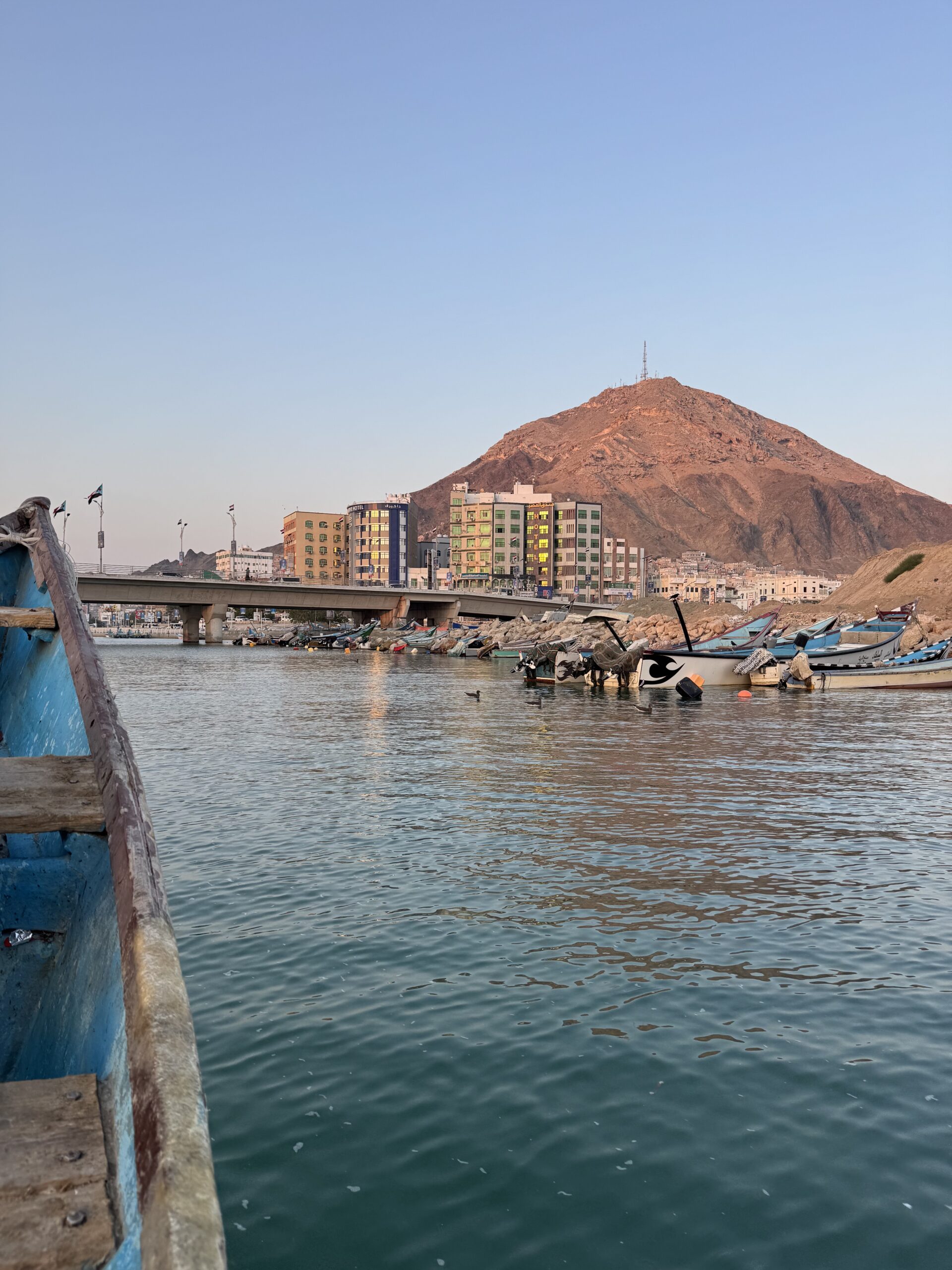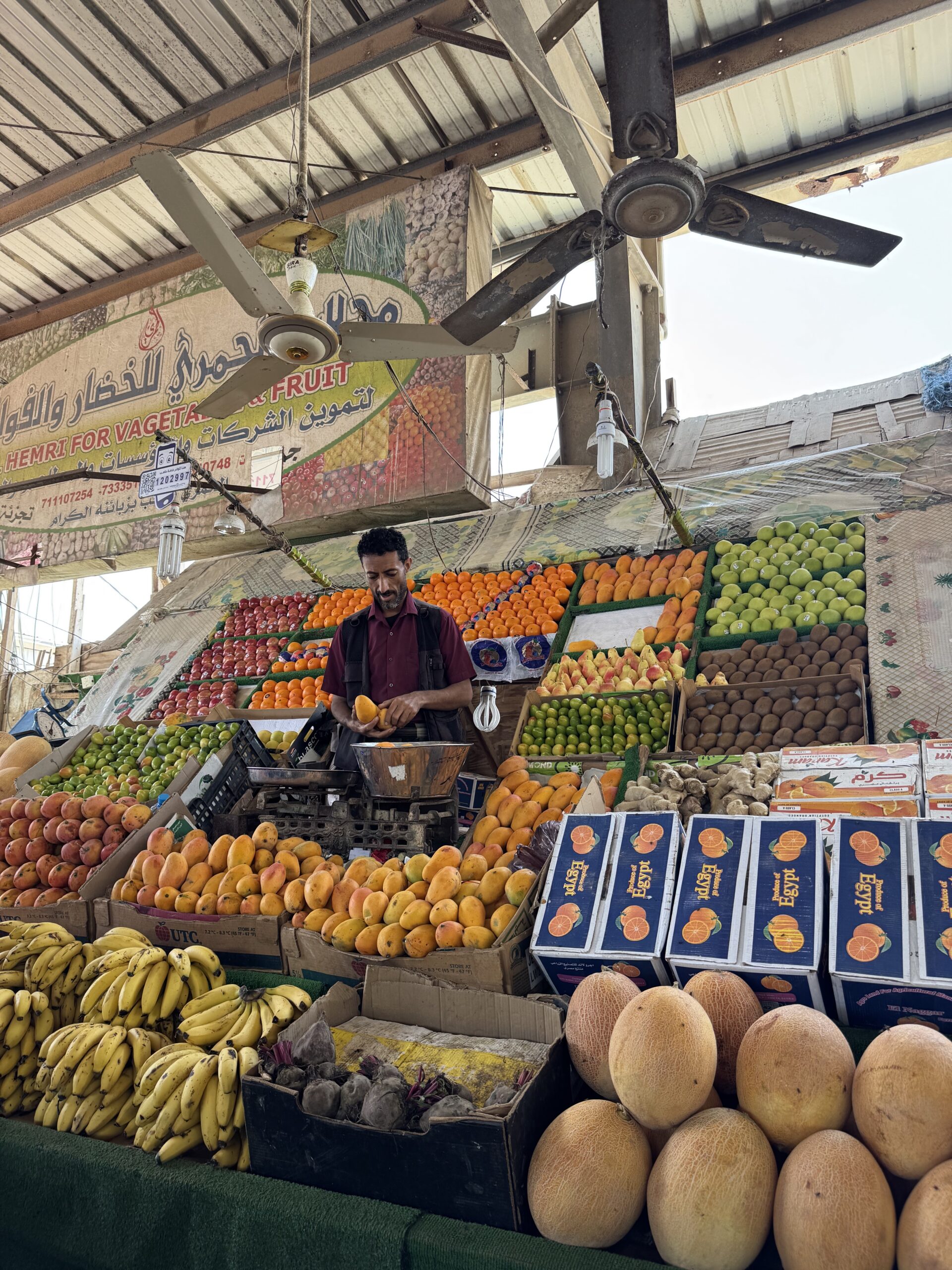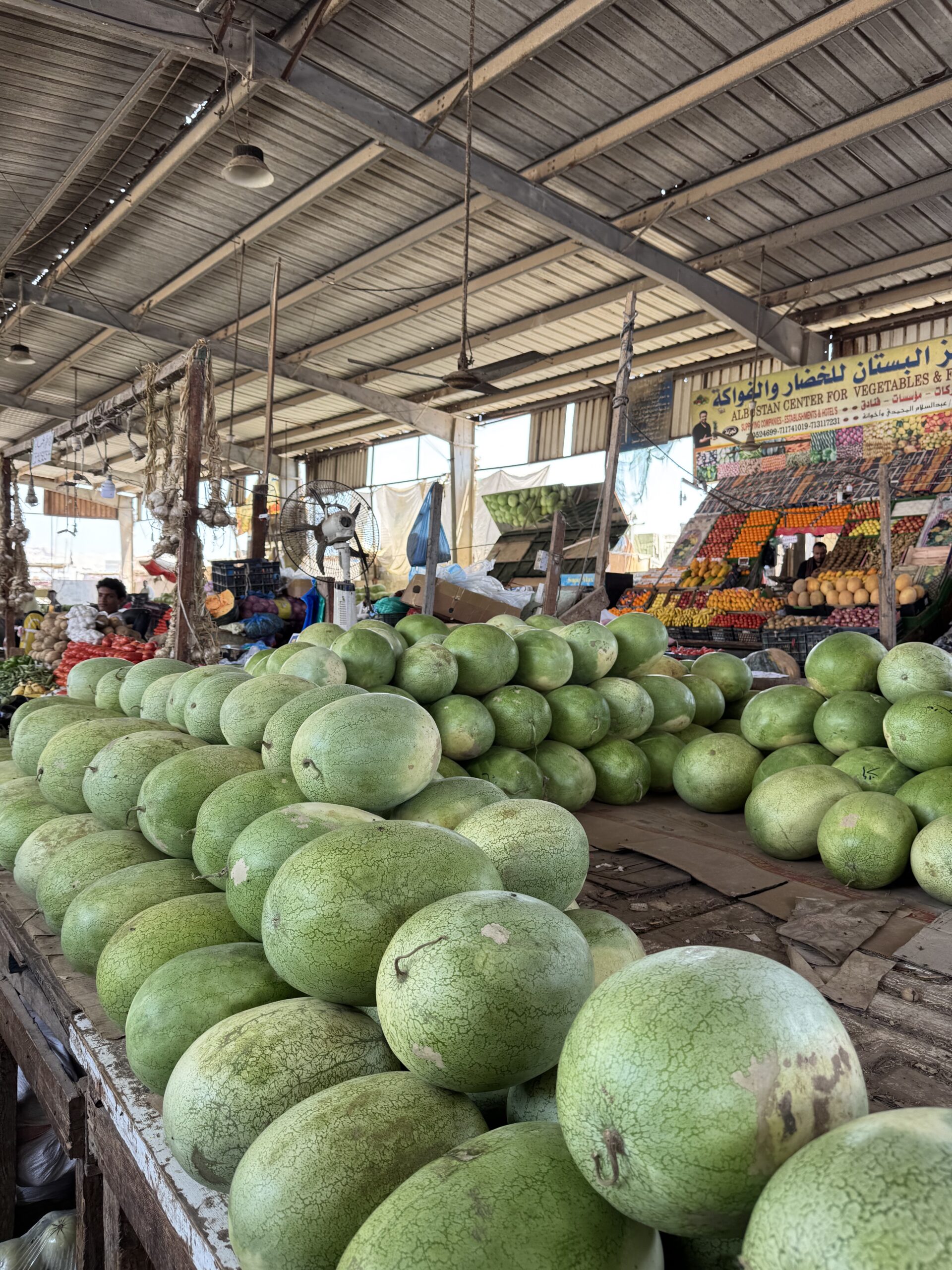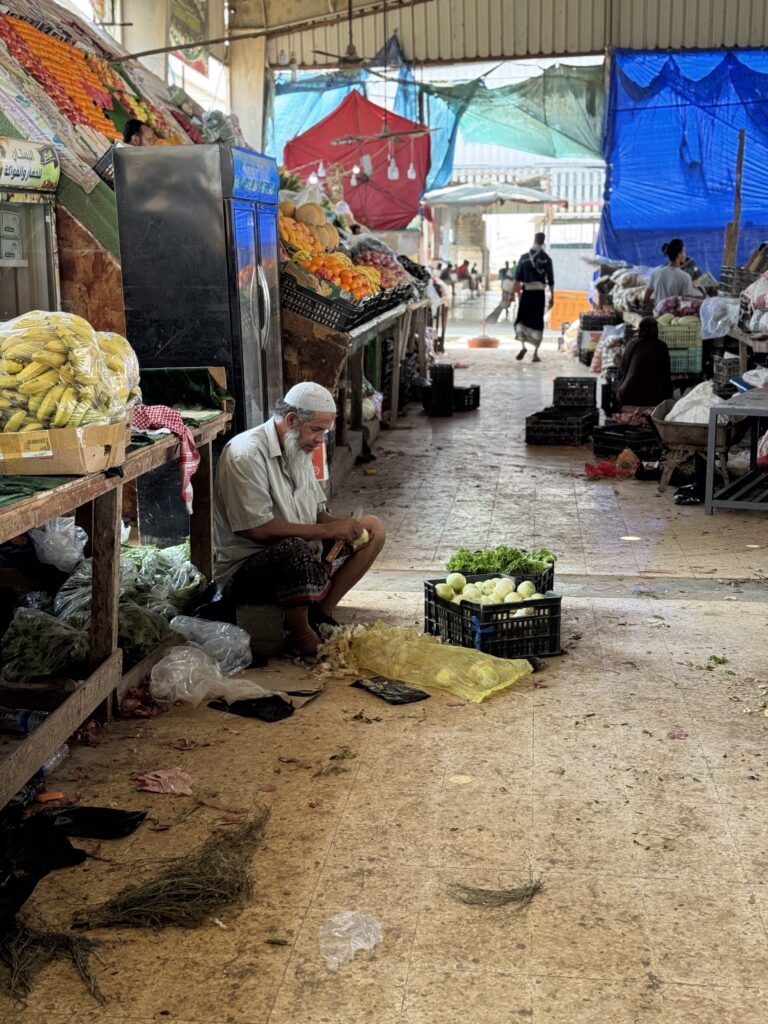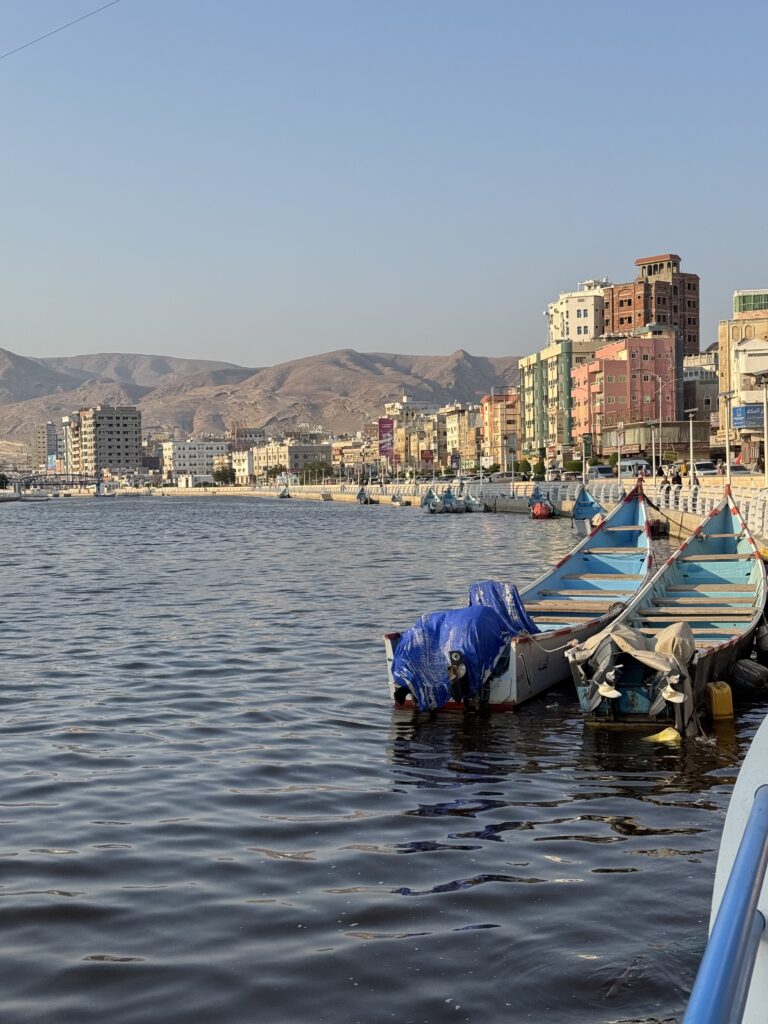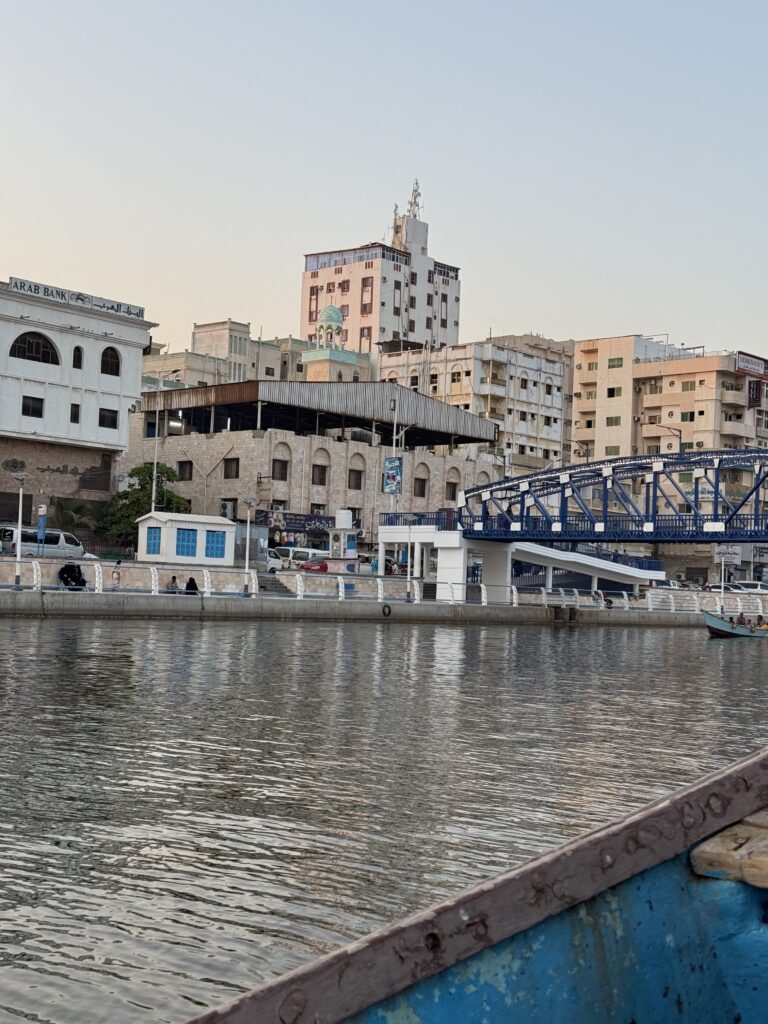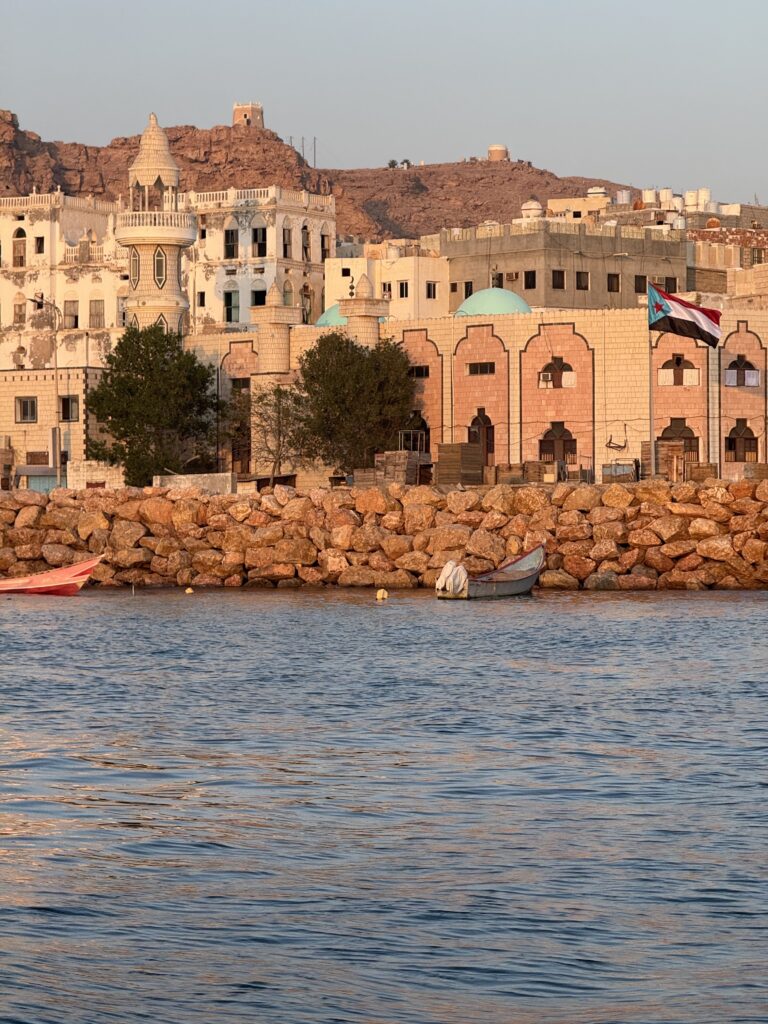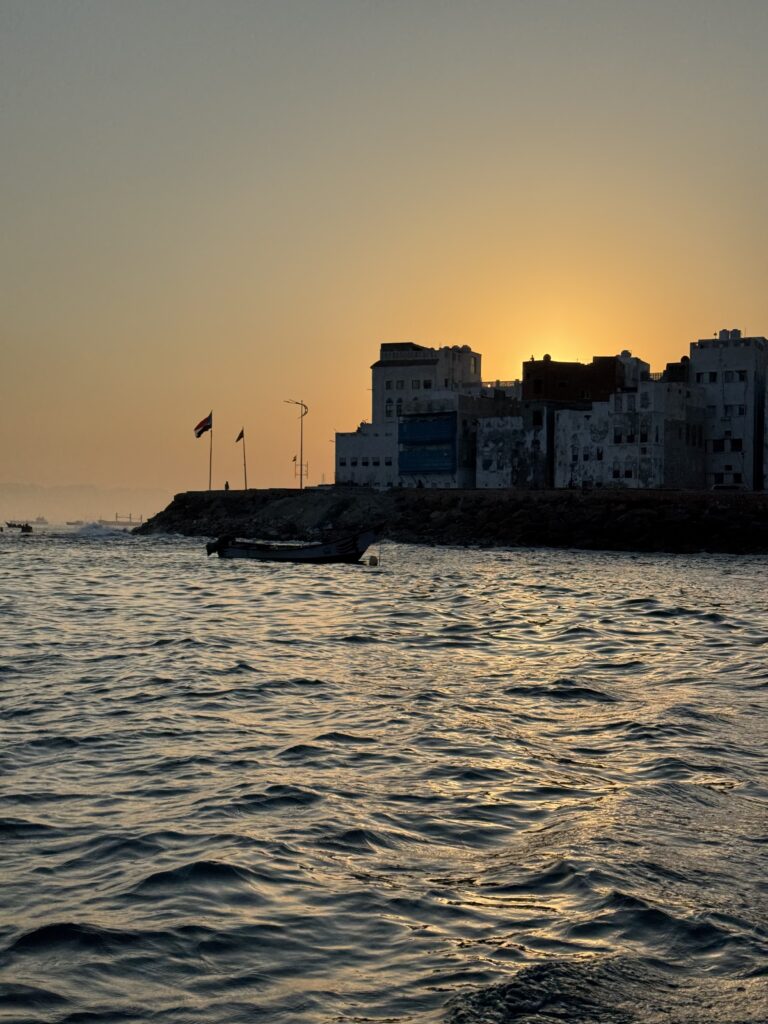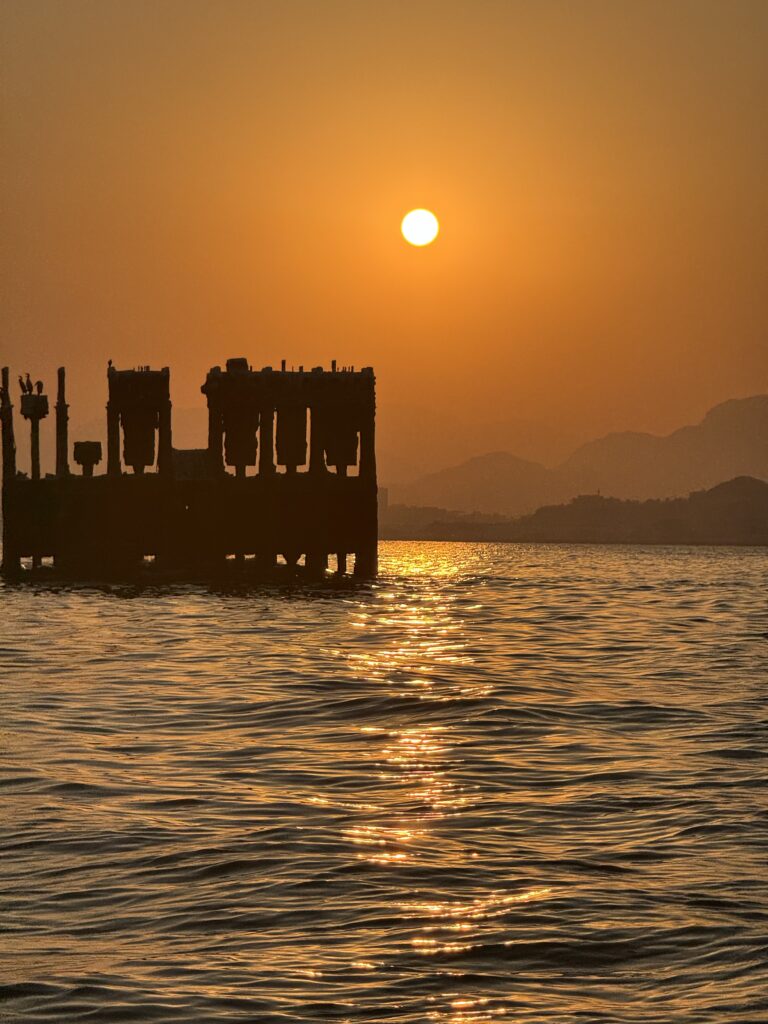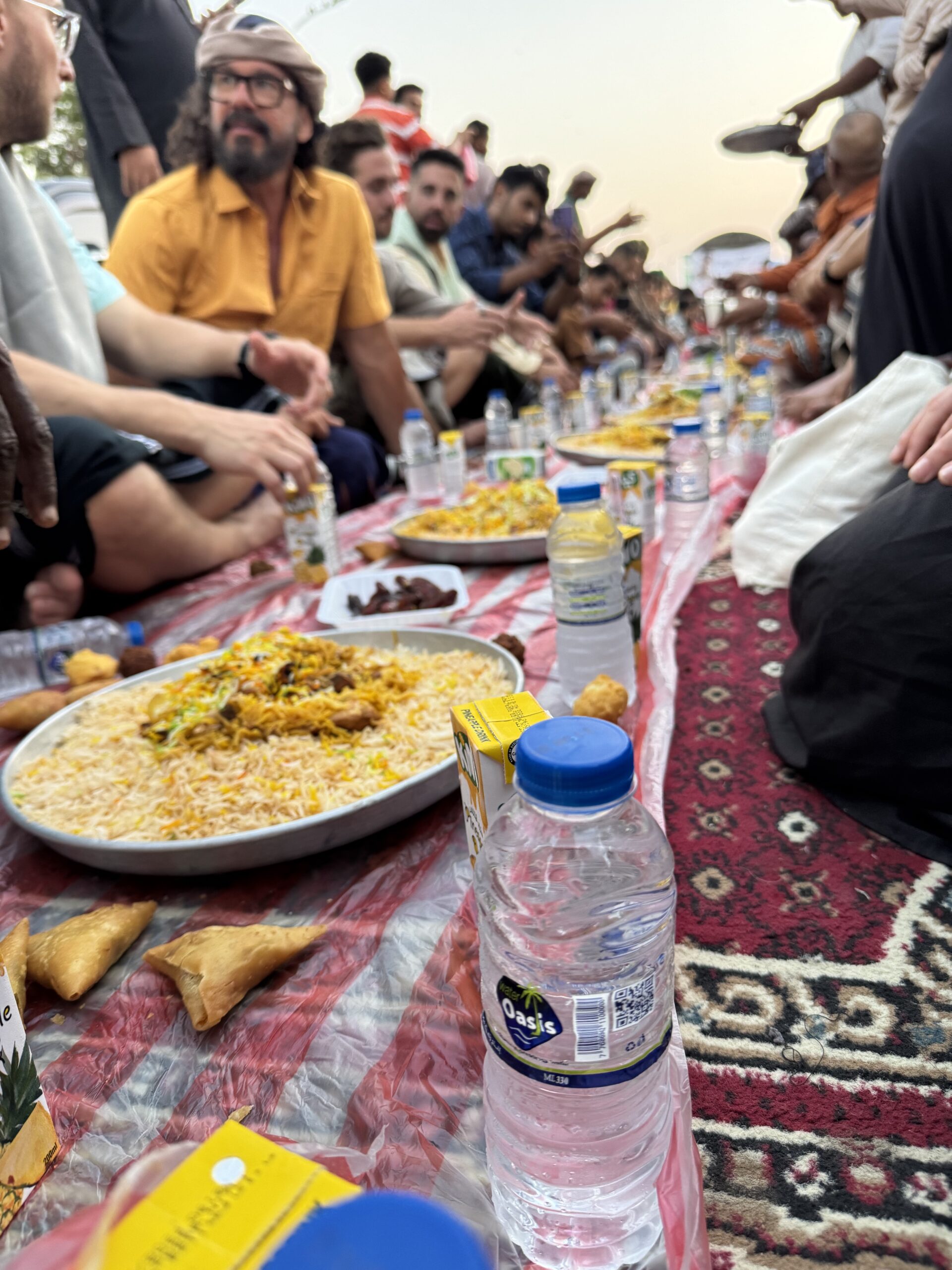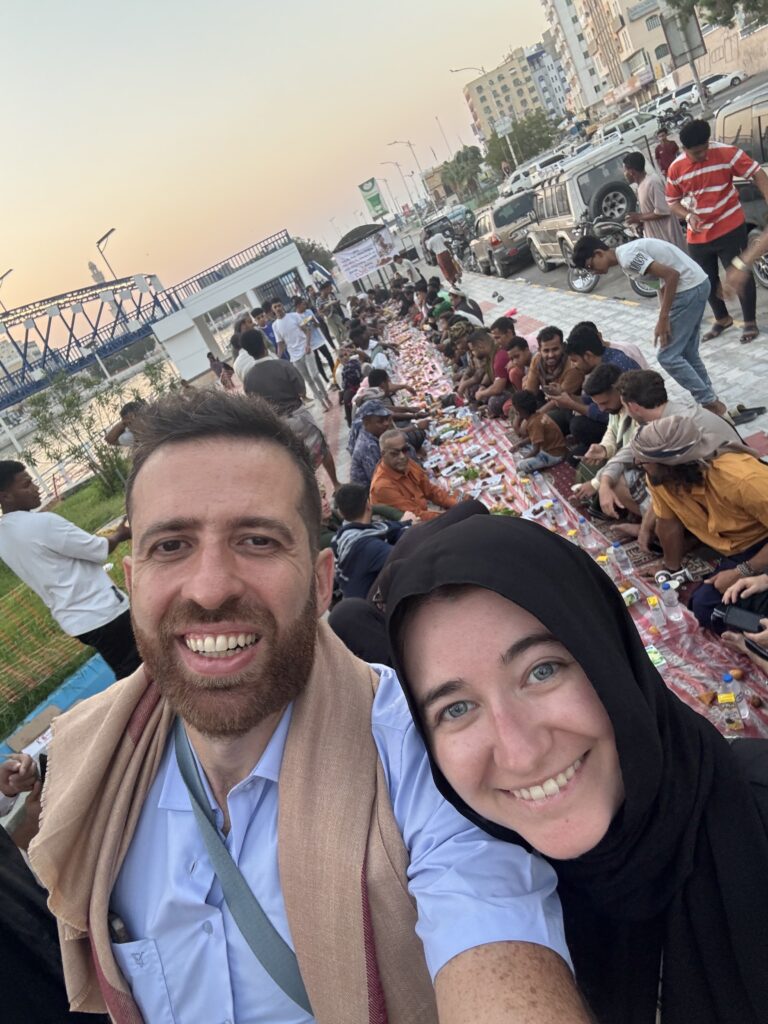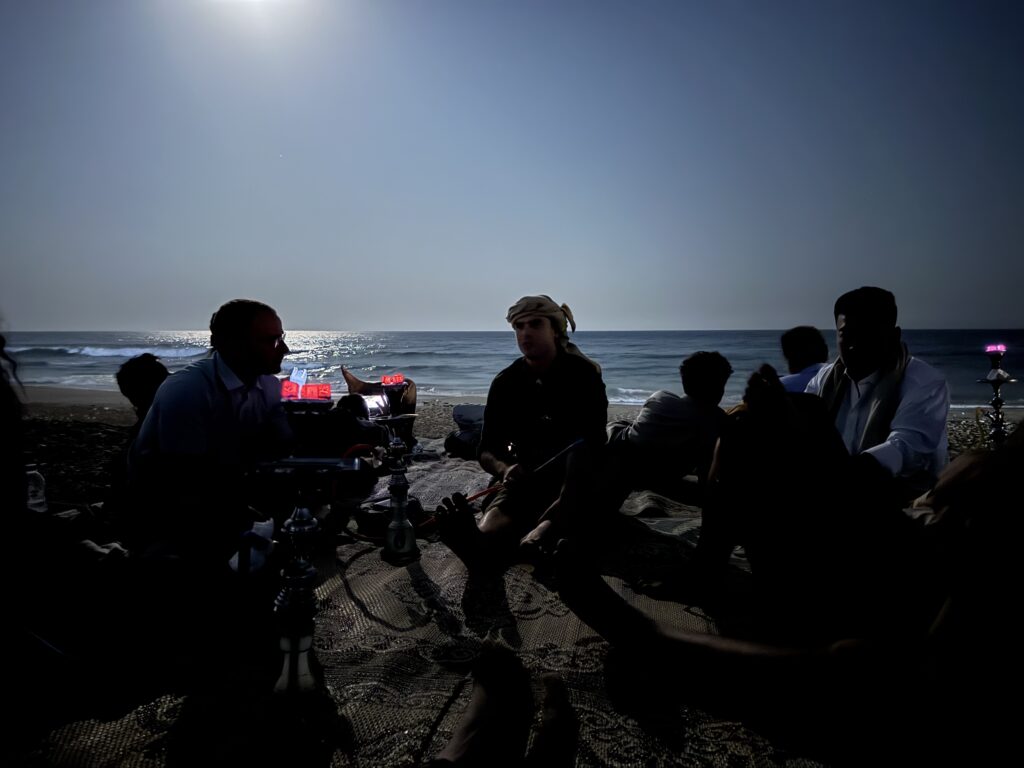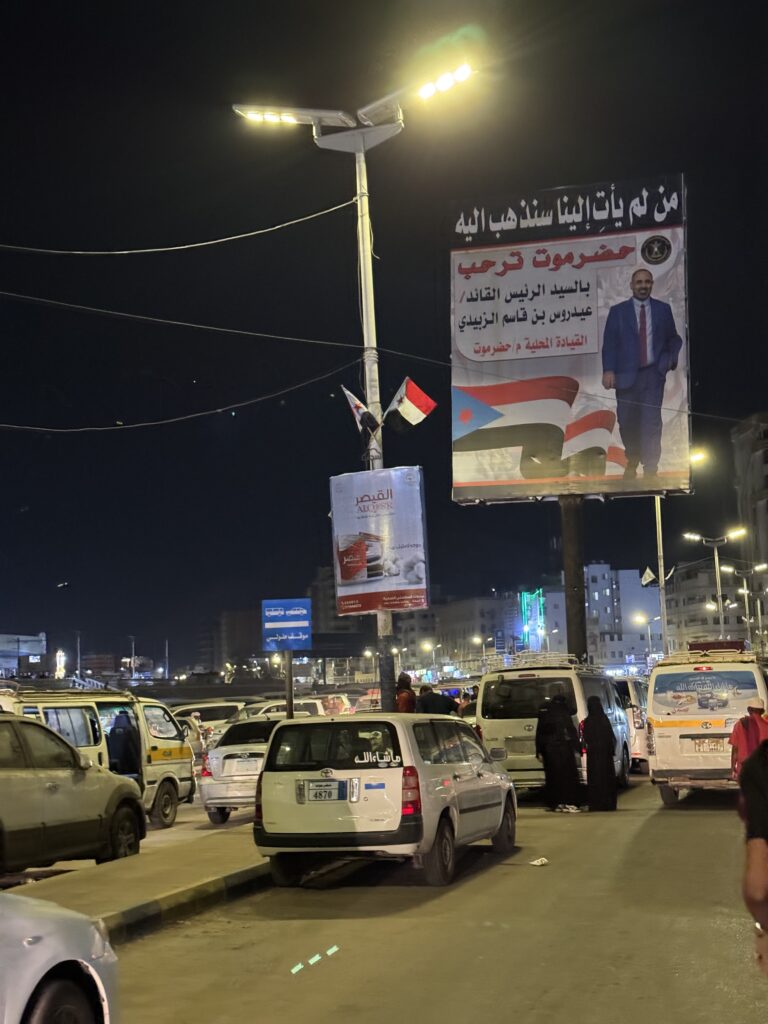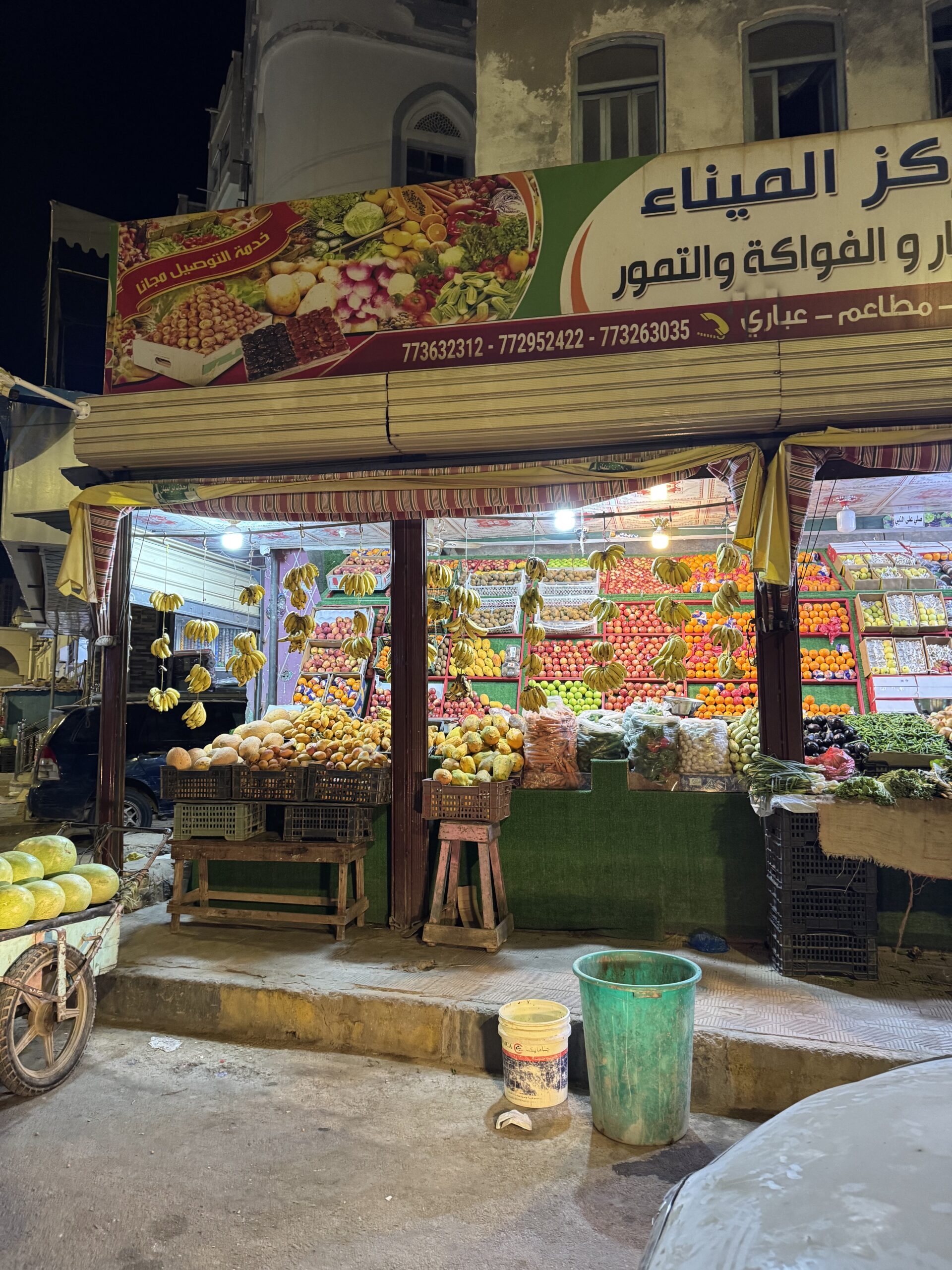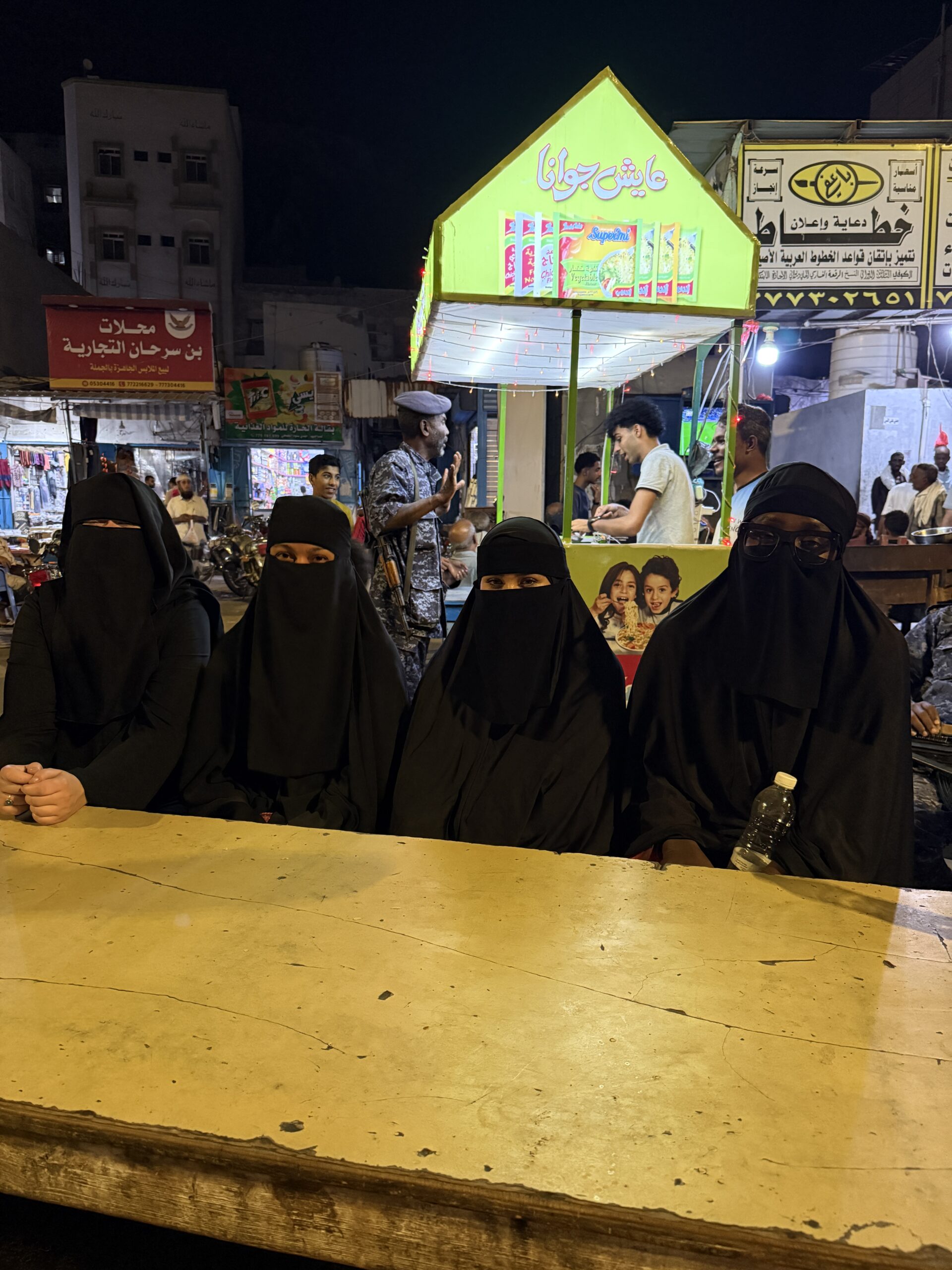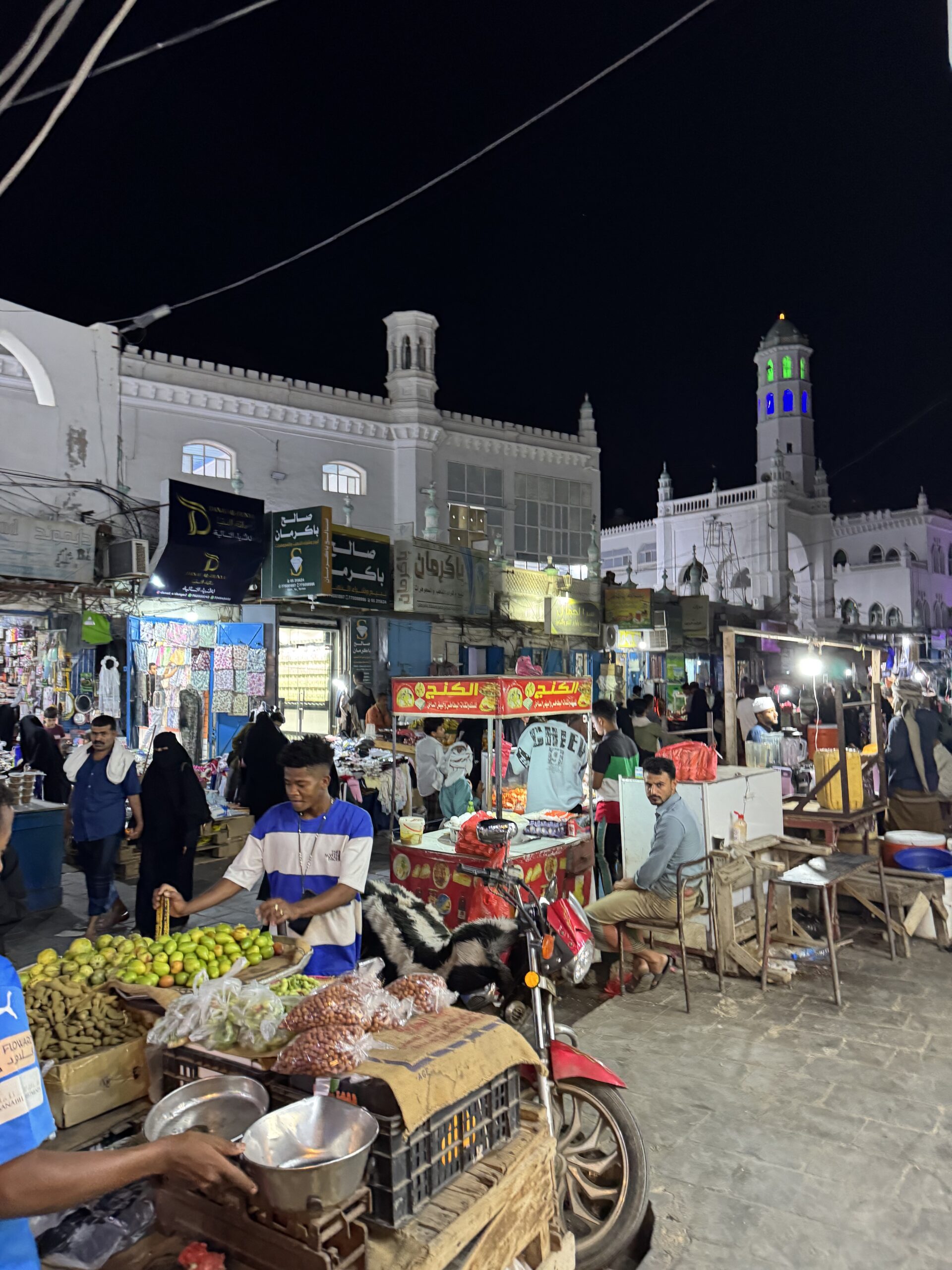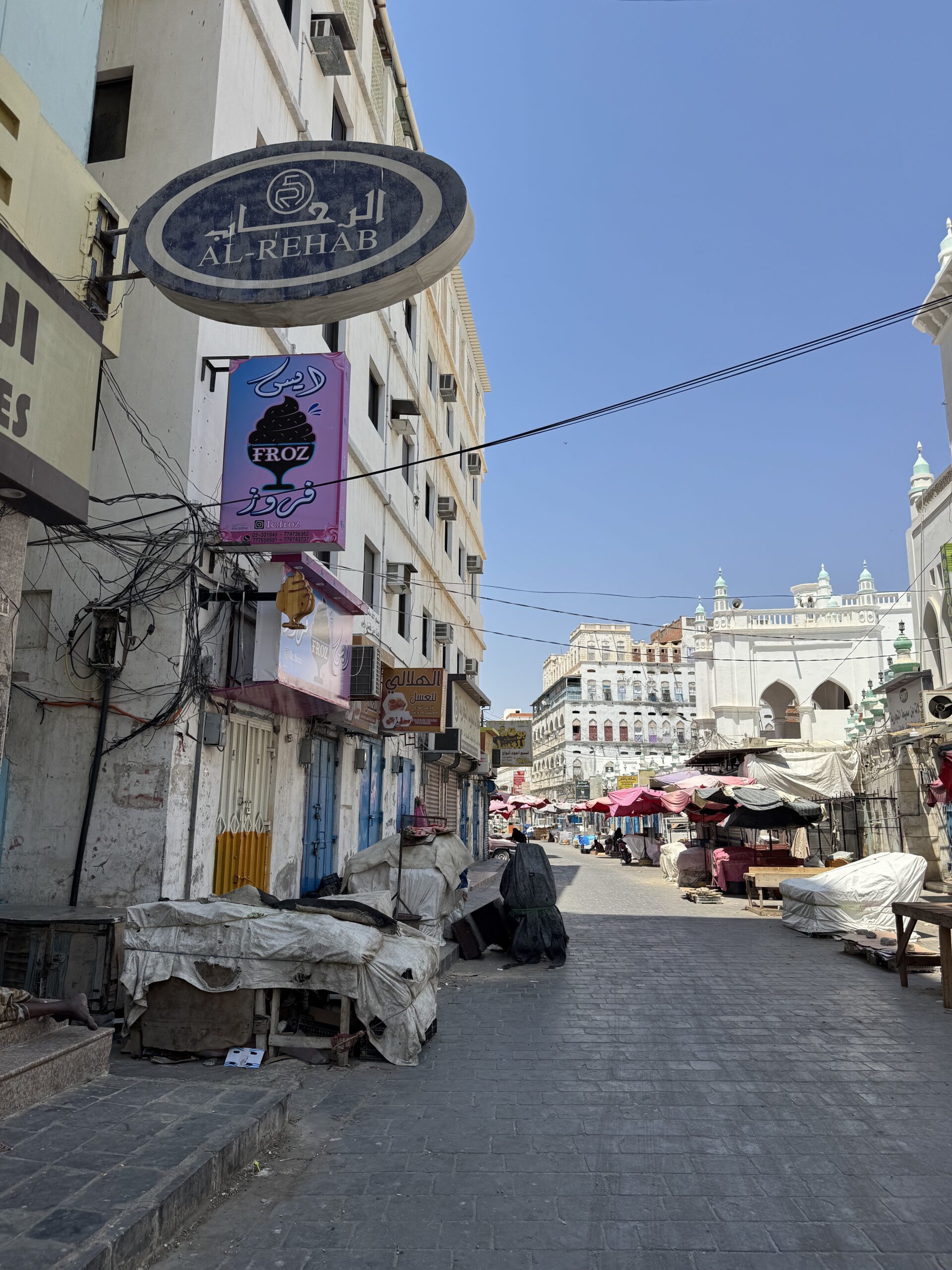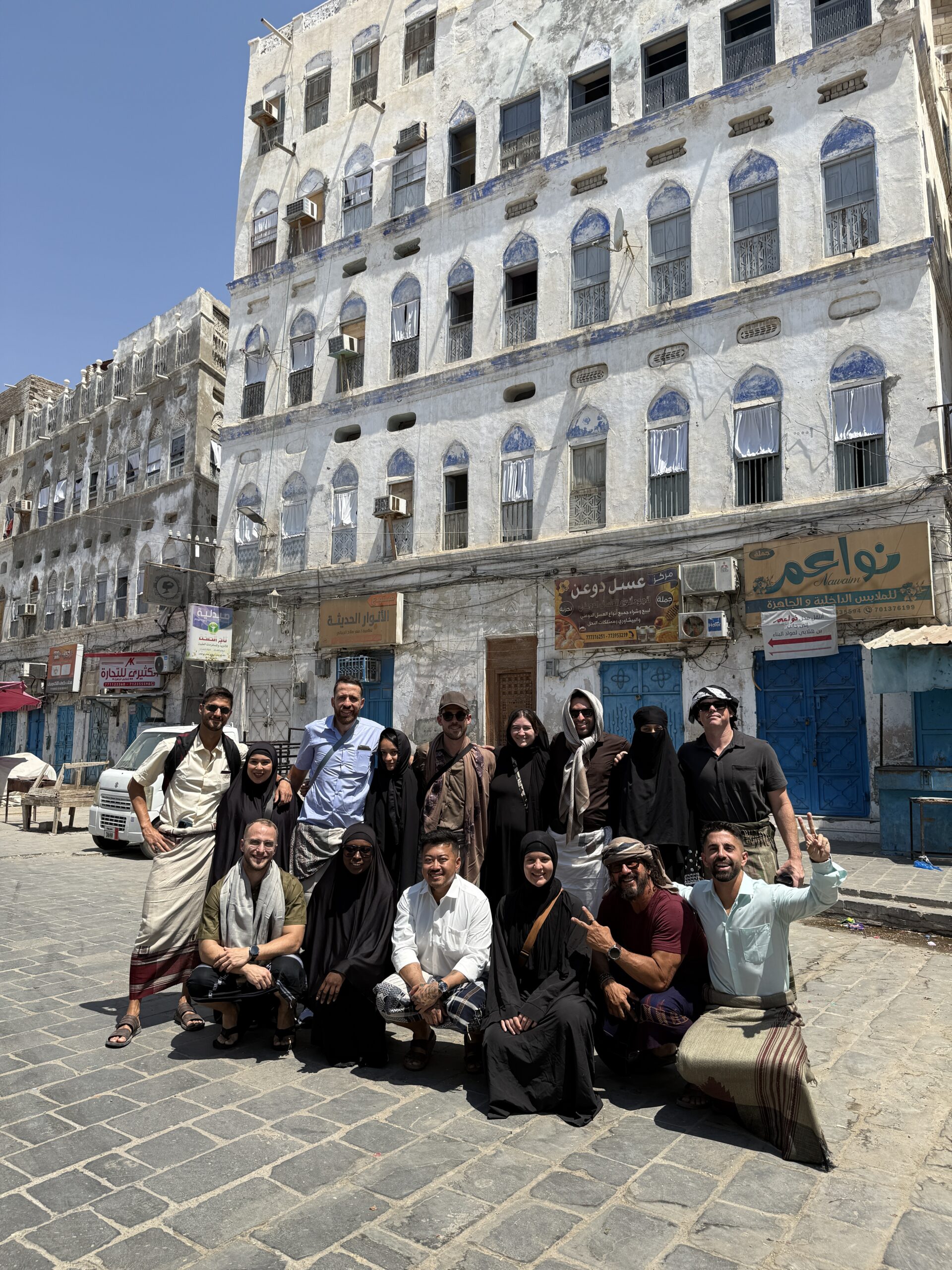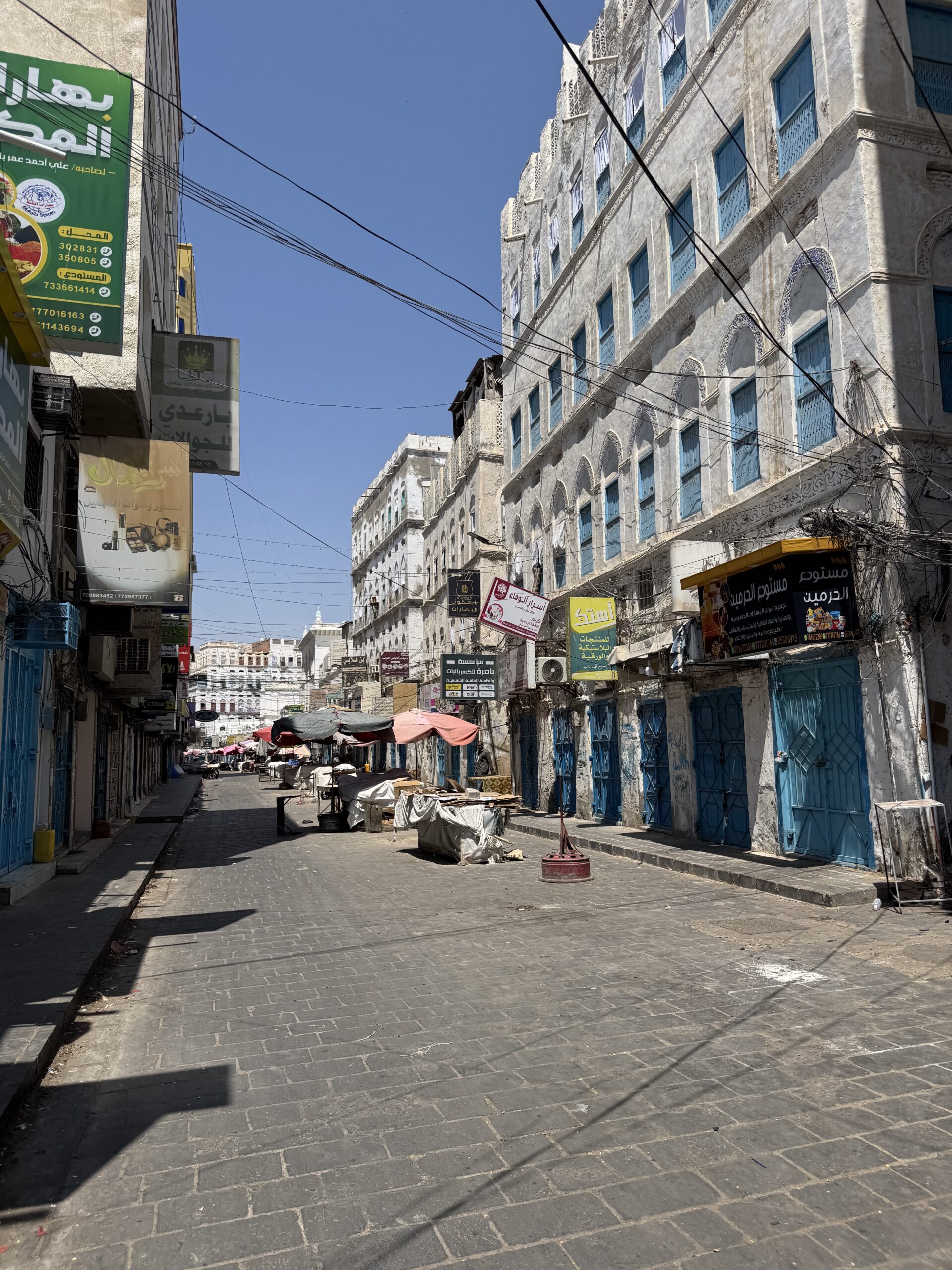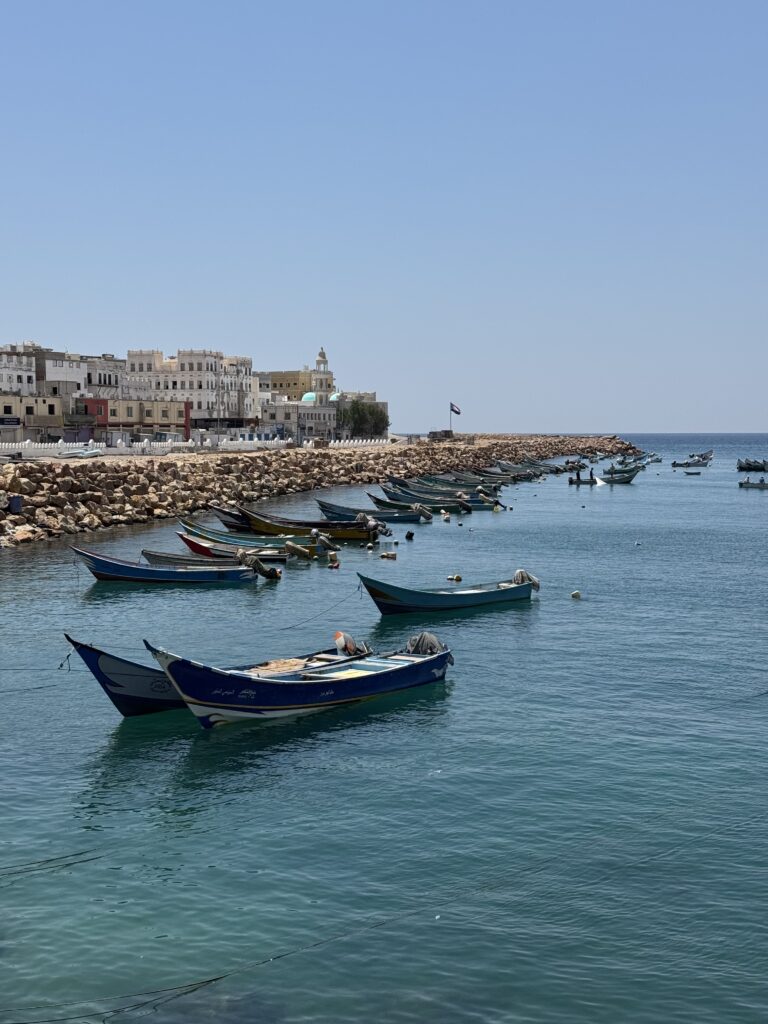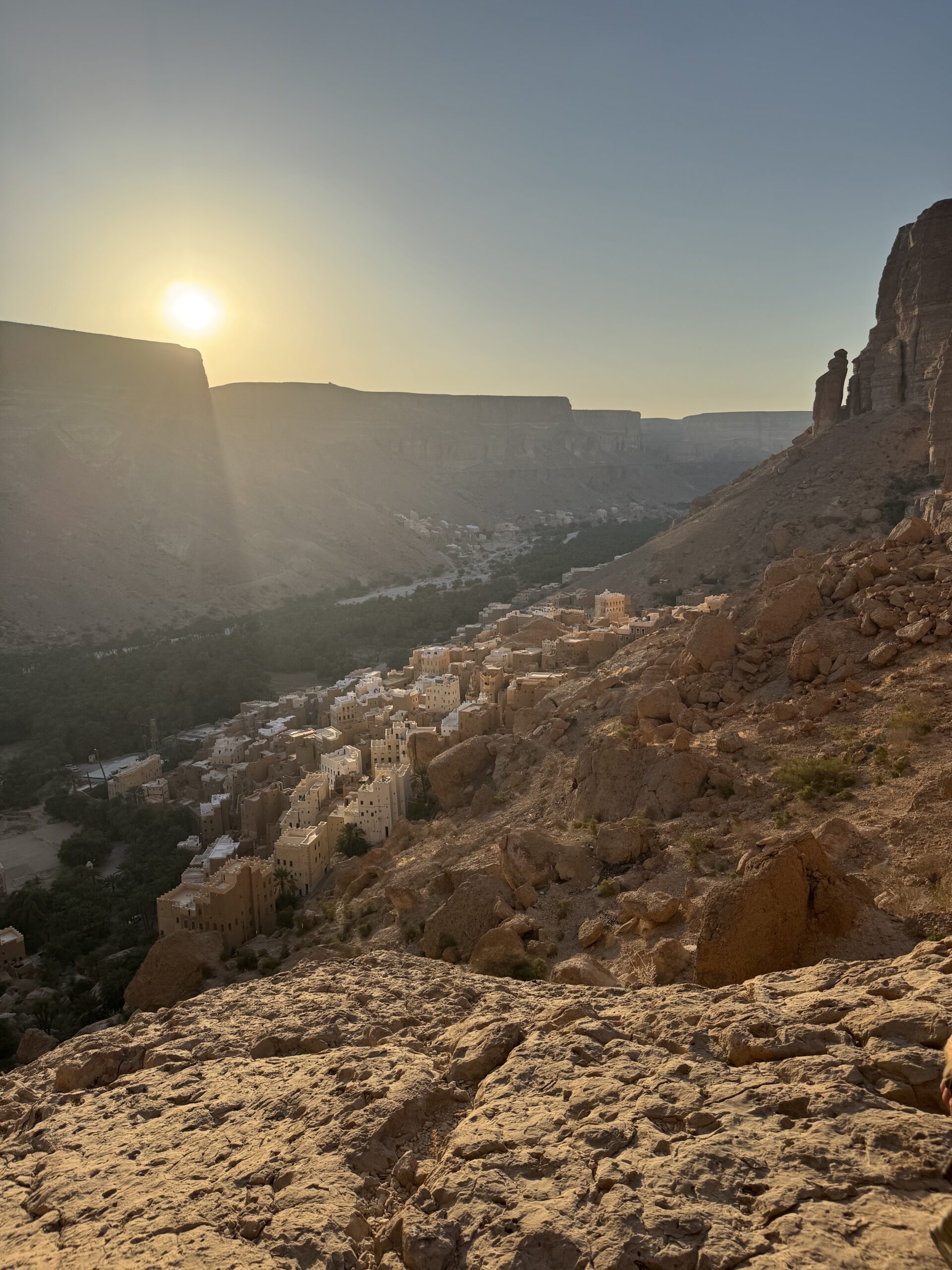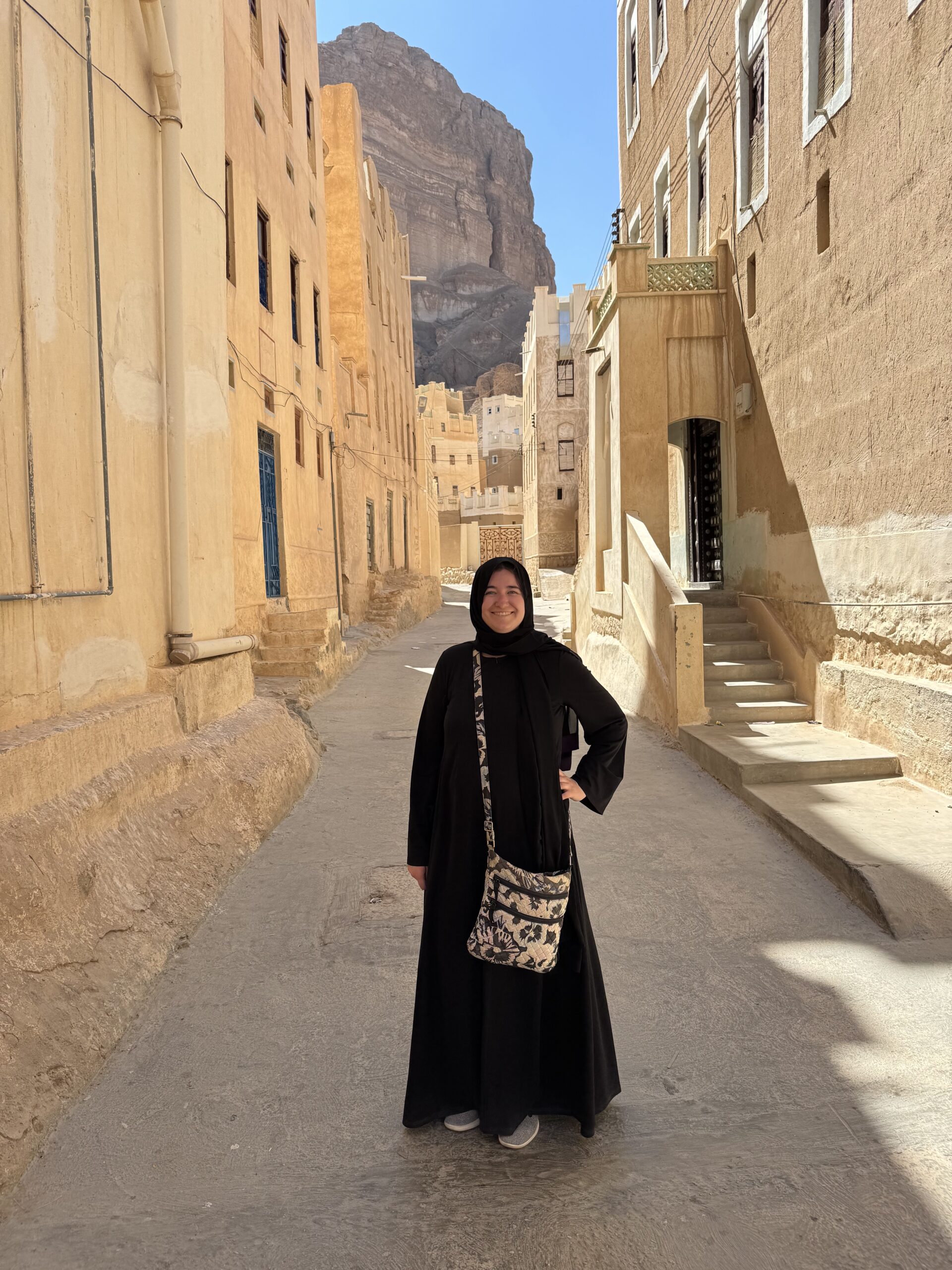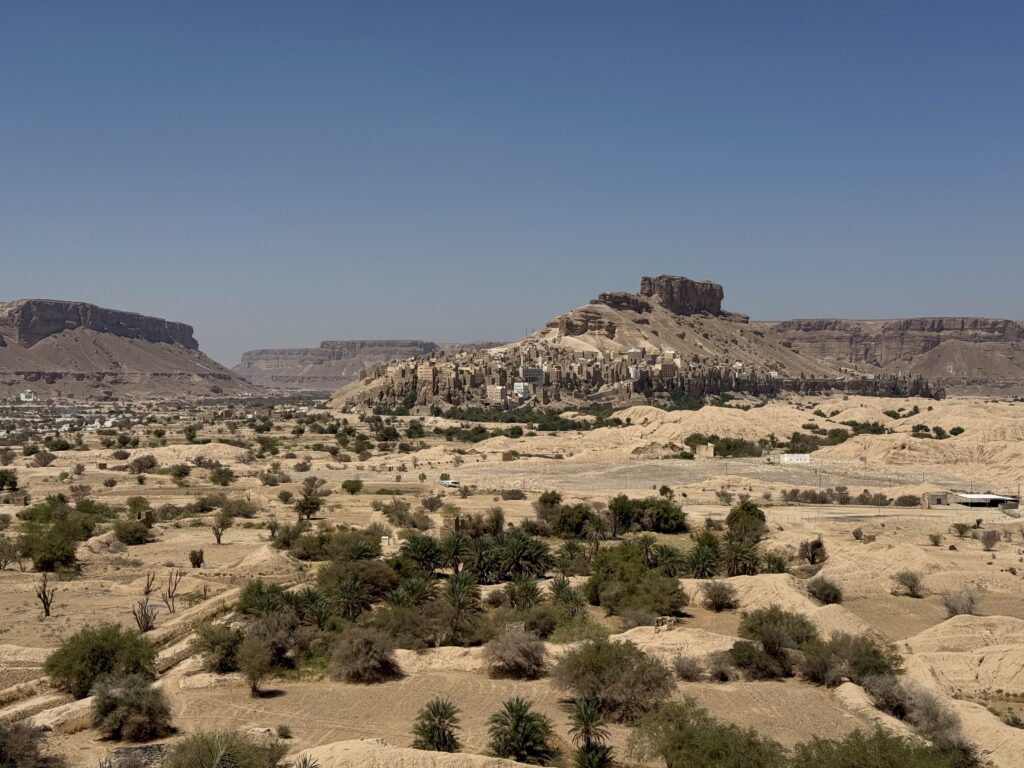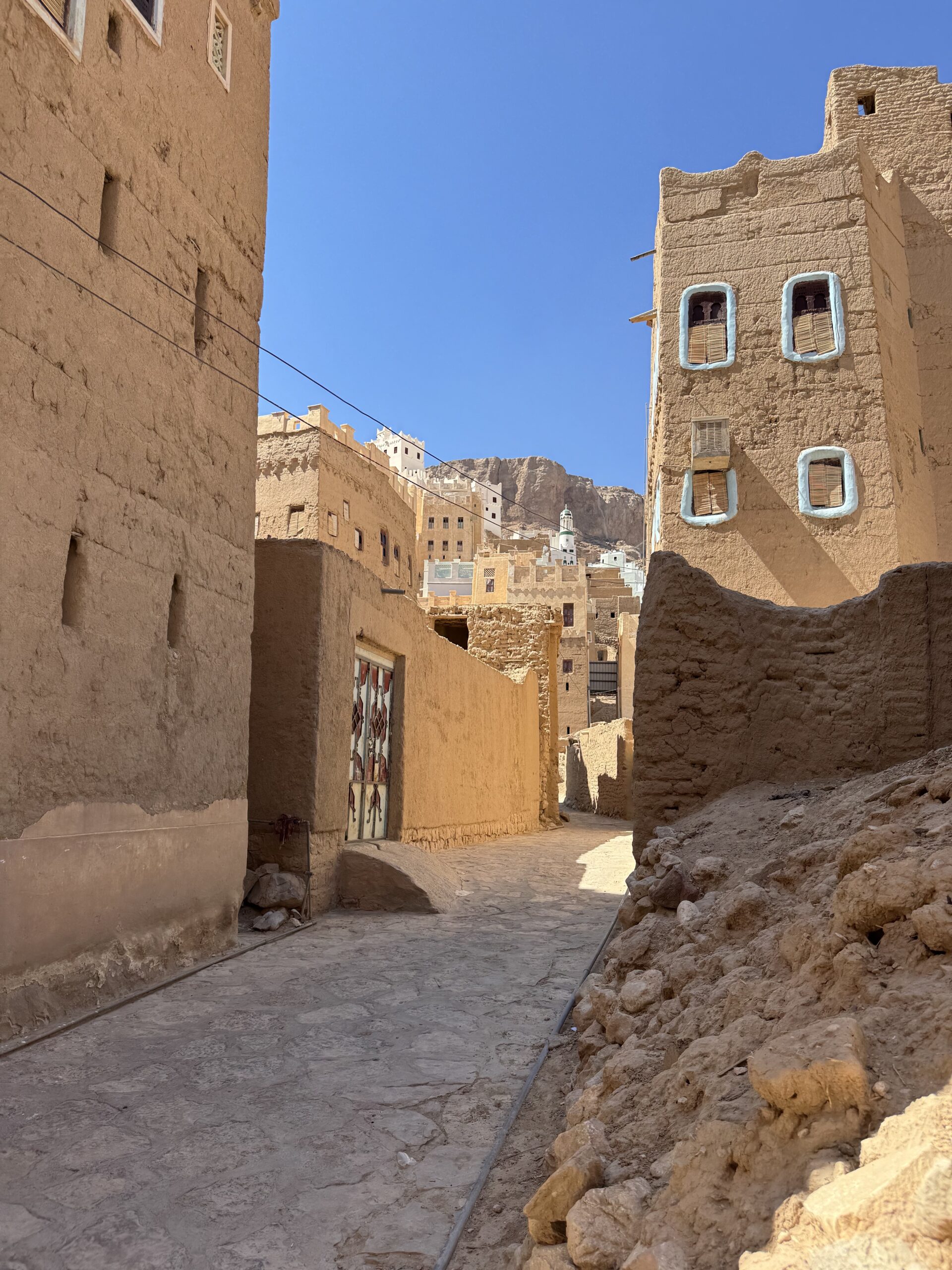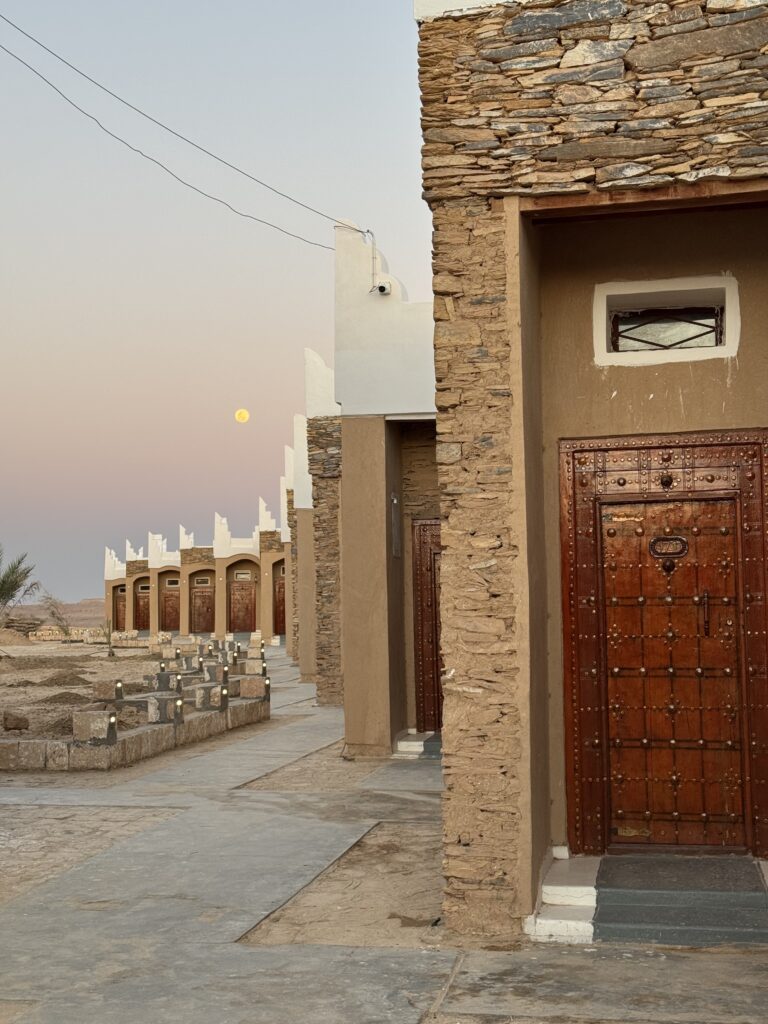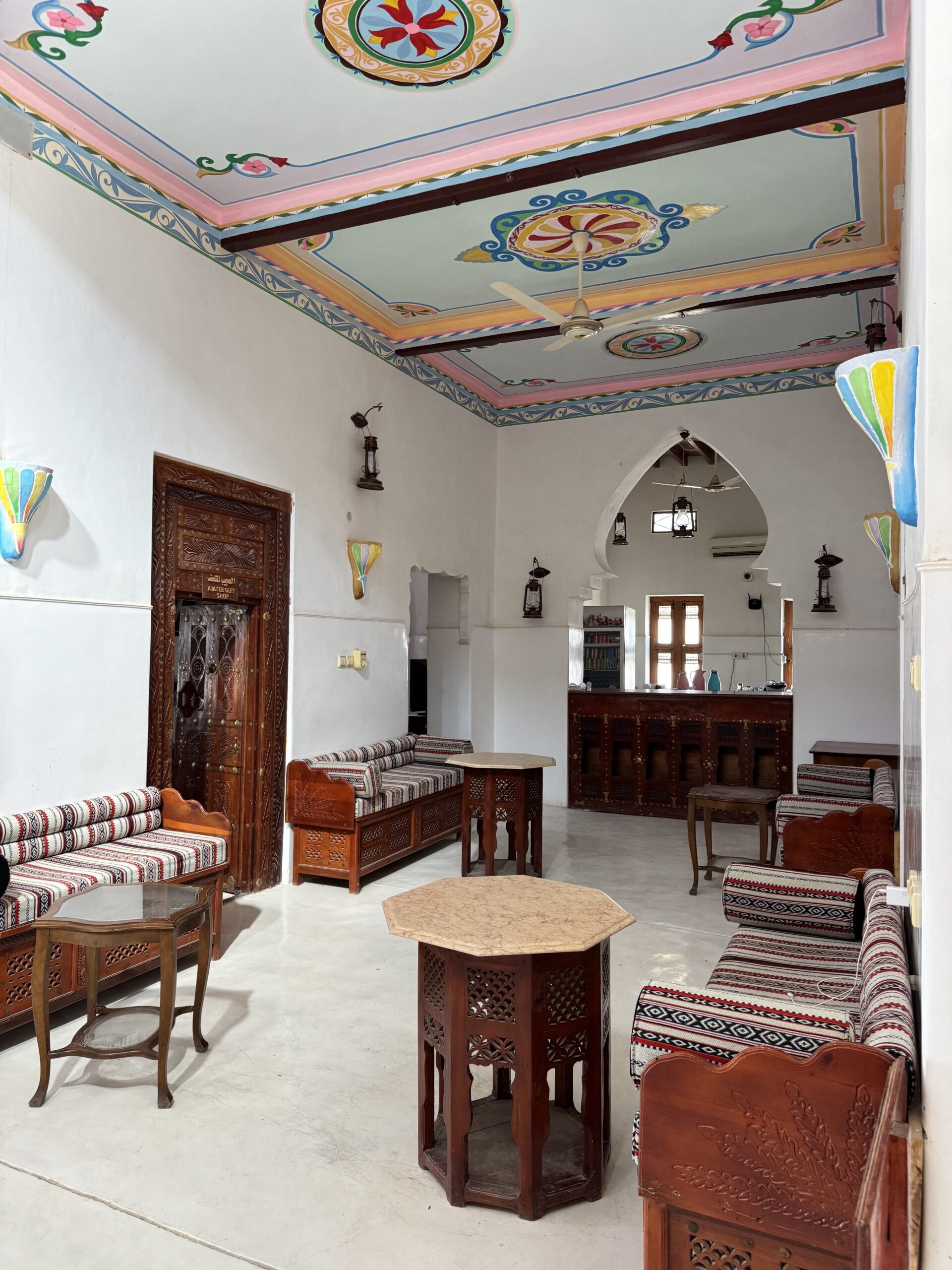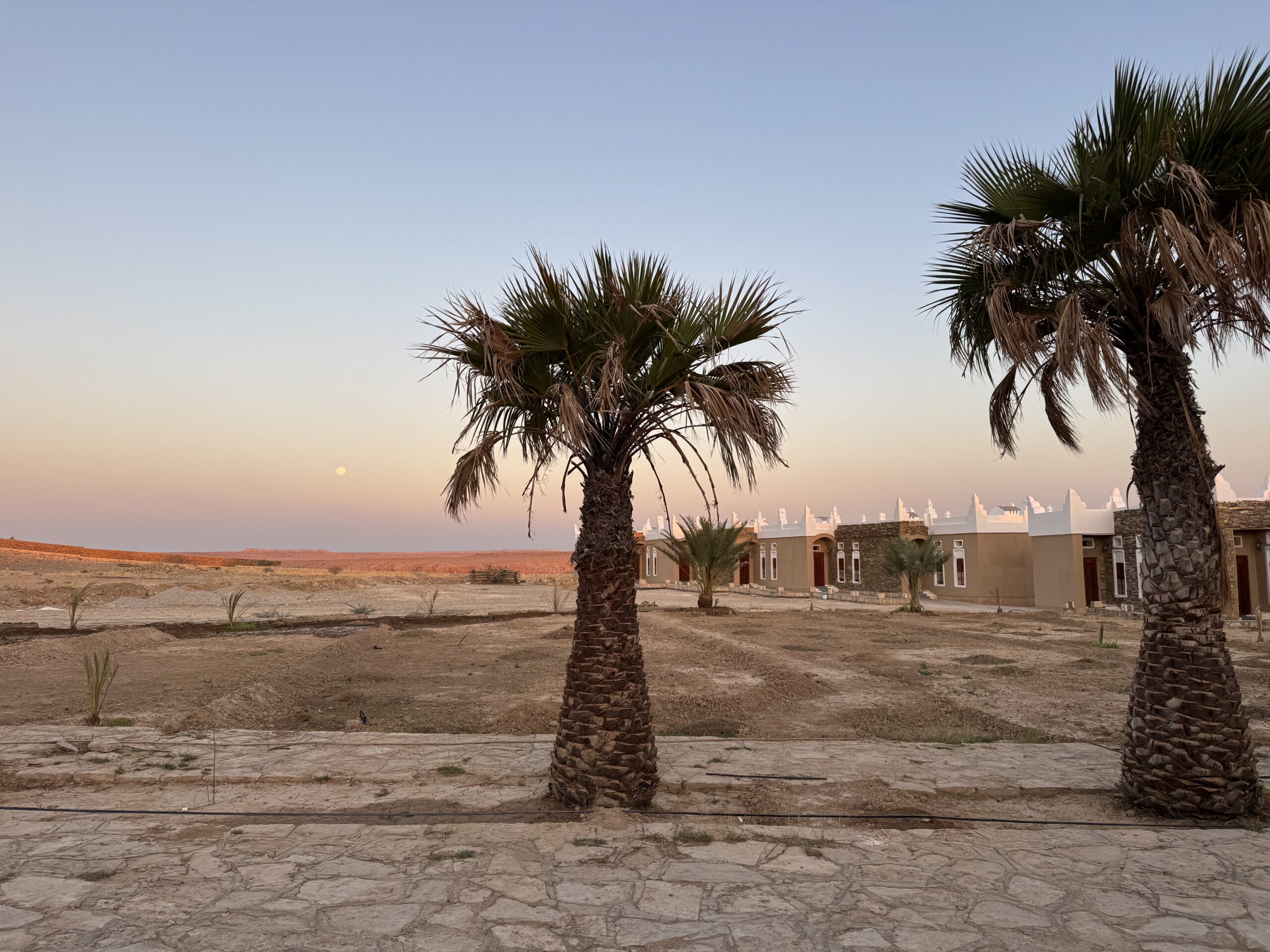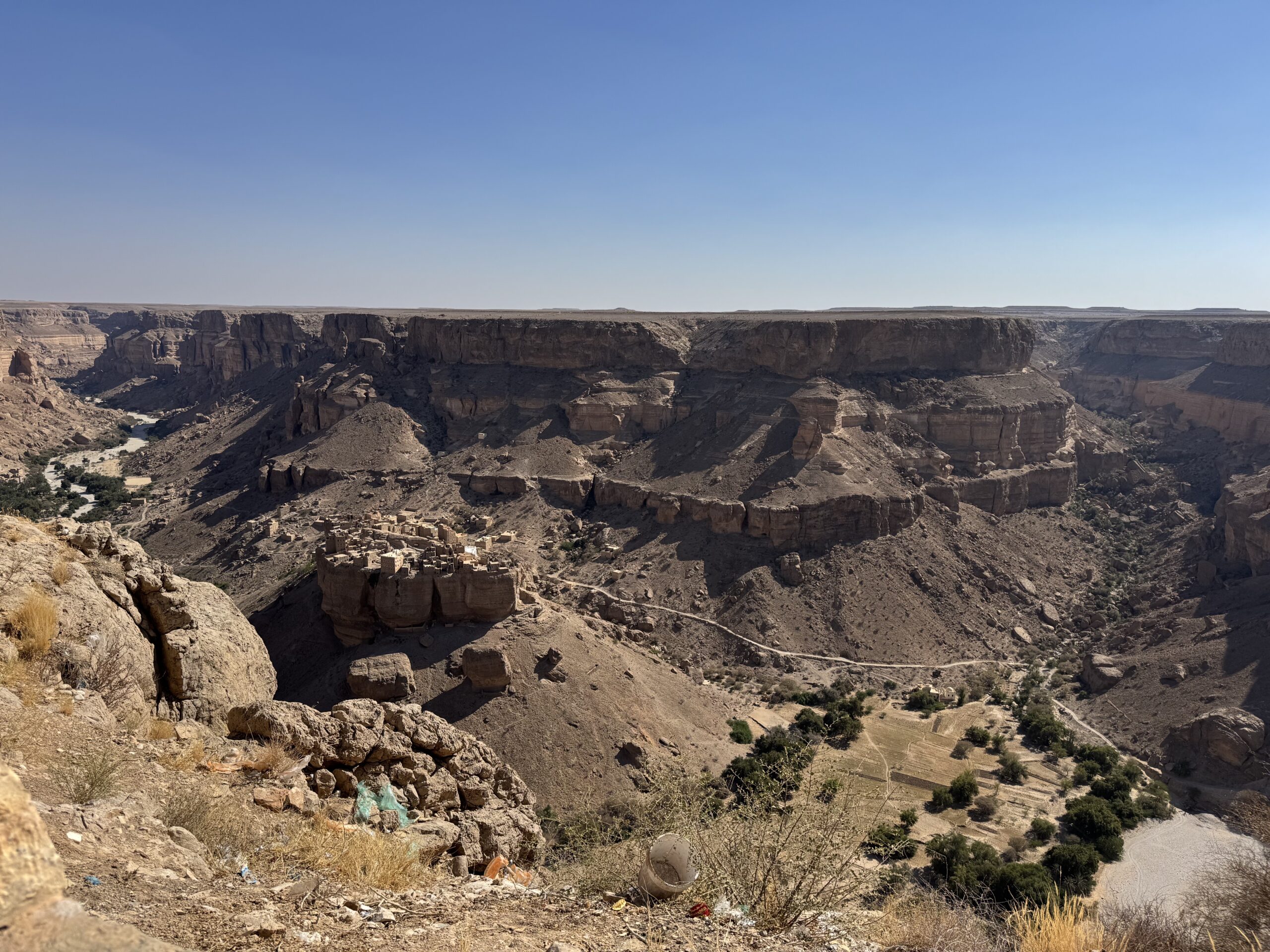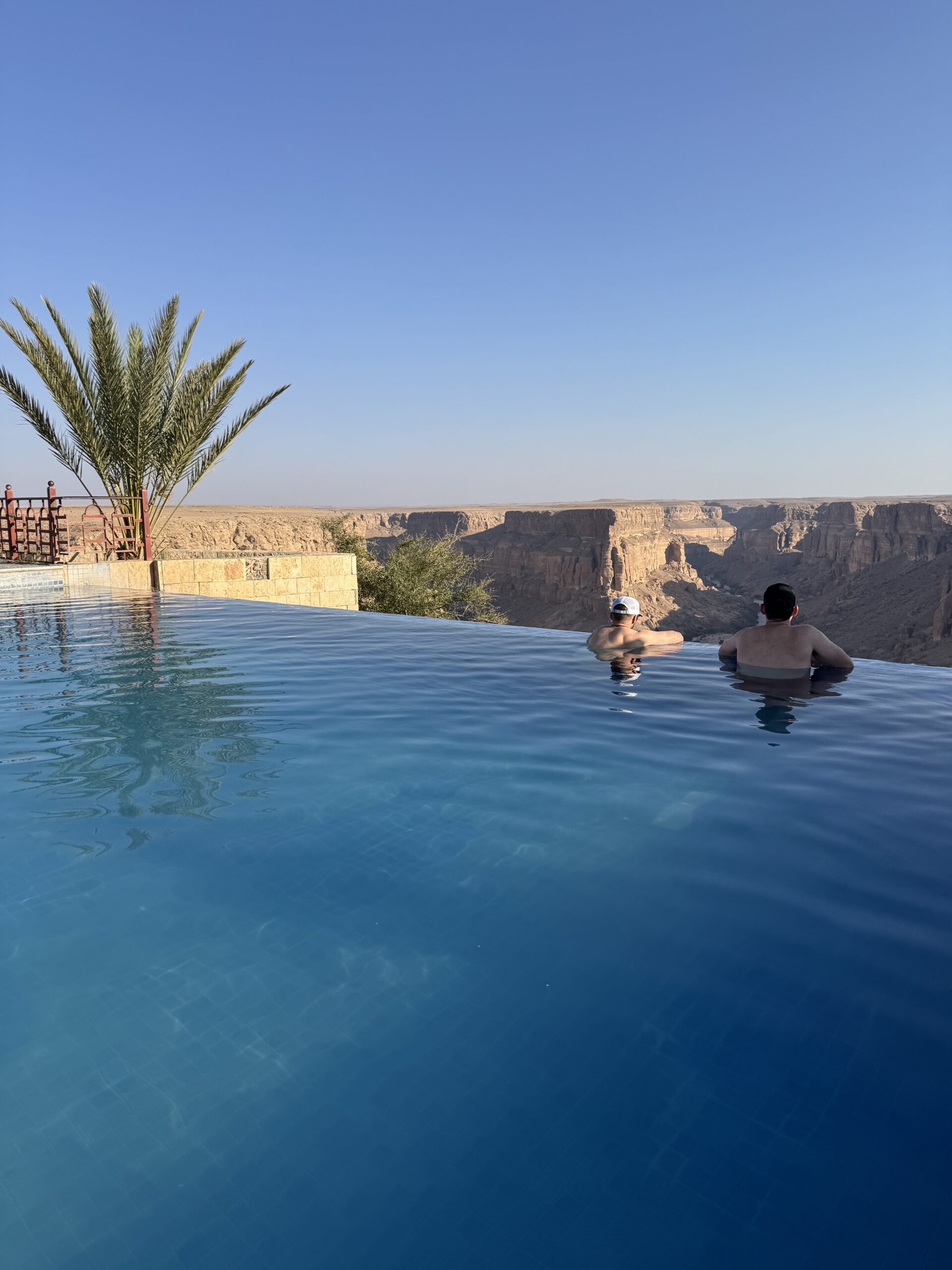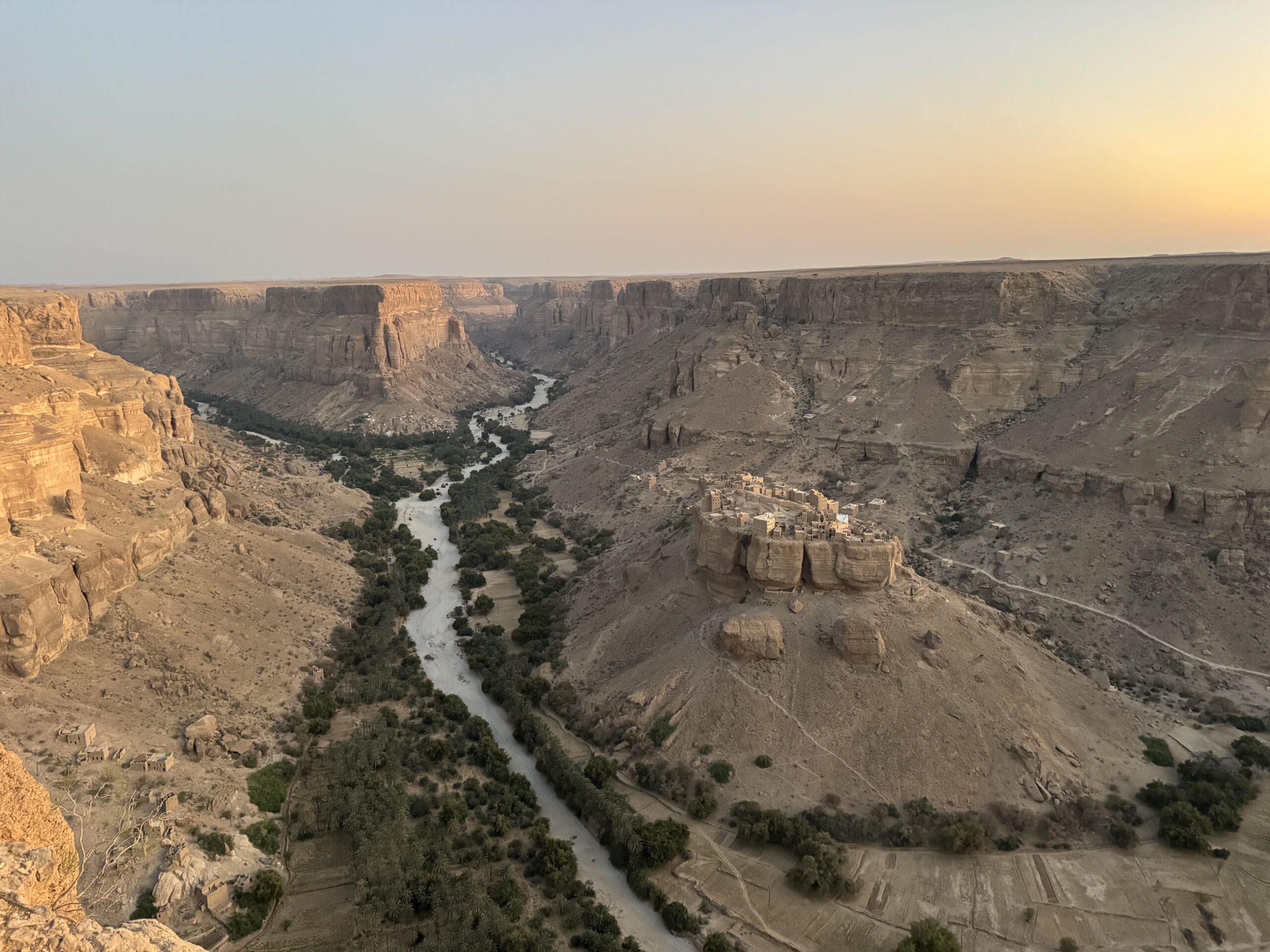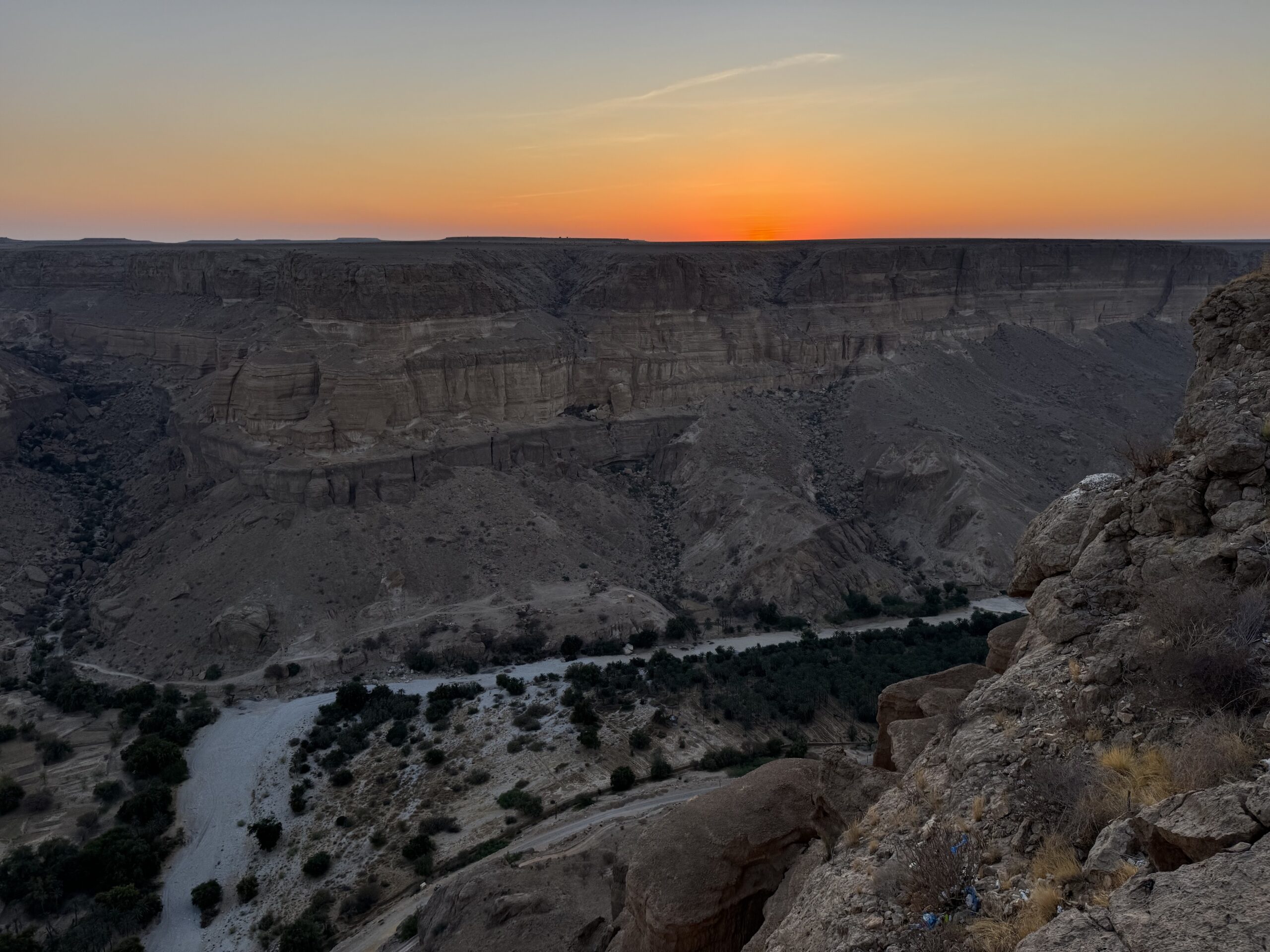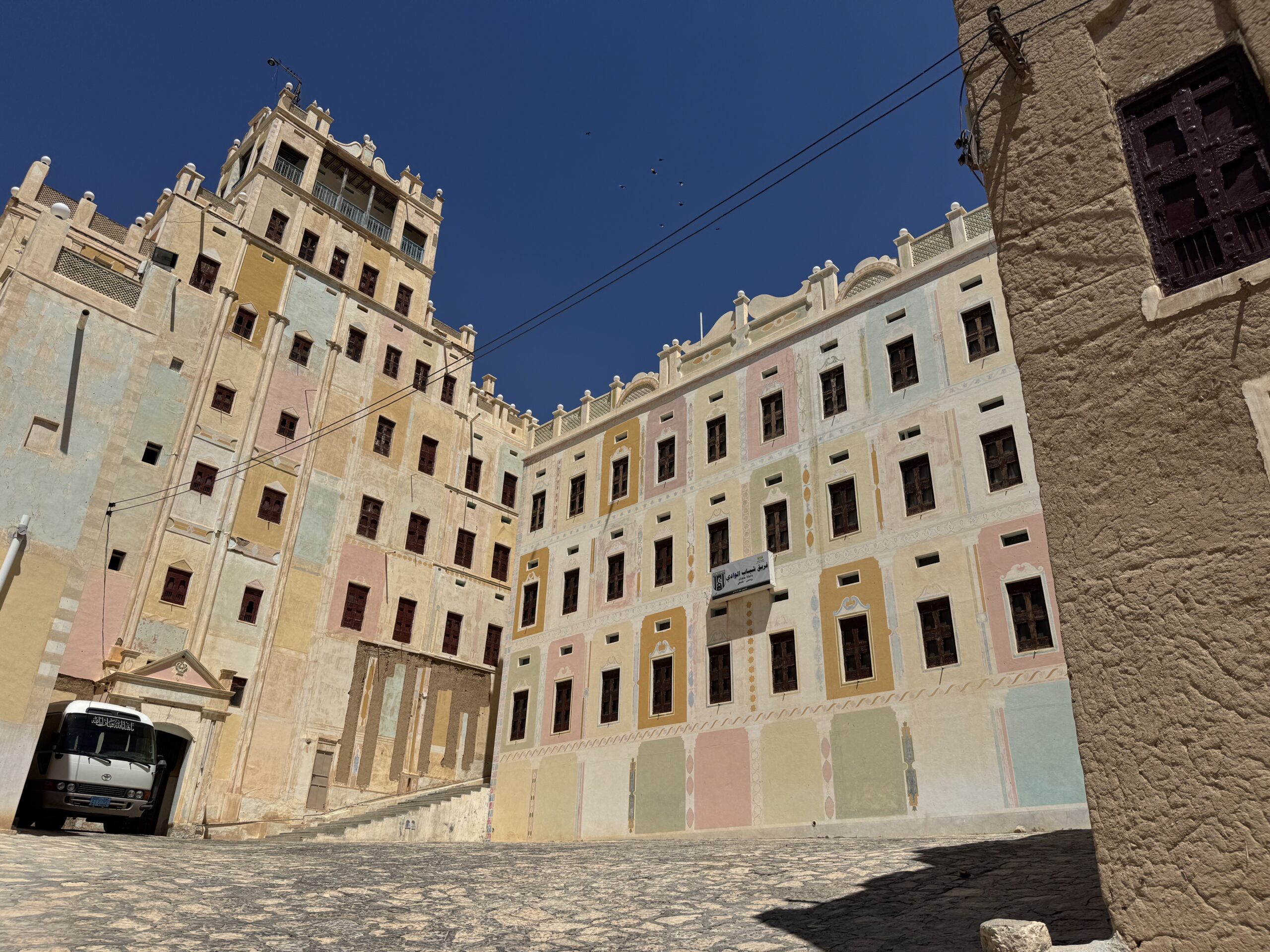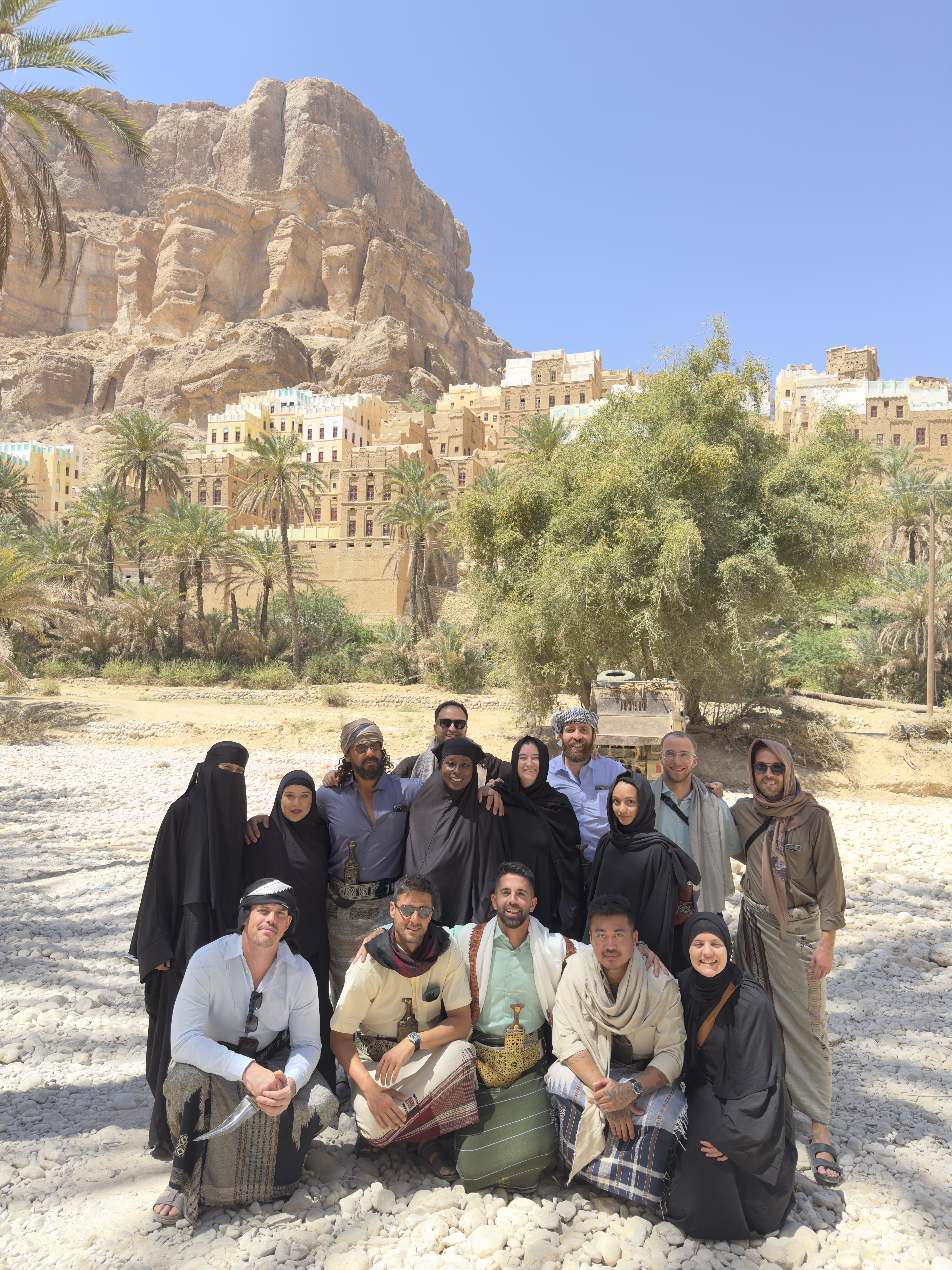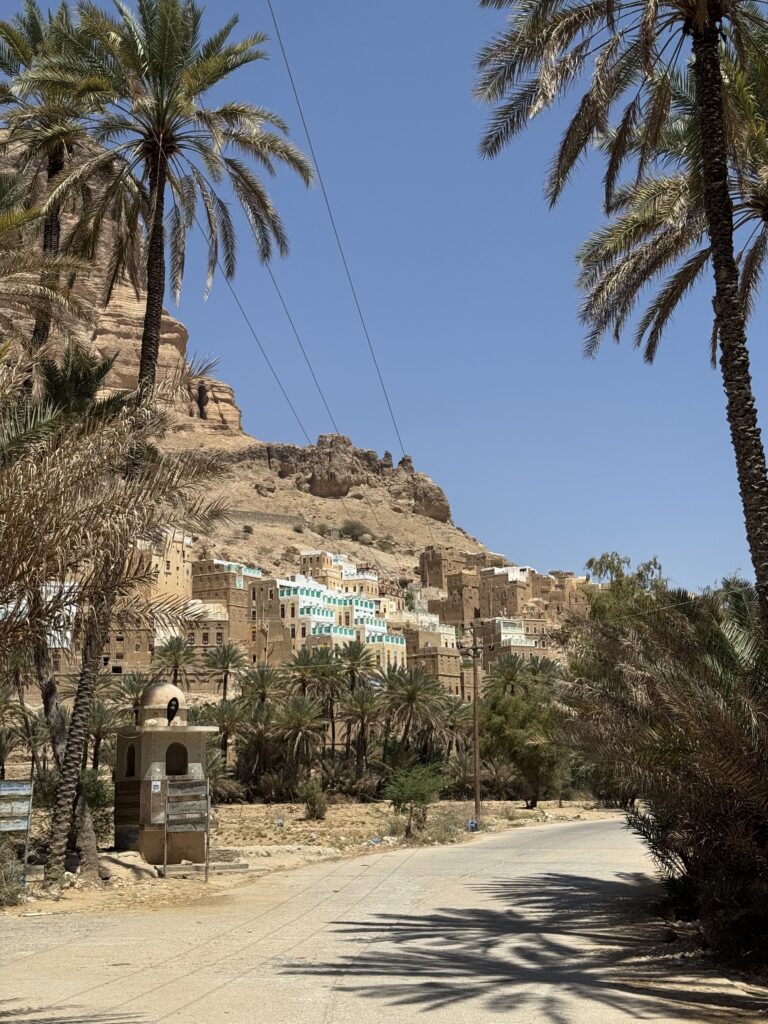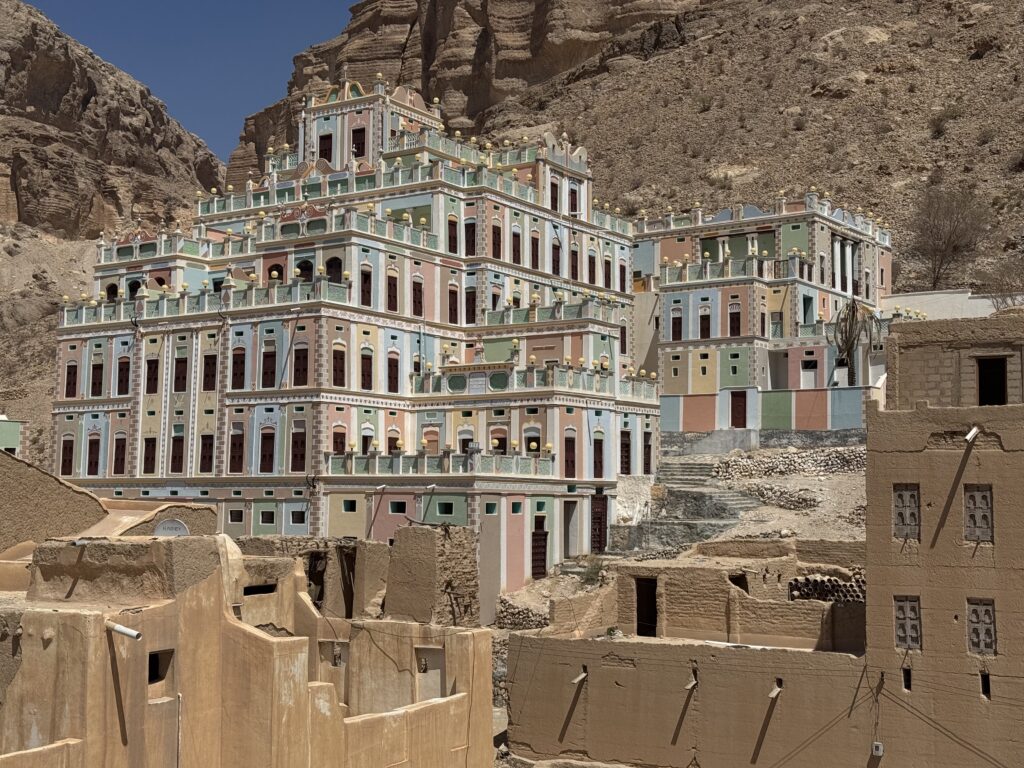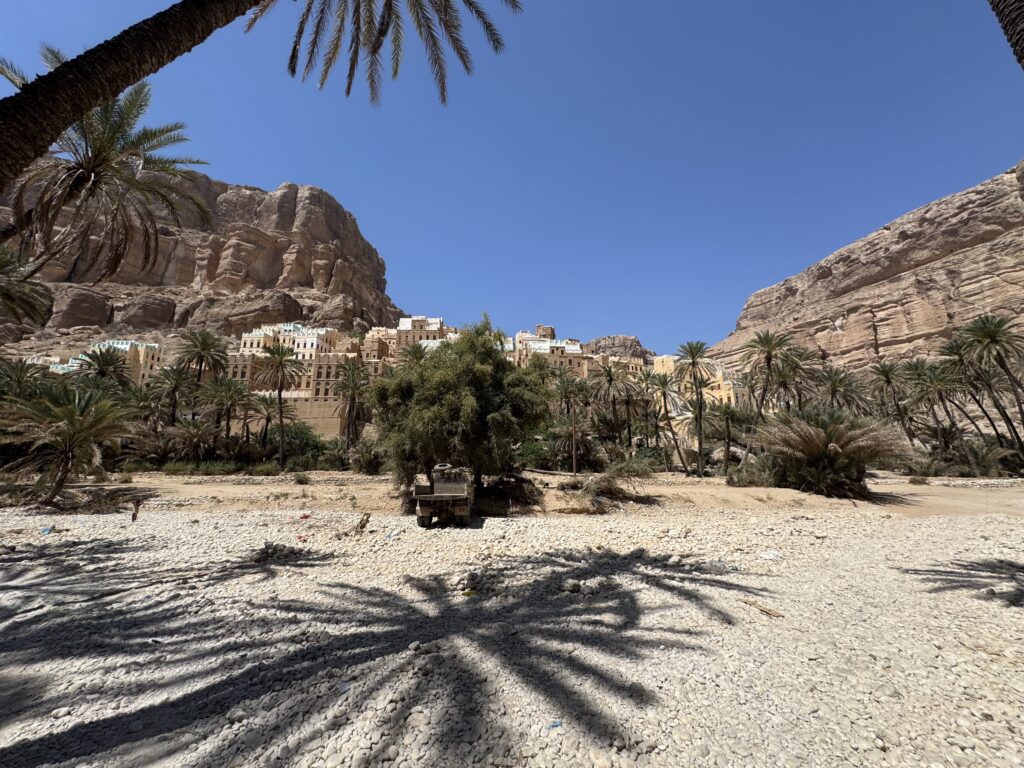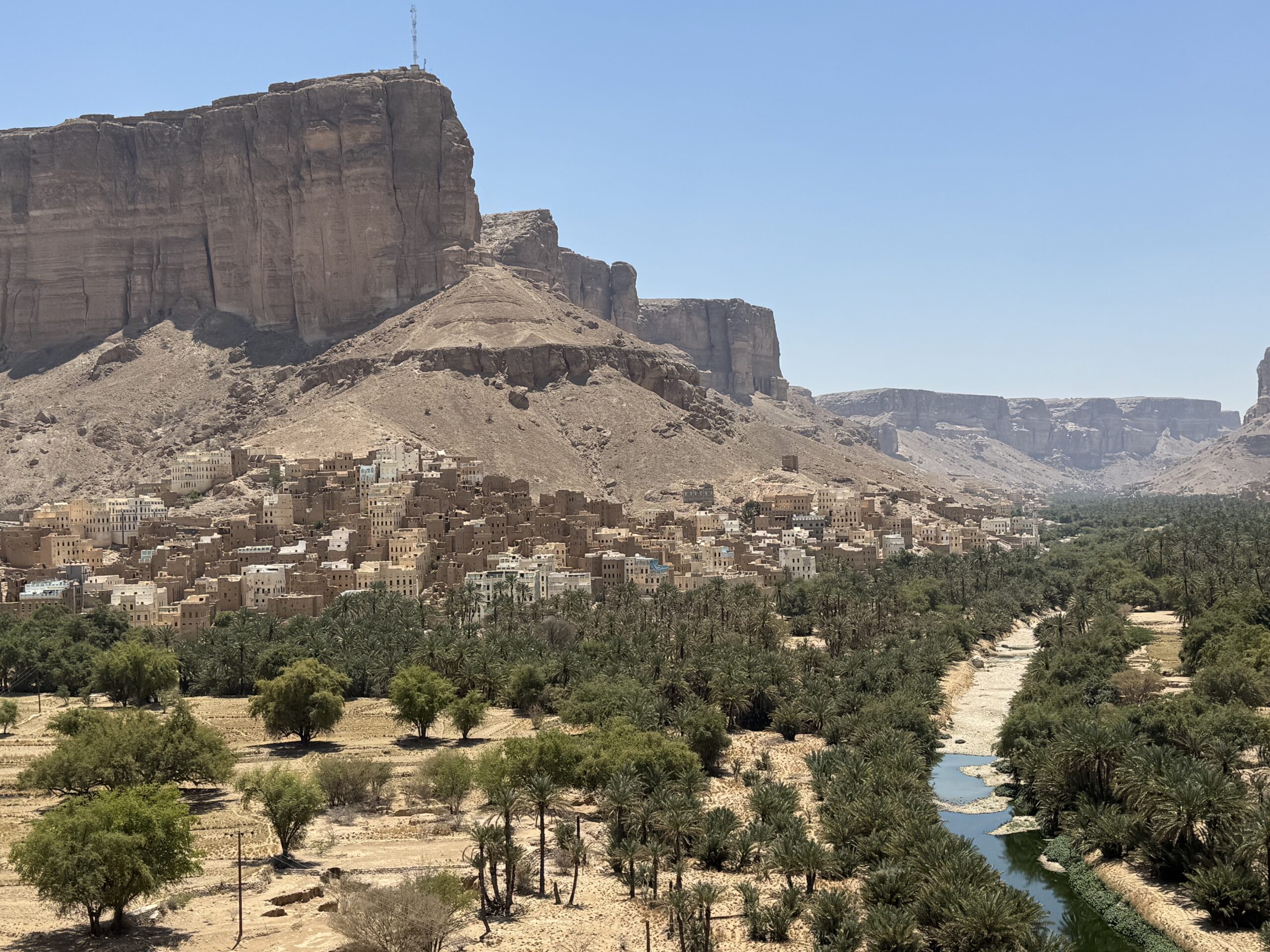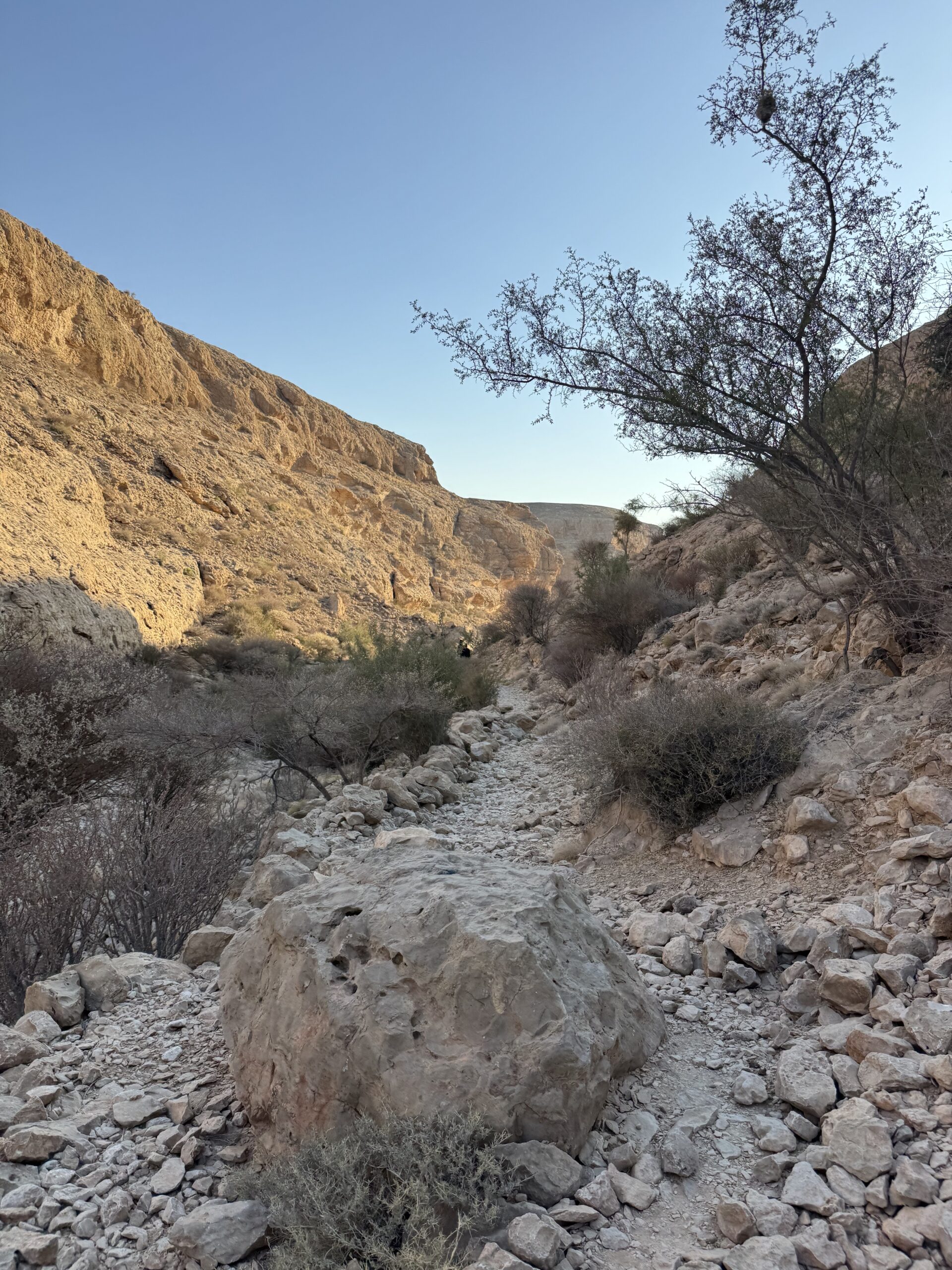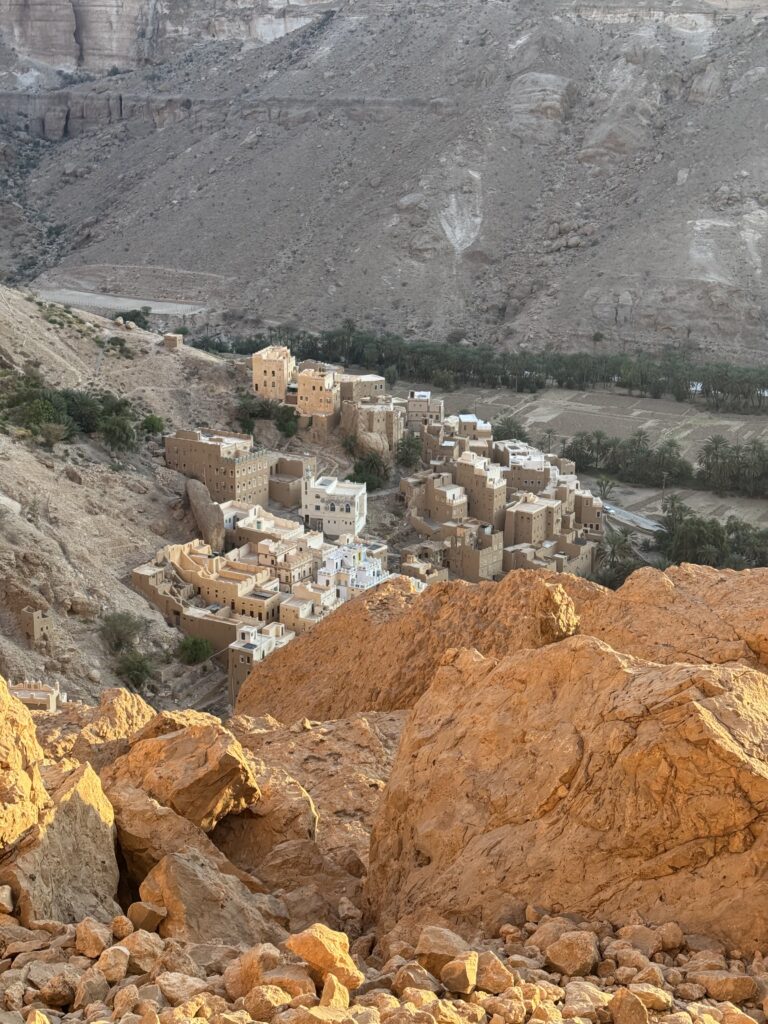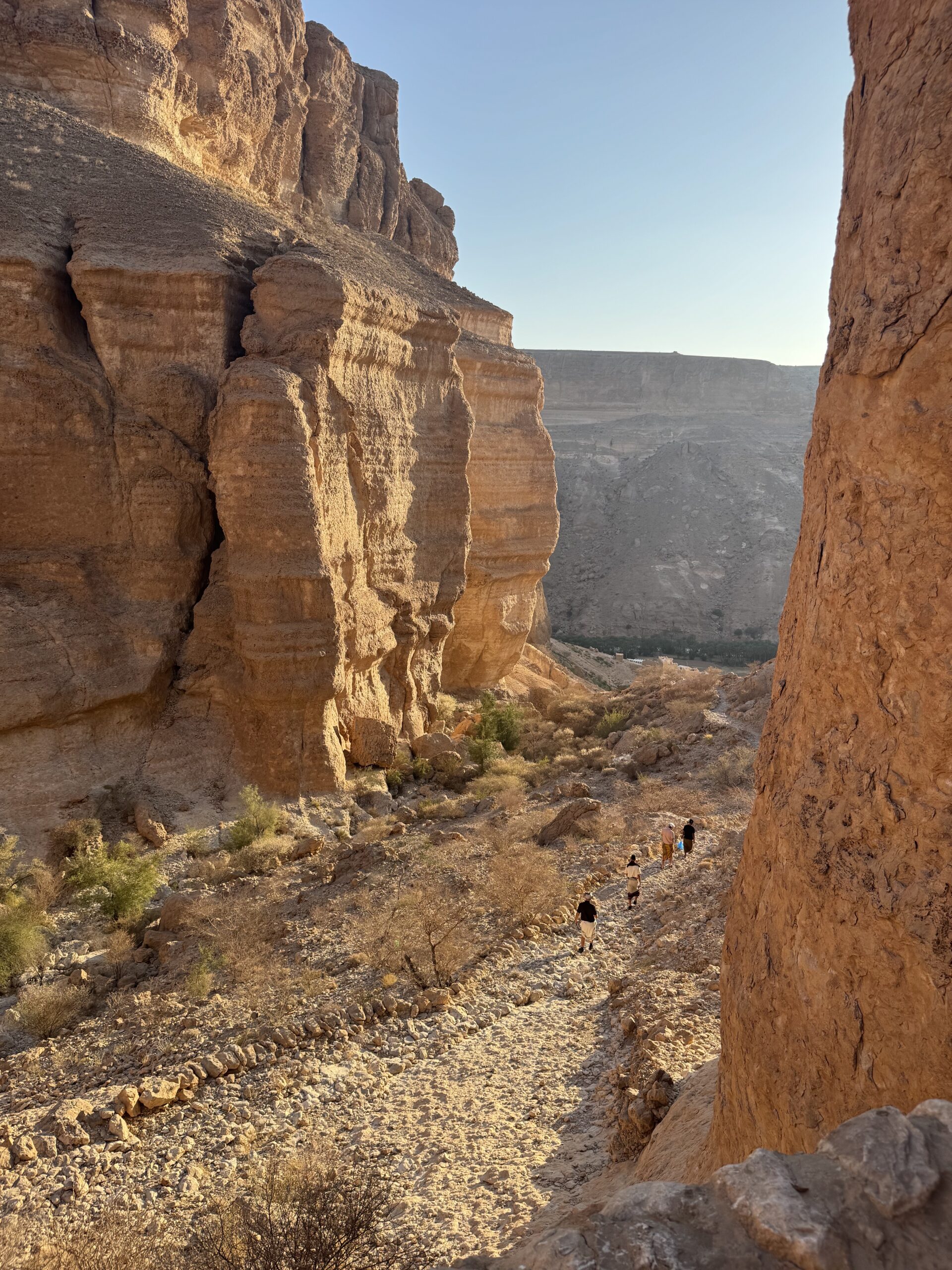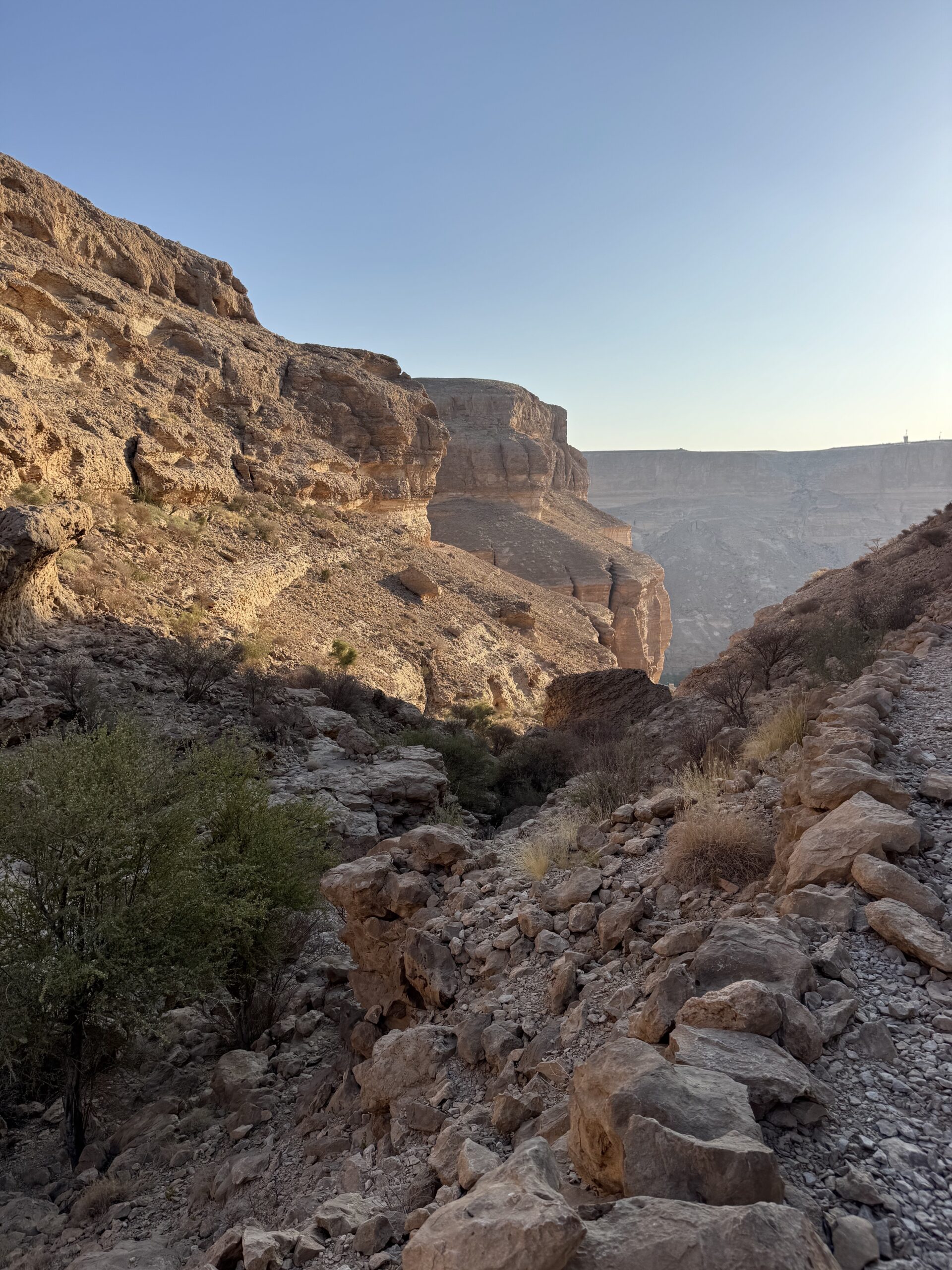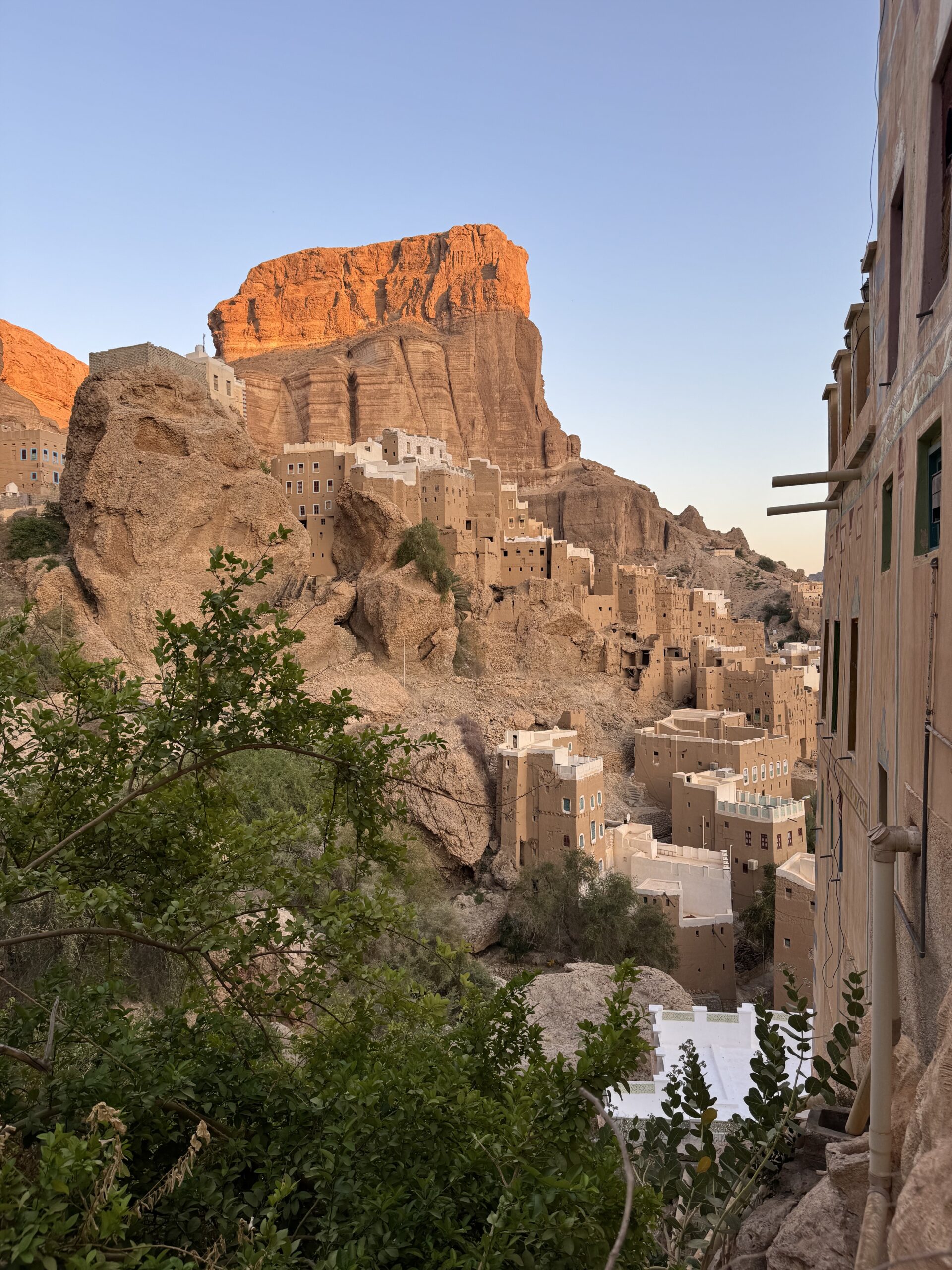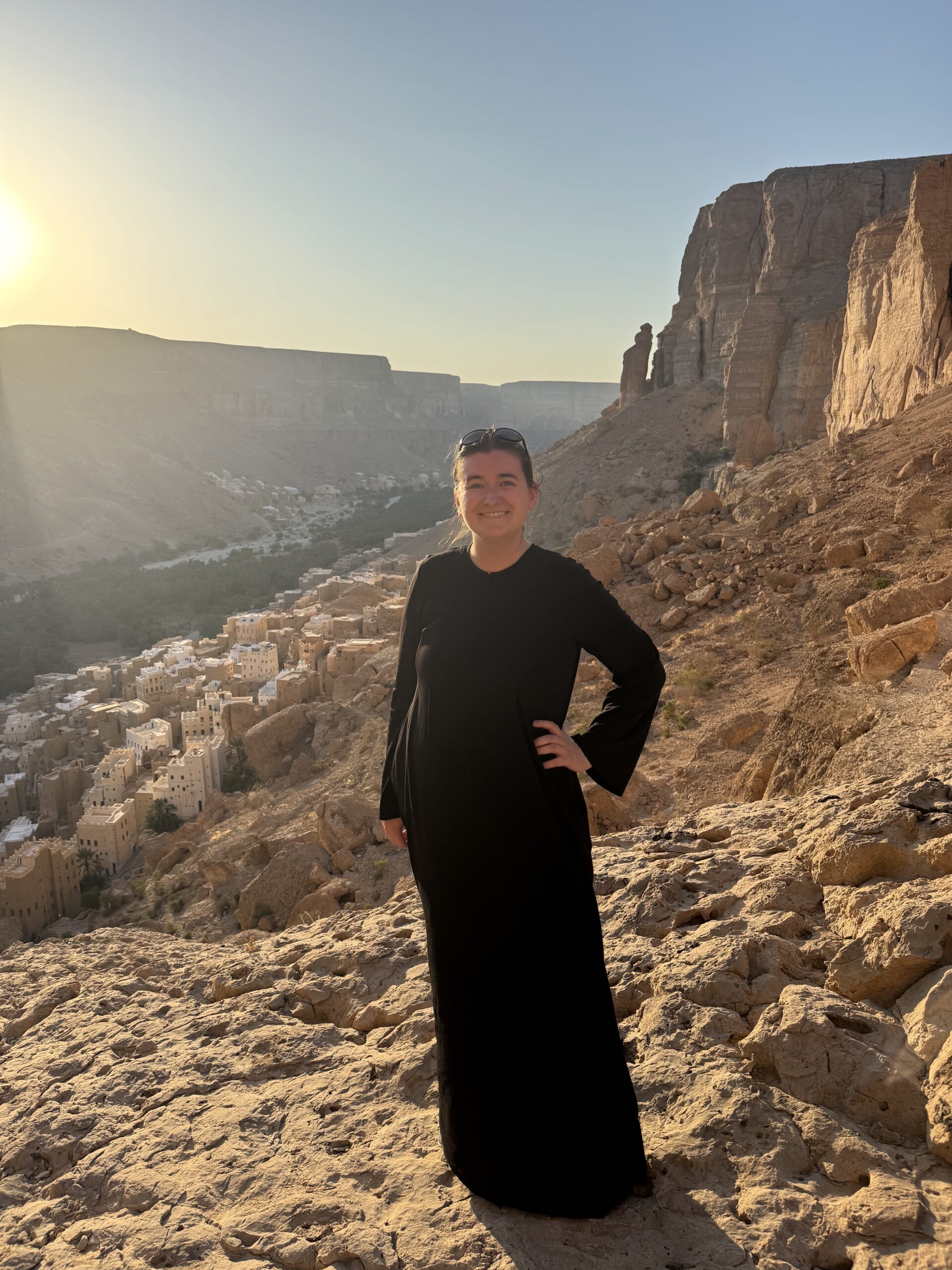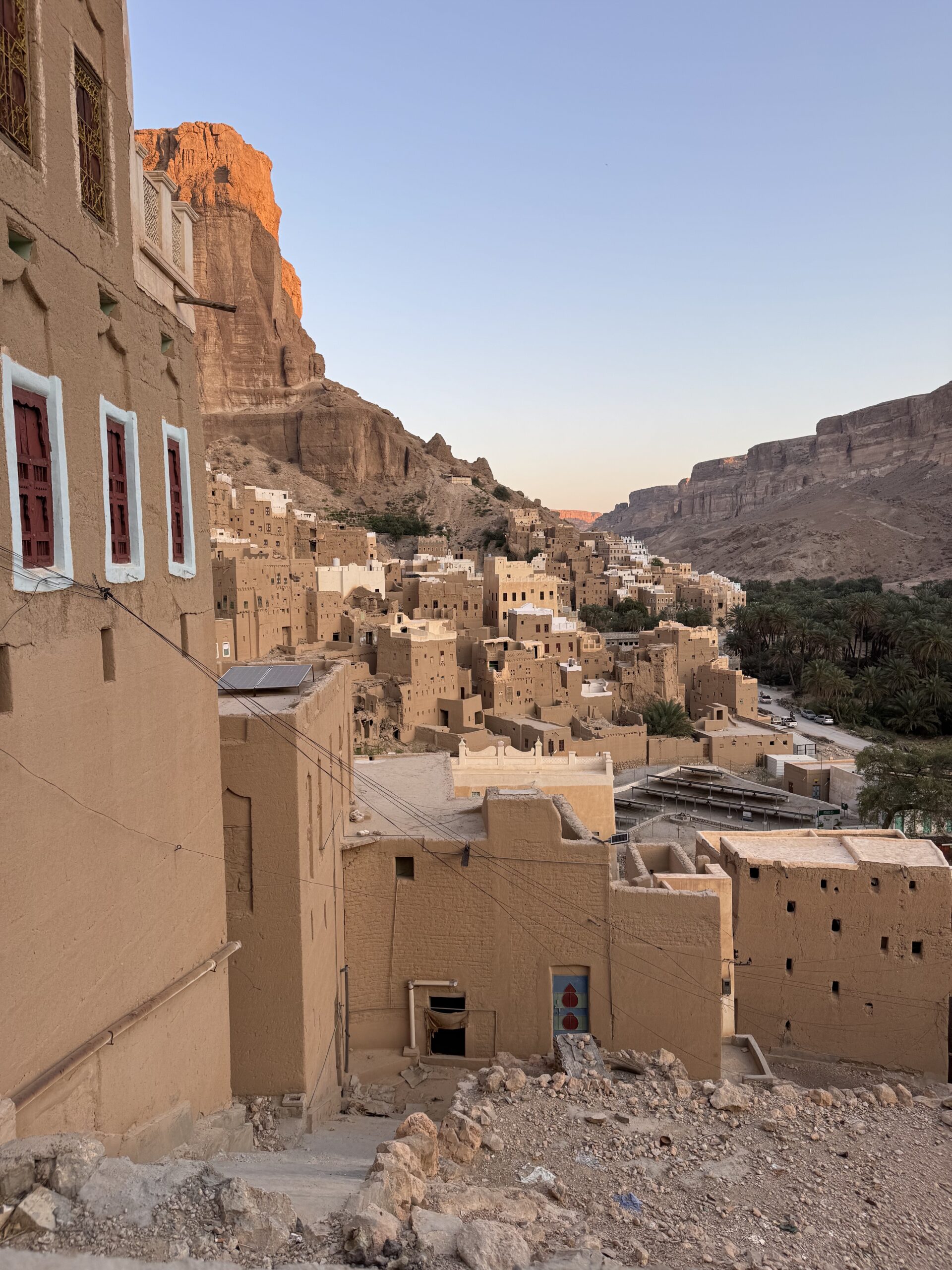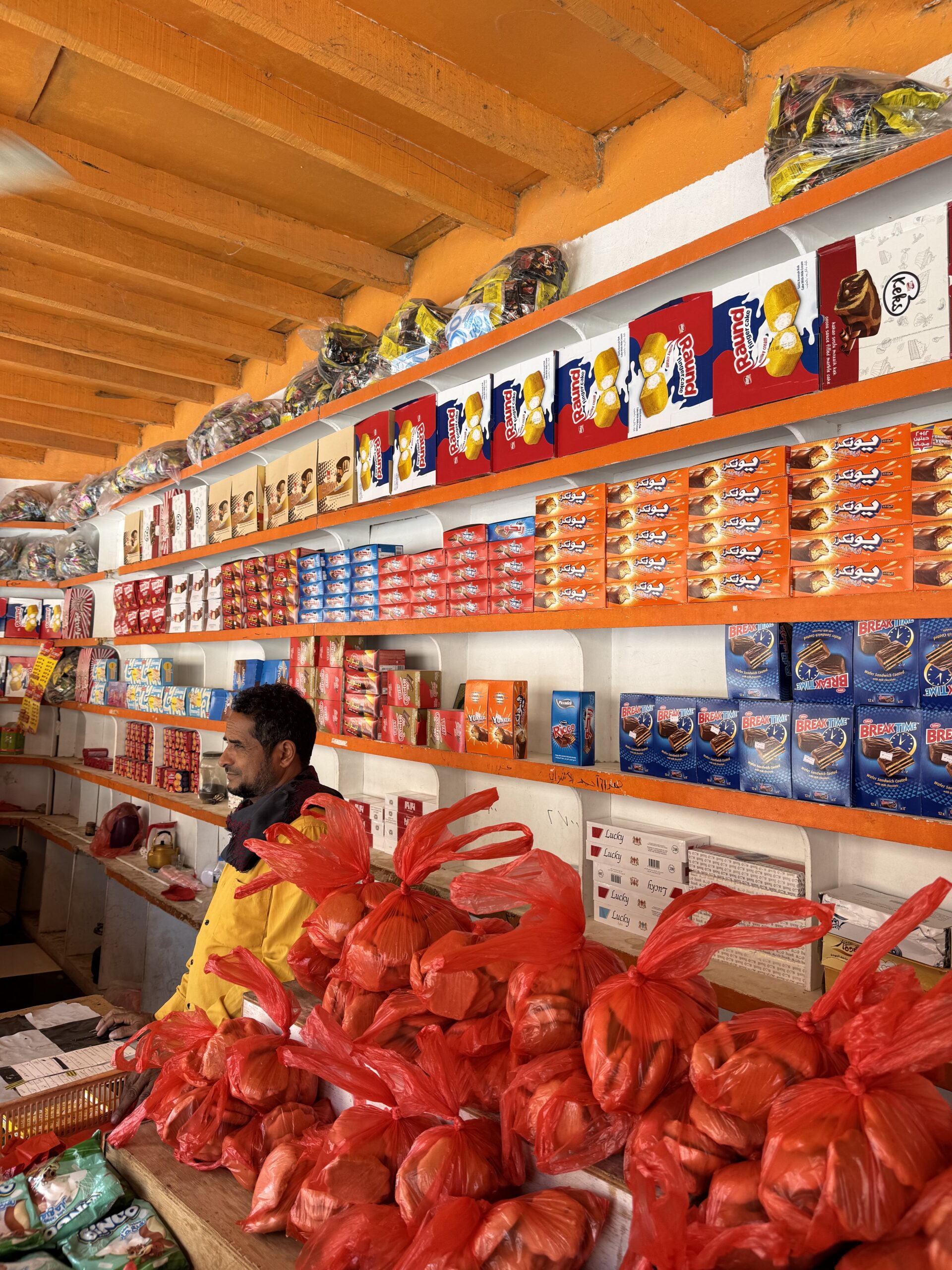The initial itinerary for this trip ended with two days in Socotra. Socotra is certainly the most popular place in Yemen for travelers – it’s an island that’s quite far from the mainland, so it doesn’t have the same instability as the mainland, and it has a lot of beautiful nature and unique plants. But as we got closer to the trip, it became possible to go to Aden for tourism, and so the itinerary shifted so we could take advantage of that opportunity!
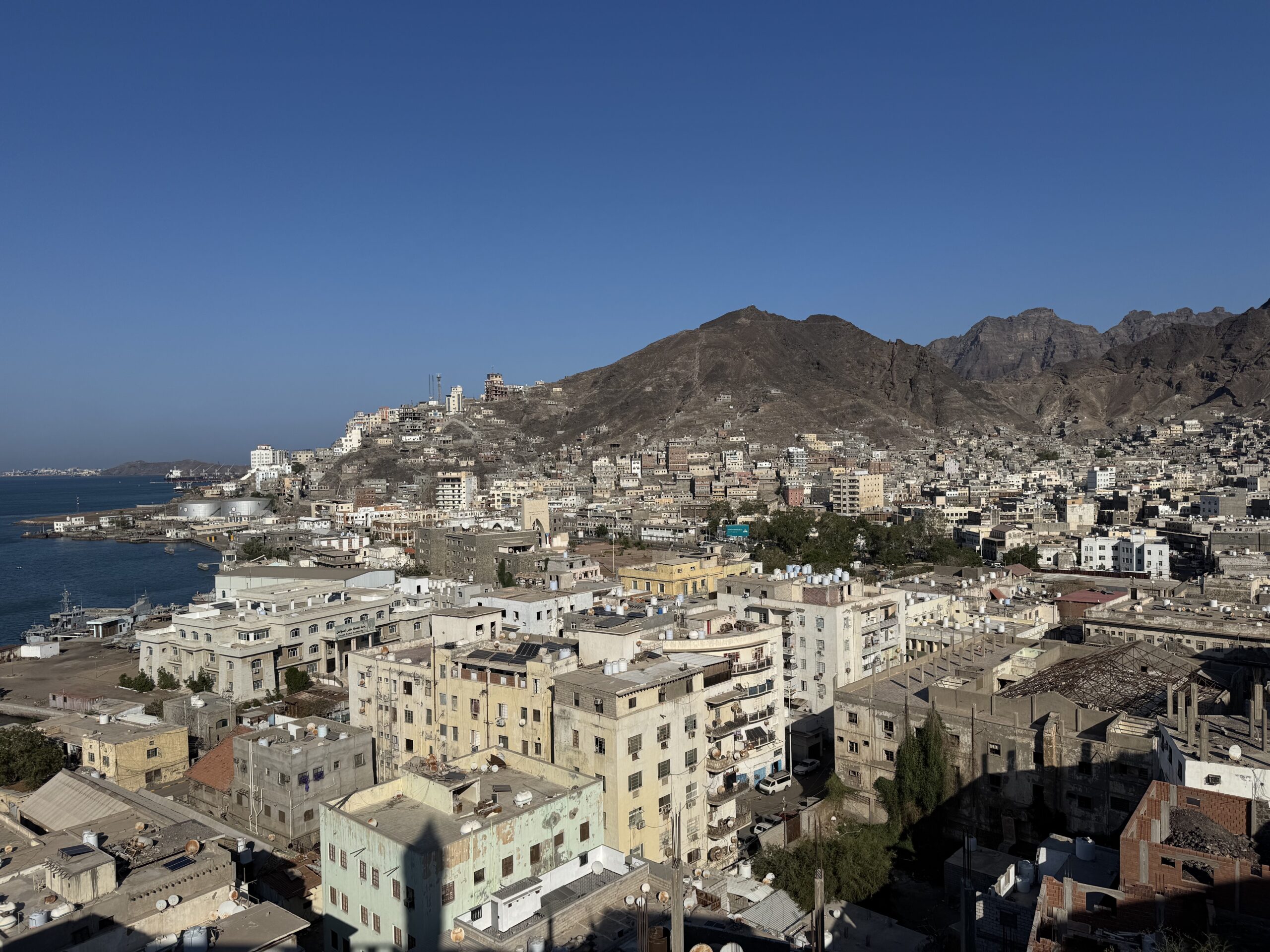
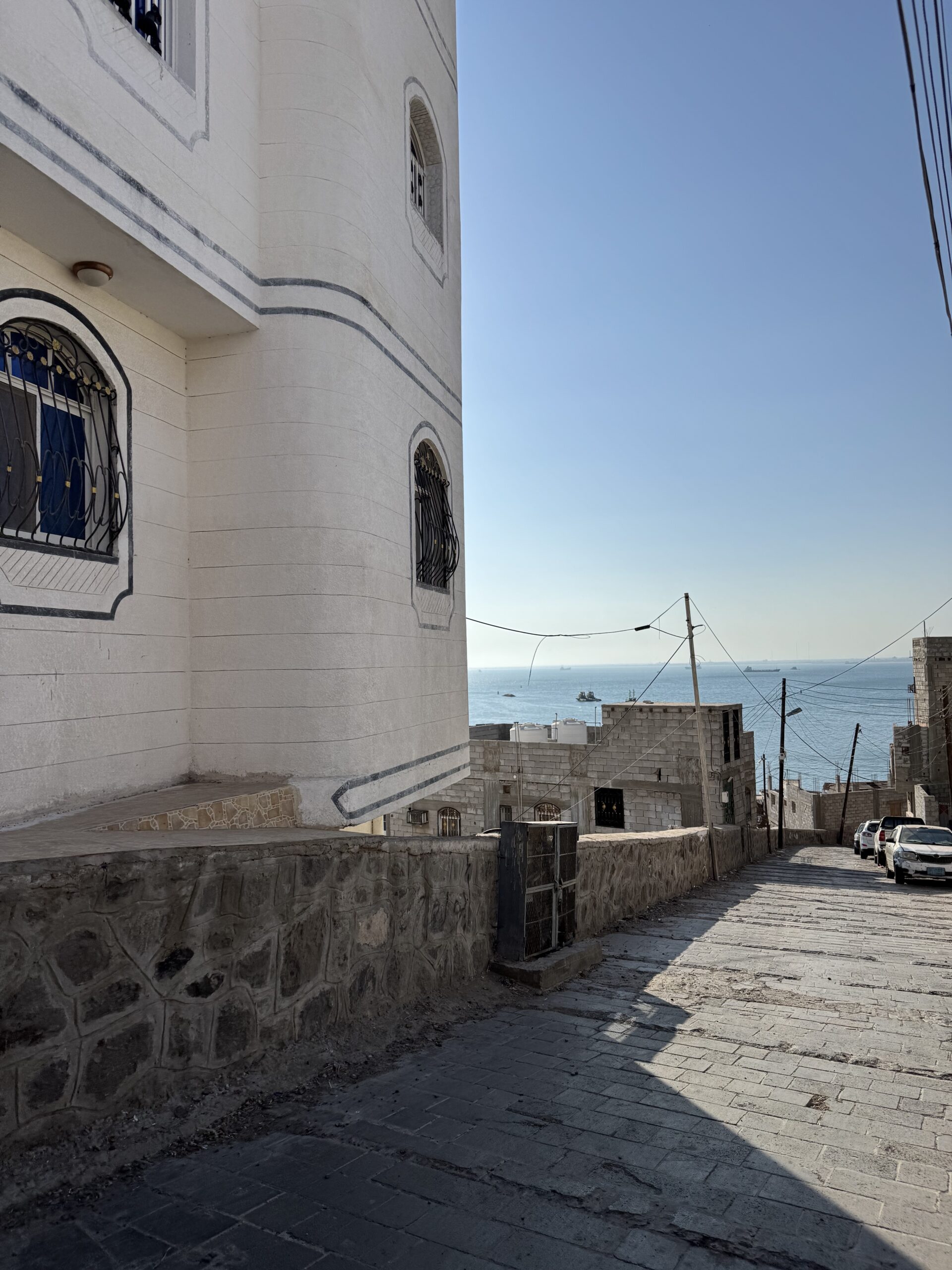
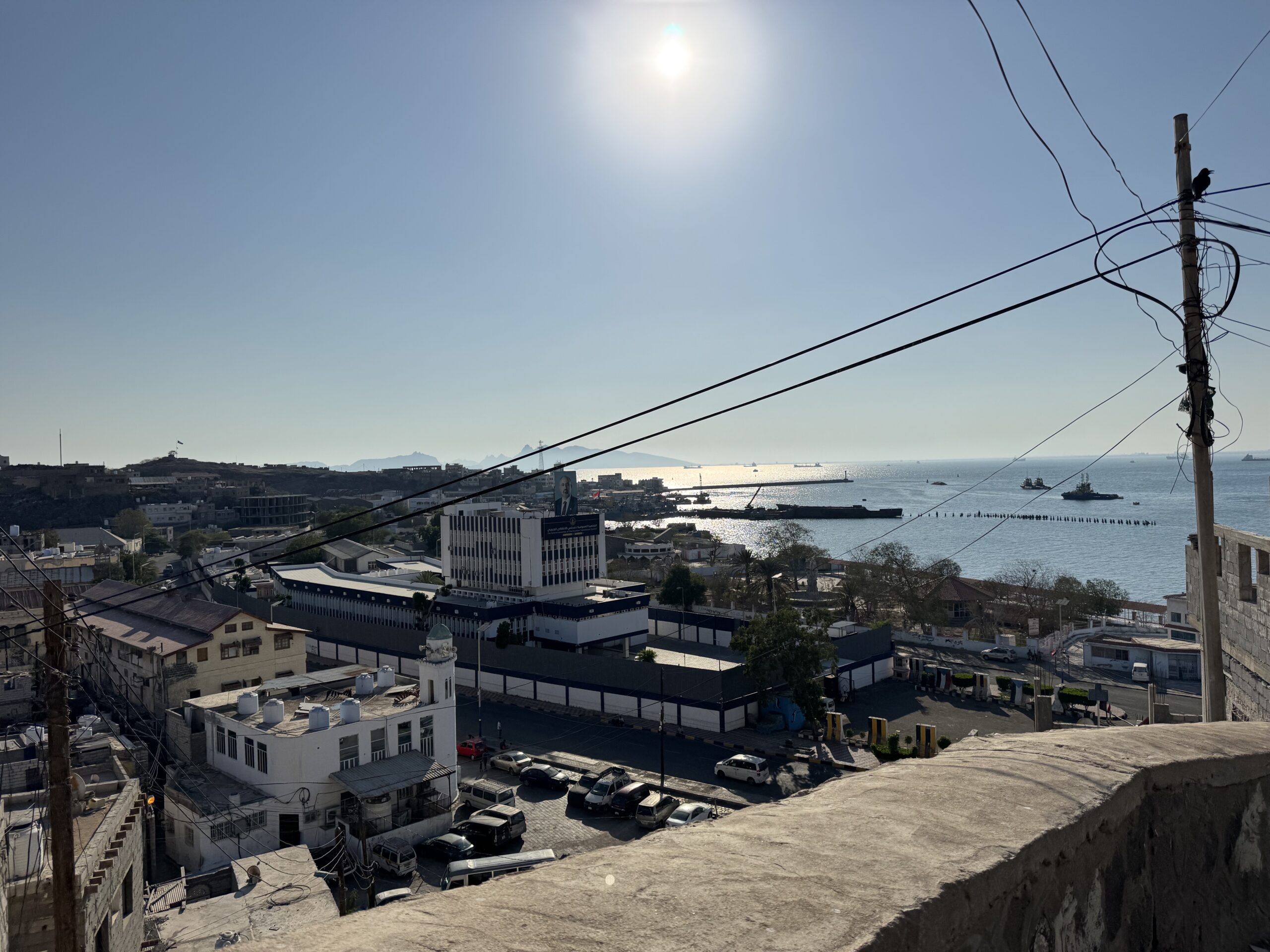
Aden is located on and in a caldera, so whenever we could get to high ground, we ended up with spectacular views of the city! Climbing up to the high ground in the abaya was not as fun, but so it goes.
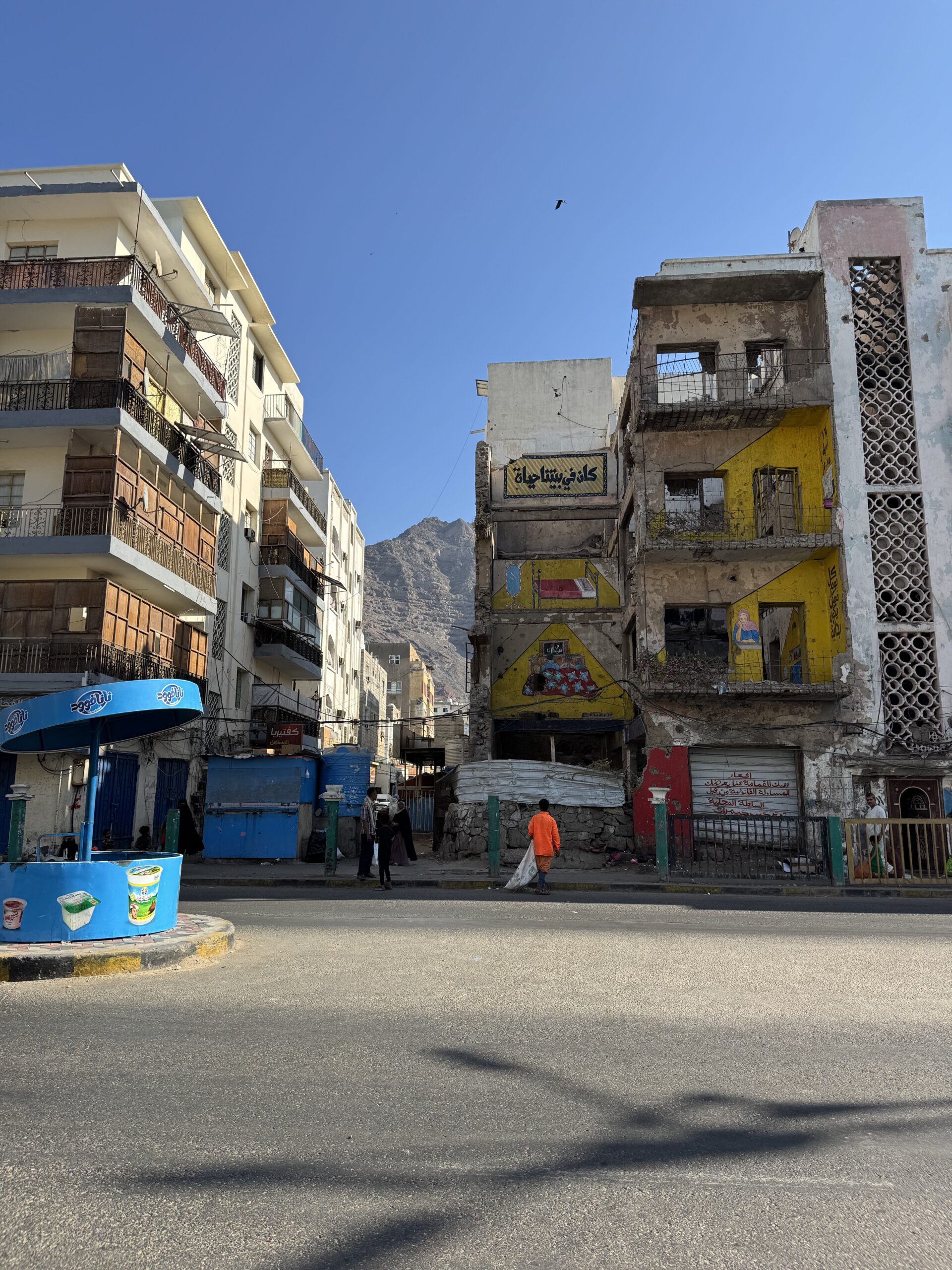
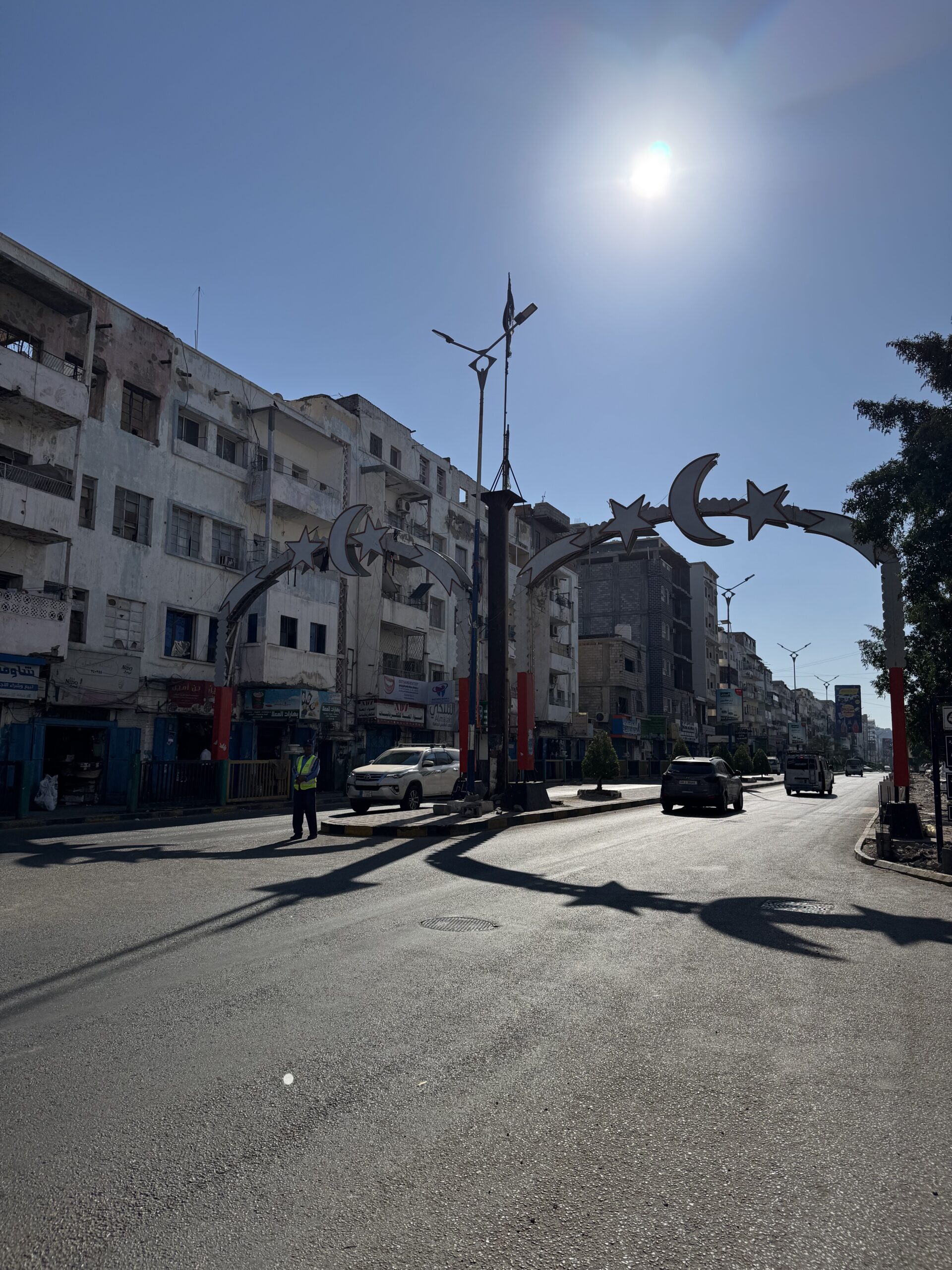
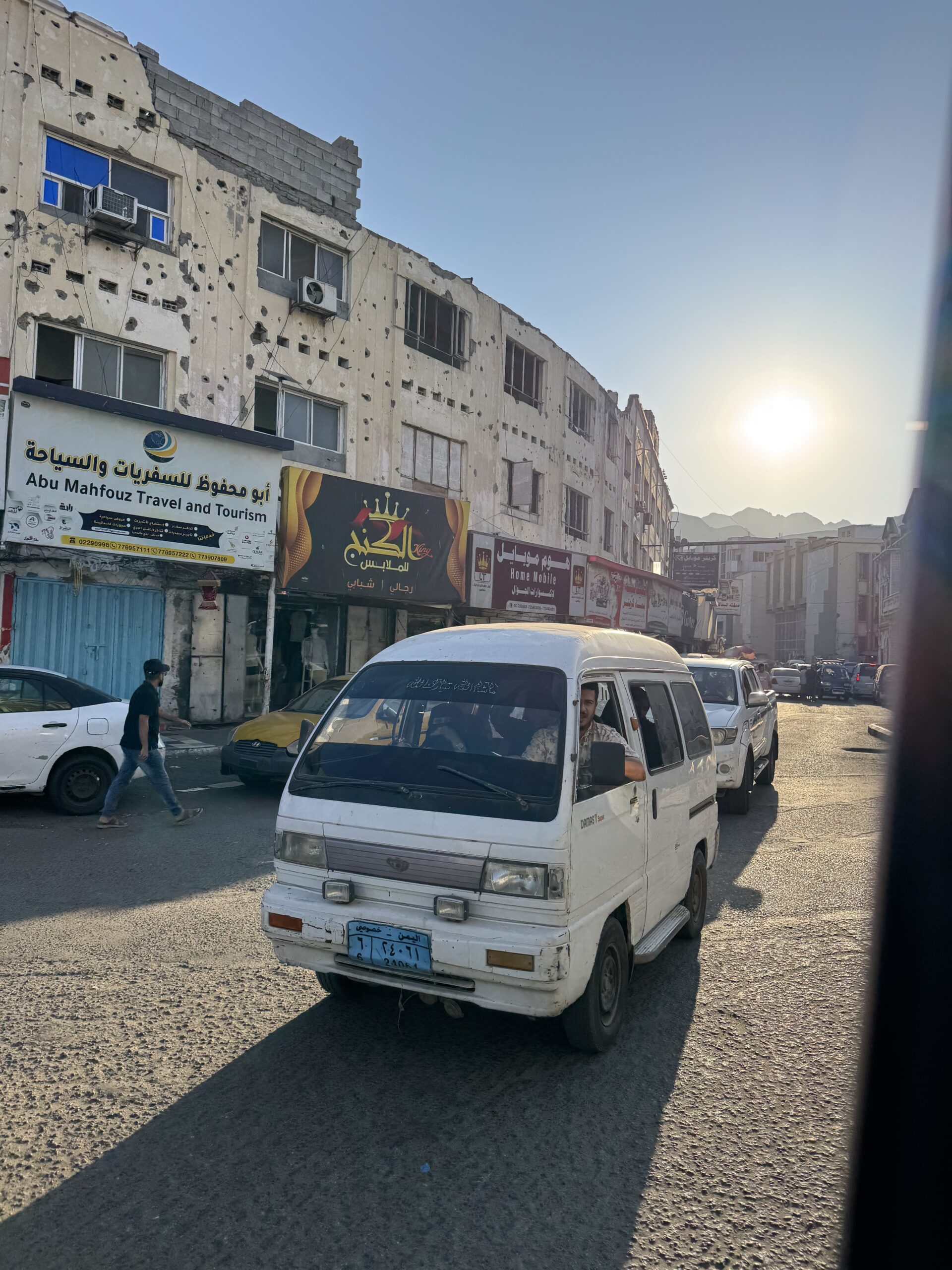
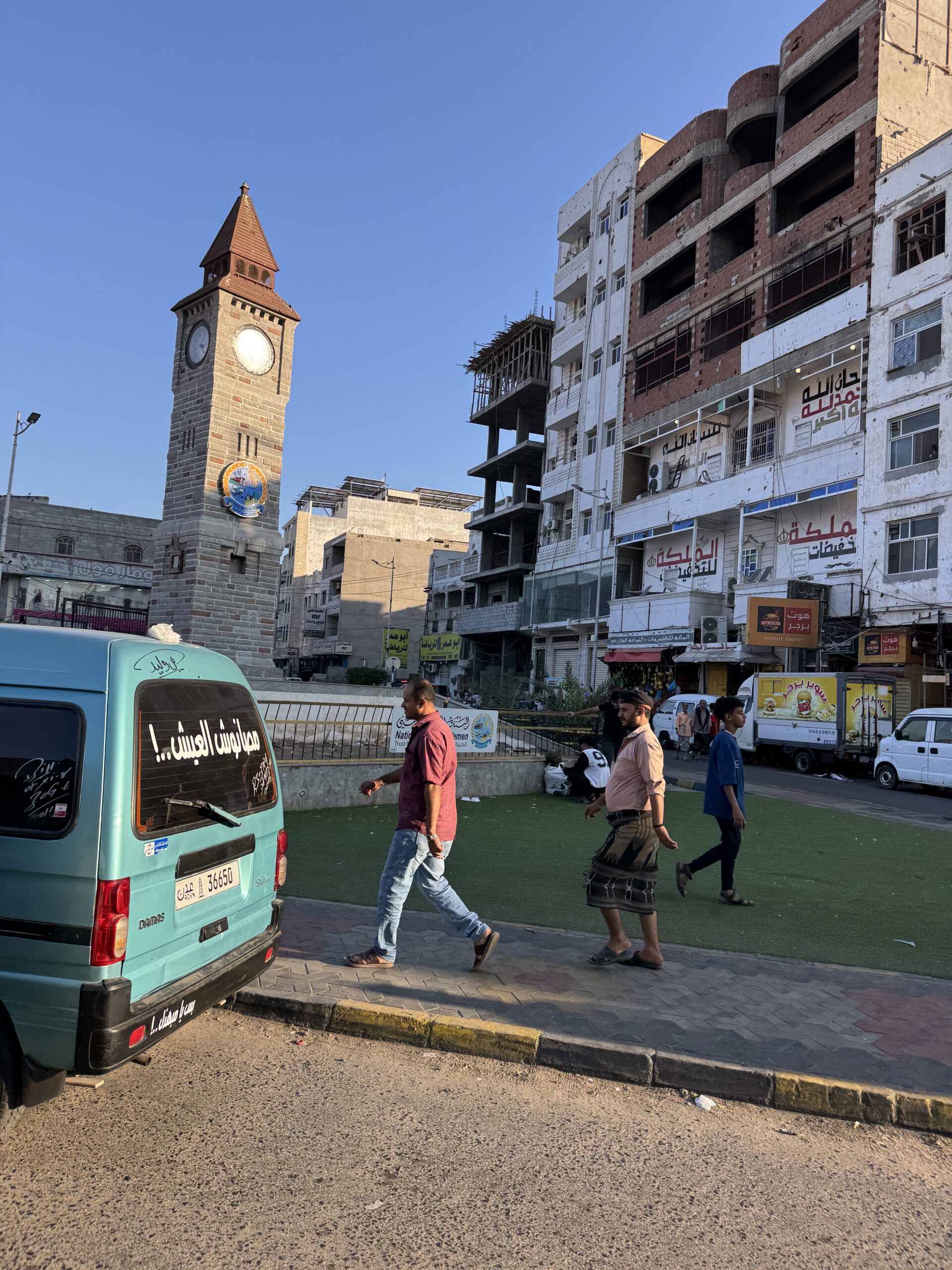
It felt as though Aden was a much more relaxed city than some of the ones we had visited in the east. Women were walking around in just hijabs instead of niqabs, so we didn’t have to cover up quite as much even when we were in busier areas! We saw more men wearing western clothing as well.
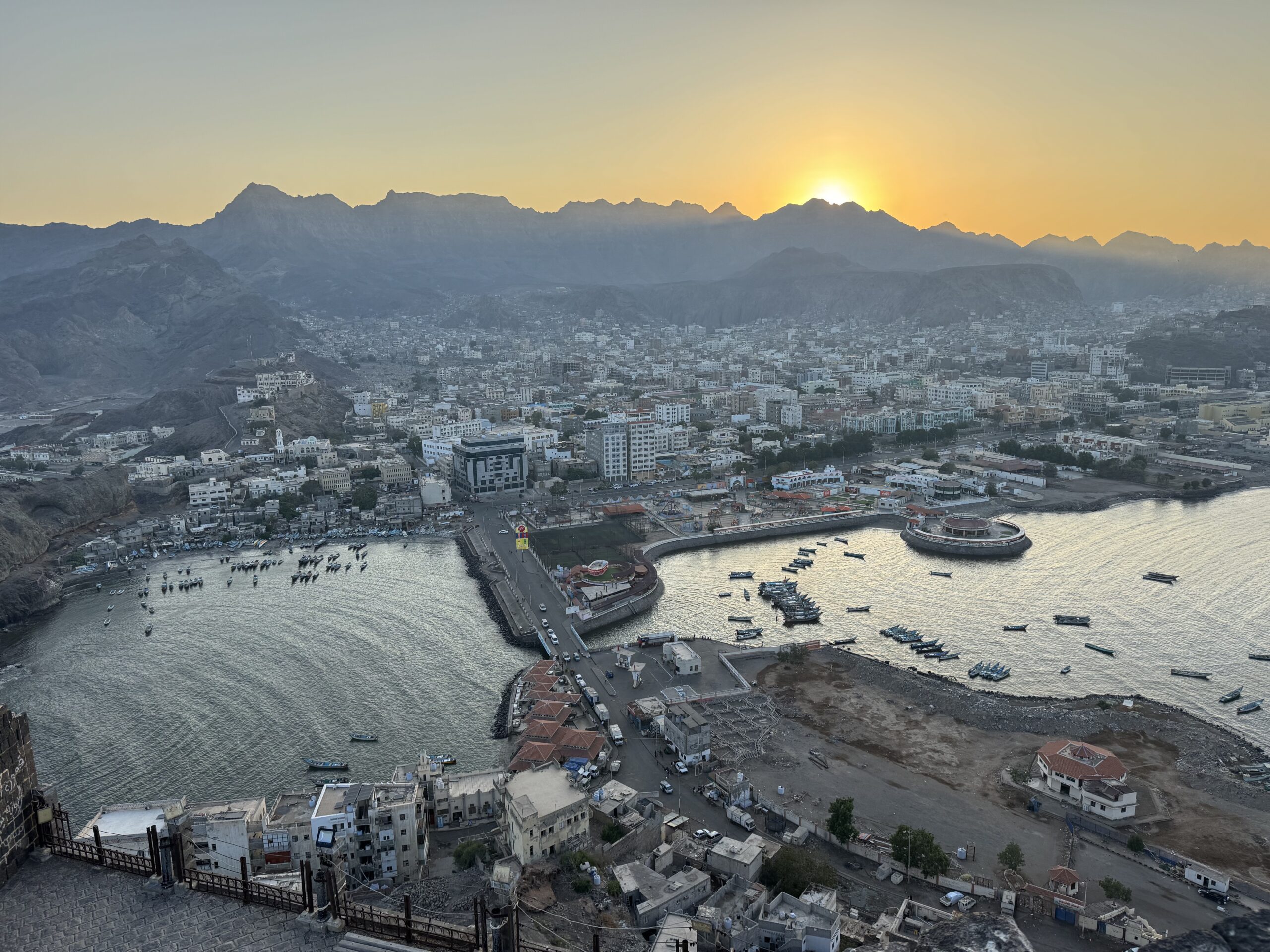
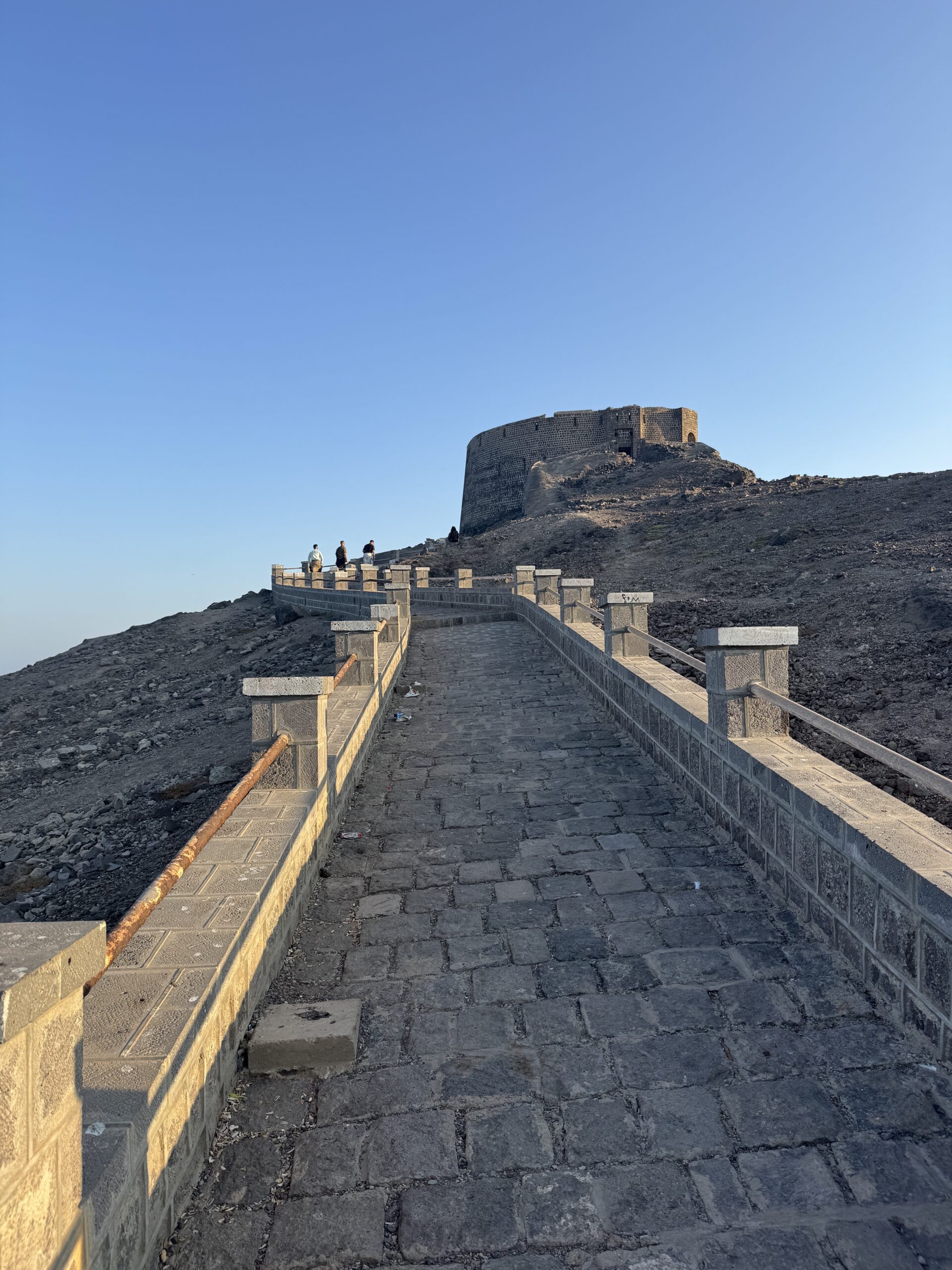
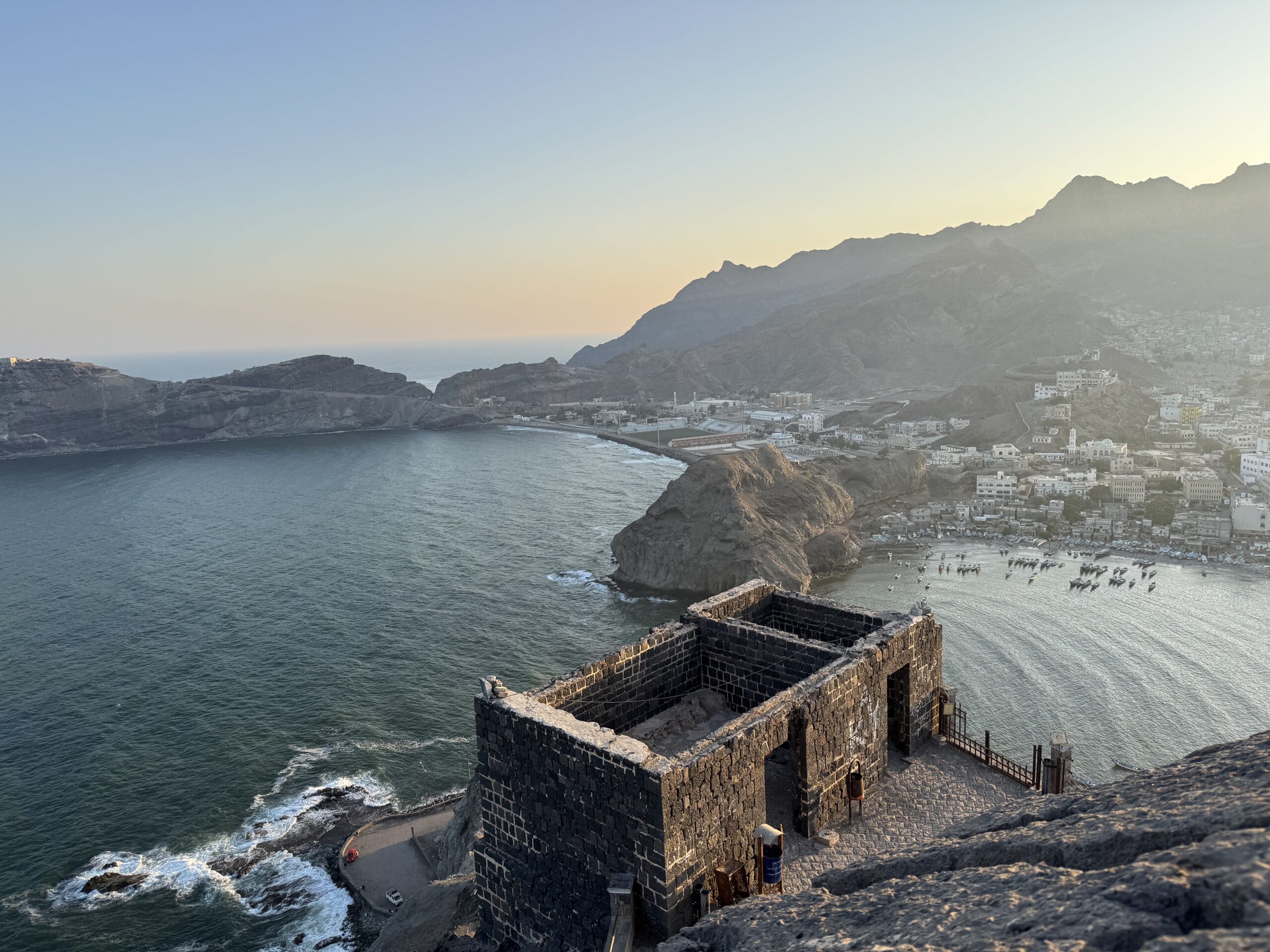
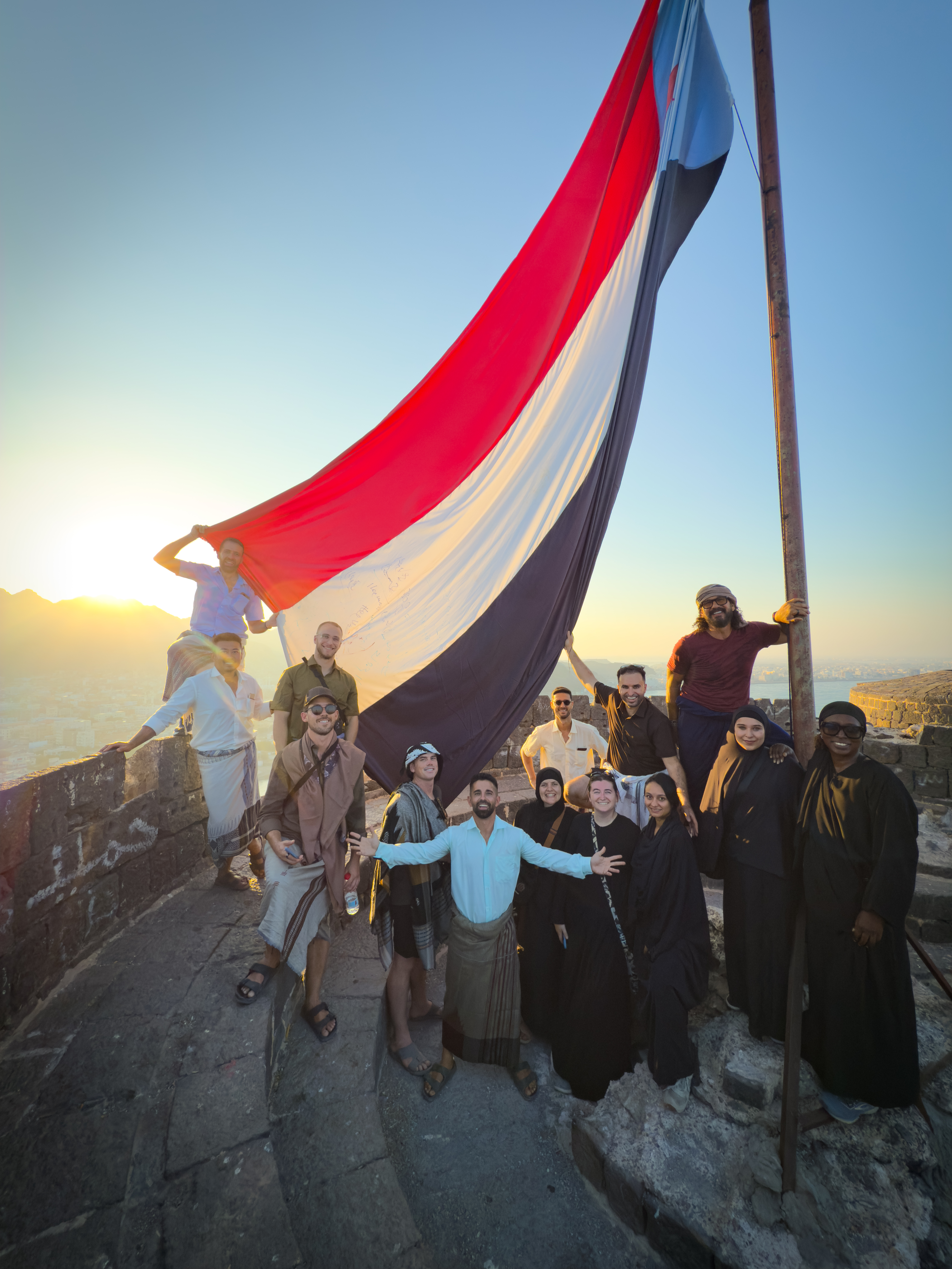
One of the best activities was climbing up to Sira Fortress, which had amazing views. We hiked up to the top a little before sunset so that we could see the city in its best light.
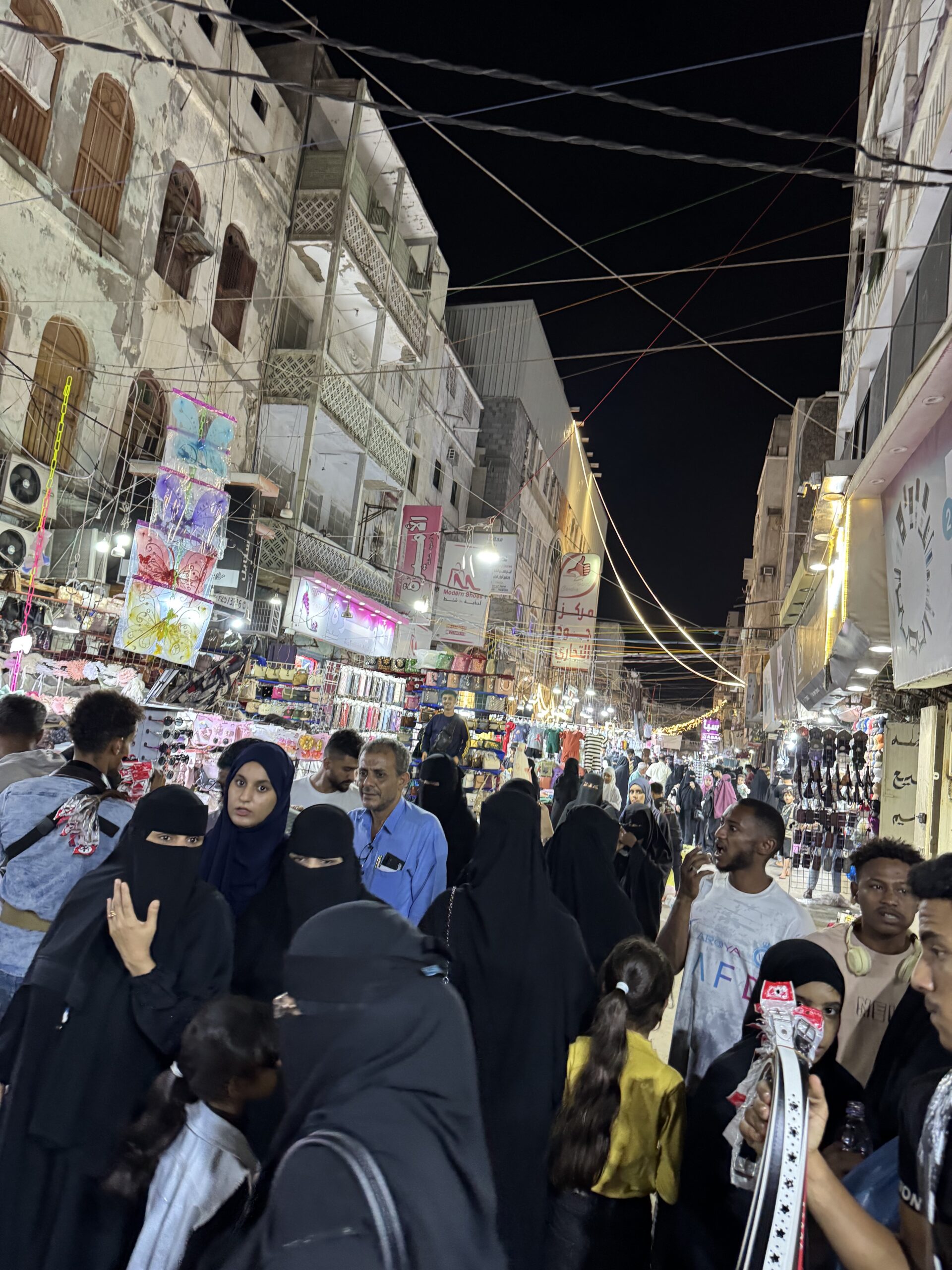
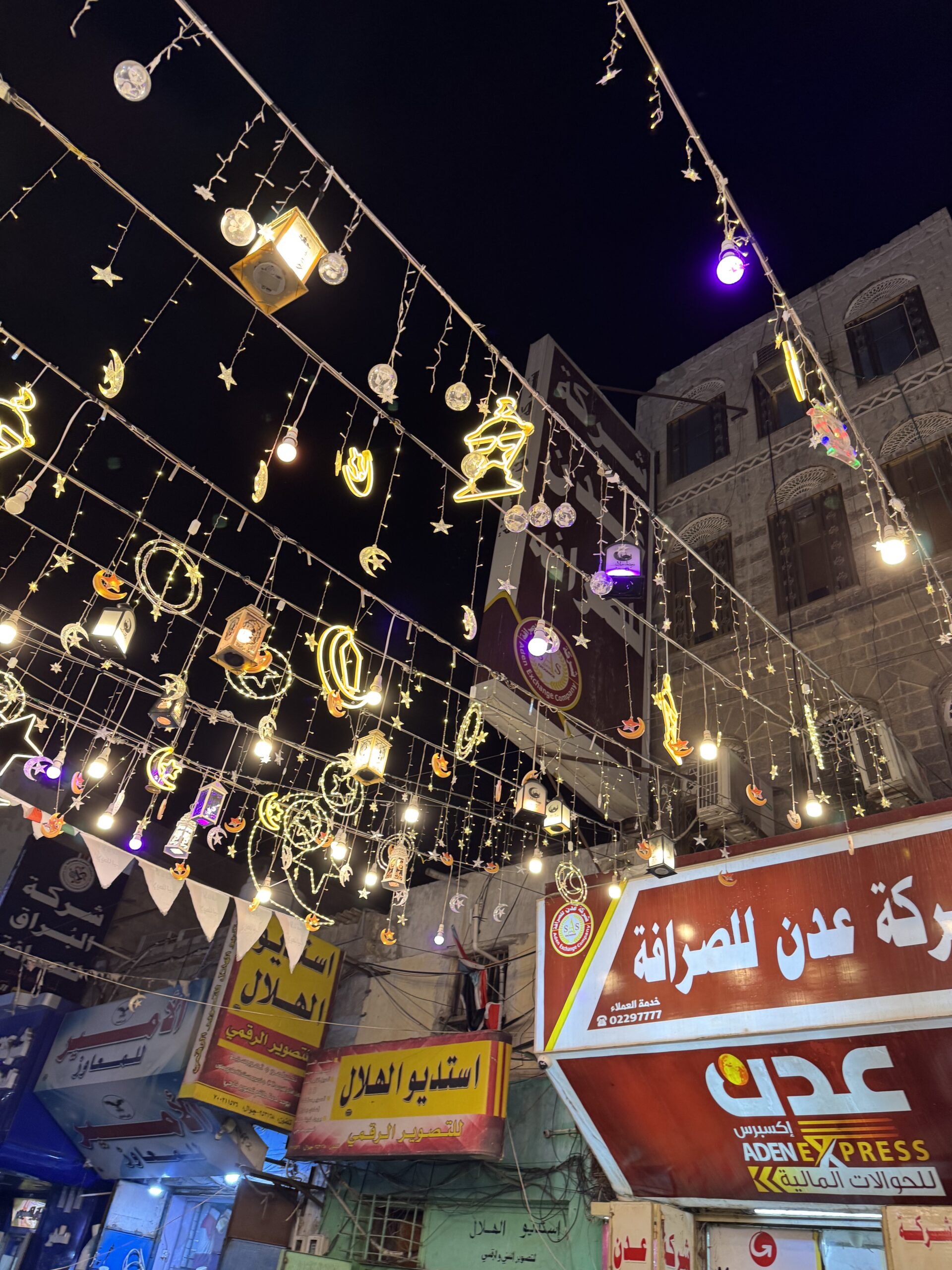
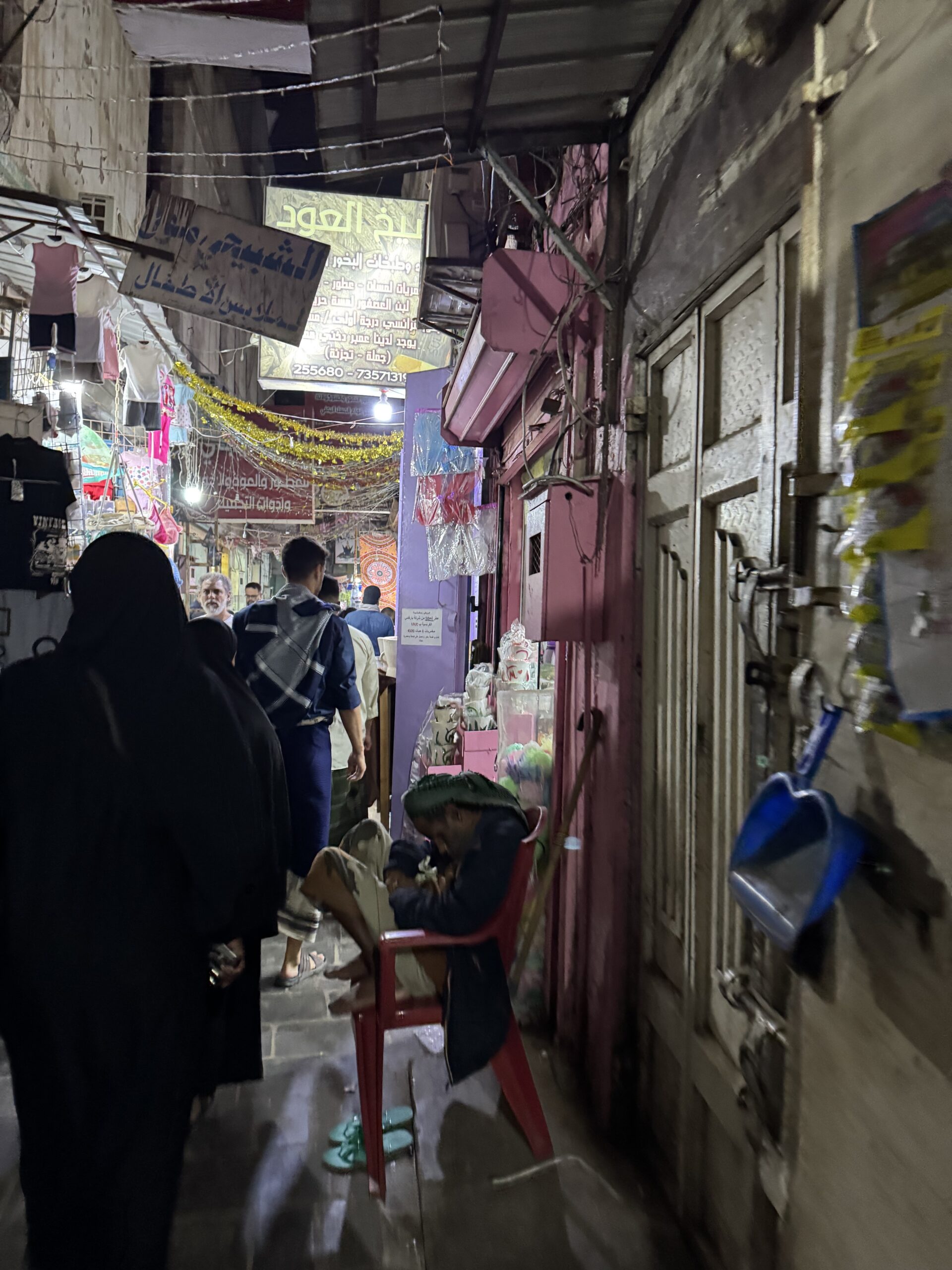
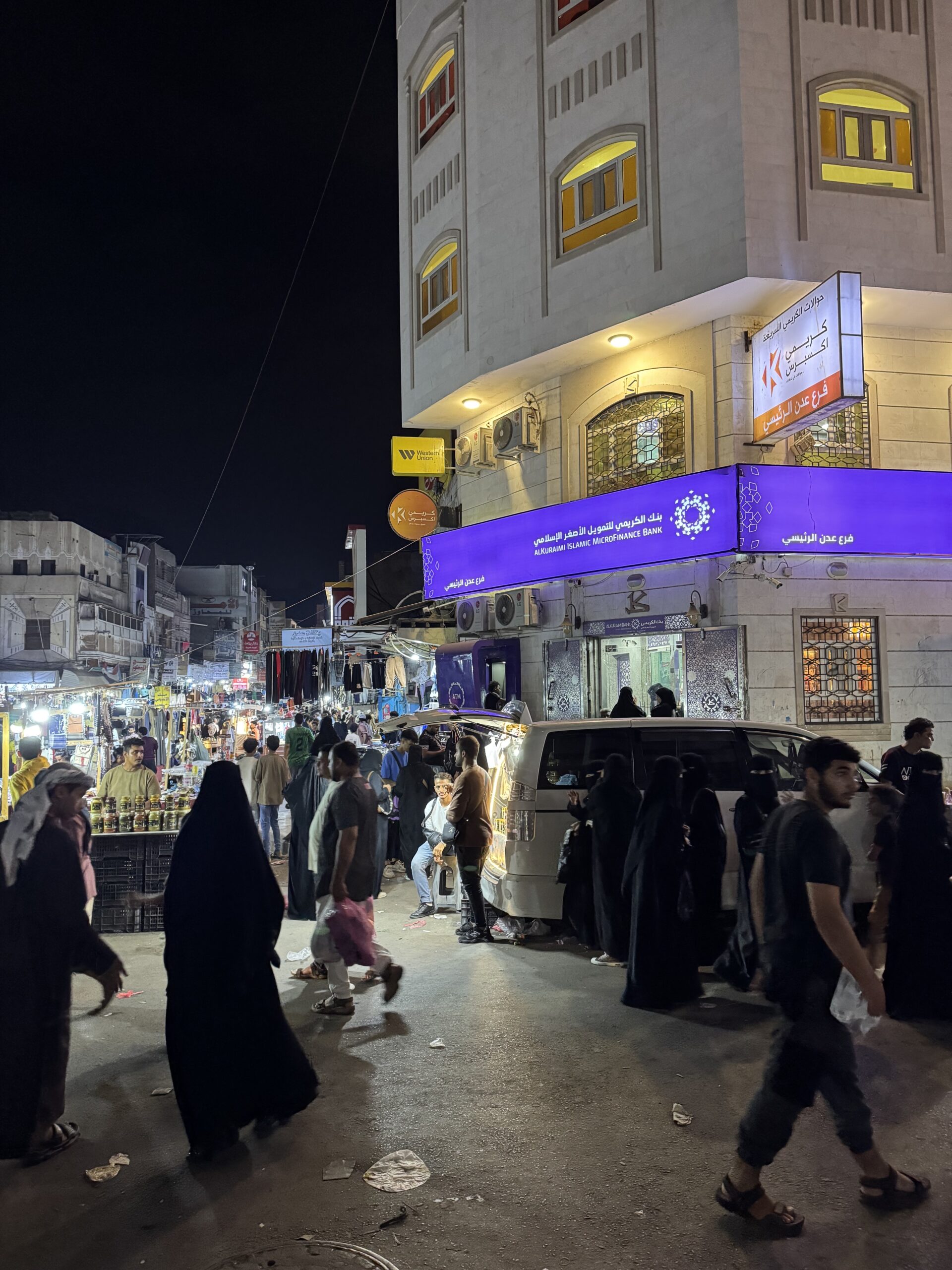
The first night we were there, we went out to the night market, which was a late night. We ended up staying there until 2 or 3 am, and when we left, the market was still in full swing. It’s so interesting to see how the city becomes fully nocturnal during Ramadan. I am curious what the balance of normal life looks like when it isn’t Ramadan – even when I was in Saudi Arabia and Qatar, there was still definitely more life at night and less people out during the day just due to the sun and the heat. But it might not be quite so stark.
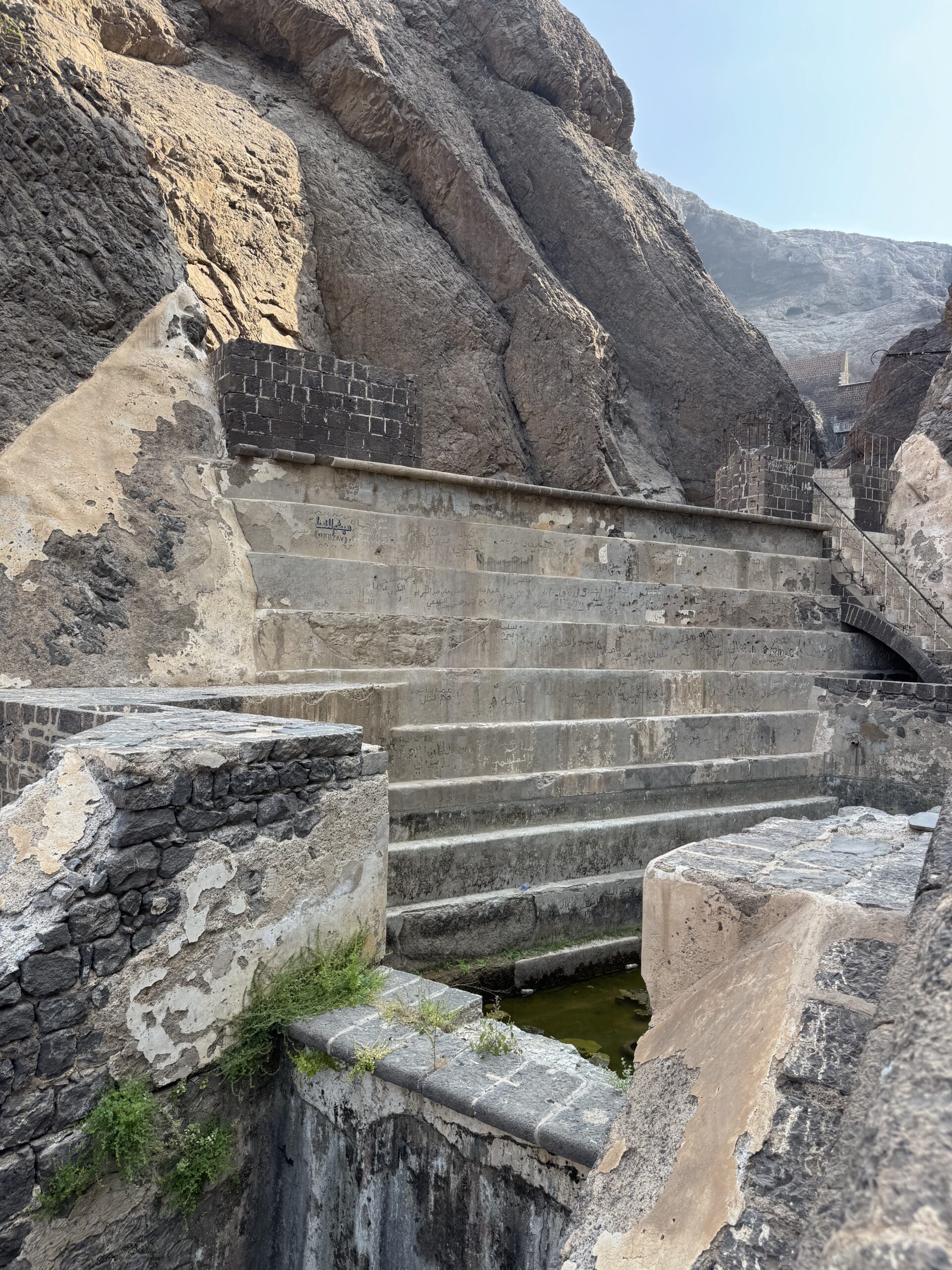
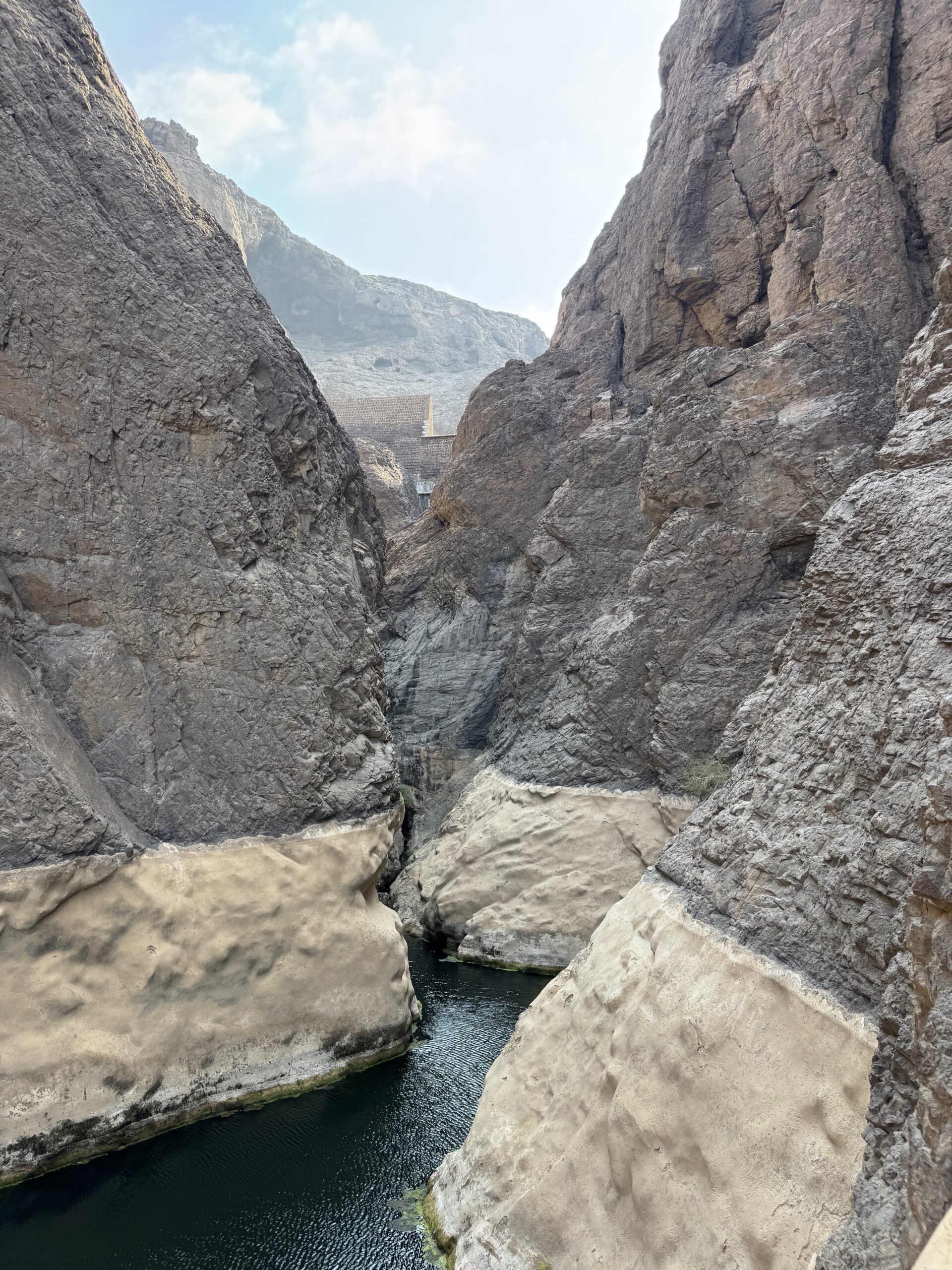
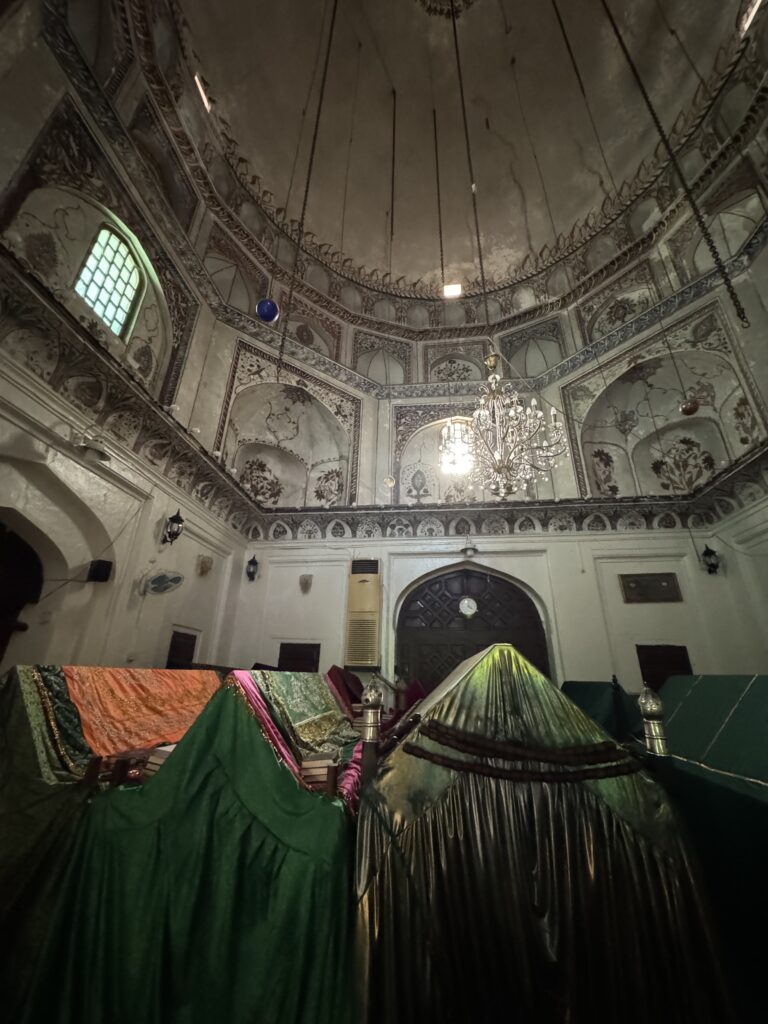
After the late night, we had a chill morning and did a little more sightseeing in the afternoon. We went to the Cisterns of Tawila and the Aidrus Mosque. We were going to try to go to the beach, but it seemed like some sort of VIP was already there and there were too many military checkpoints for us to continue. We ended up just going back for an early dinner, and then we found shisha and nonalcoholic beer (since Yemen is a fully dry country) that we could have on a nearby rooftop. It was a relaxing last day.
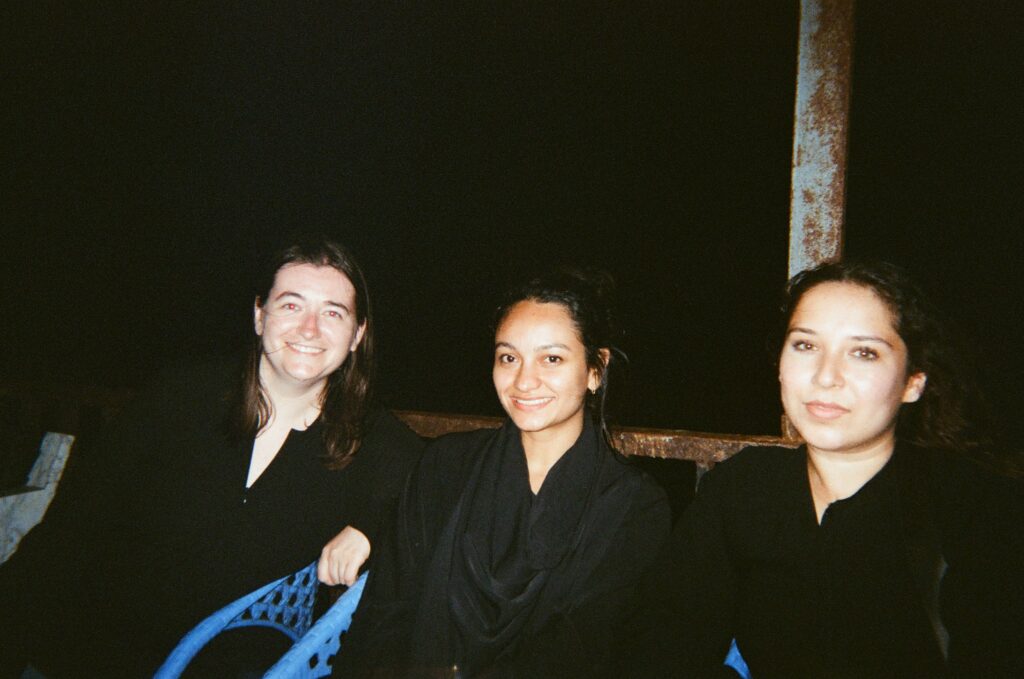
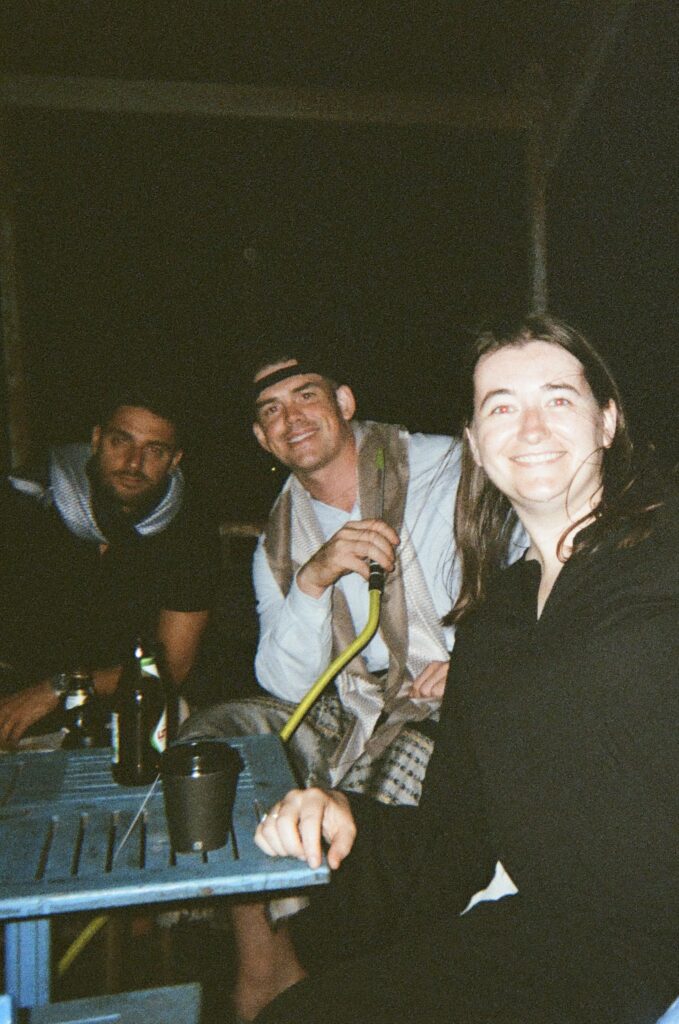
Our final morning was an early flight out to Cairo. We got a military transport for that last journey to the airport – I’d seen the men in front of our hotel, but I thought it was just some sort of hotel security or military that were based around the city. I hadn’t realized they were there for us!
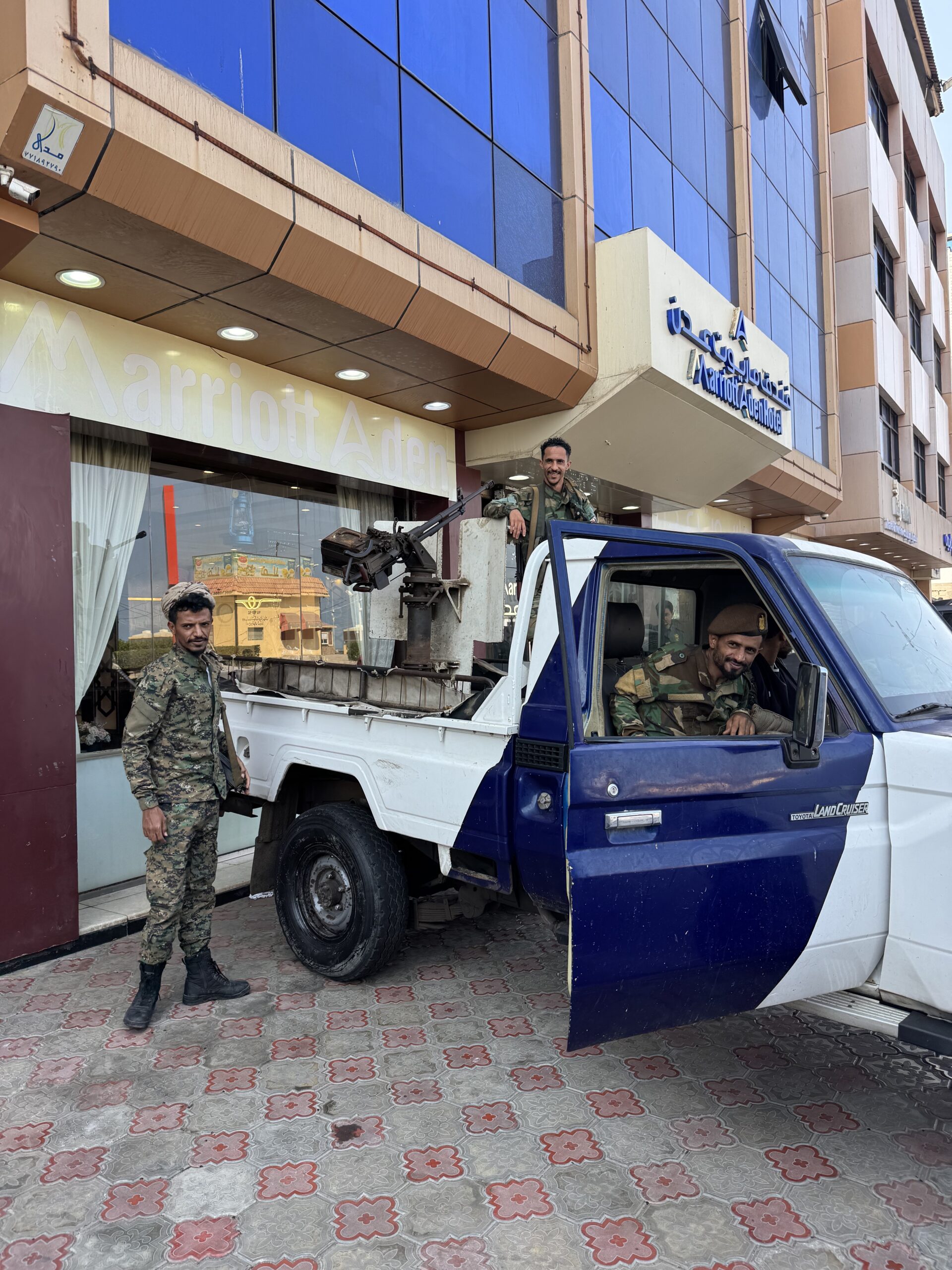
All in all, Yemen was an amazing trip. One of my favorites, which is really saying something. It’s rare to find a place that feels completely unique, but Yemen absolutely does, between the culture, the history, the architecture, and the natural beauty. It was worth the constant heat and the heavy layers to get a chance to explore a place that does not see a lot of tourism or cultural influence from outsiders. I hope that things continue to get better in the north and that the country finds more stability in the future!
